
FREE Vol. 11 No. 10 • August 2011 • melb@indianlink.com.au • www.indianlink.com.au MELBOURNE PO Box 80, Chadstone Shopping Centre, Chadstone VIC 3148 • Ph: 03 9803 0200 • 1 8000 15 8 47 • Fax: 03 9803 0255 Sydney • Melbourne • Adelaide • Brisbane • Perth • Canberra

2 <> AUGUST 2011 INDIAN LINK
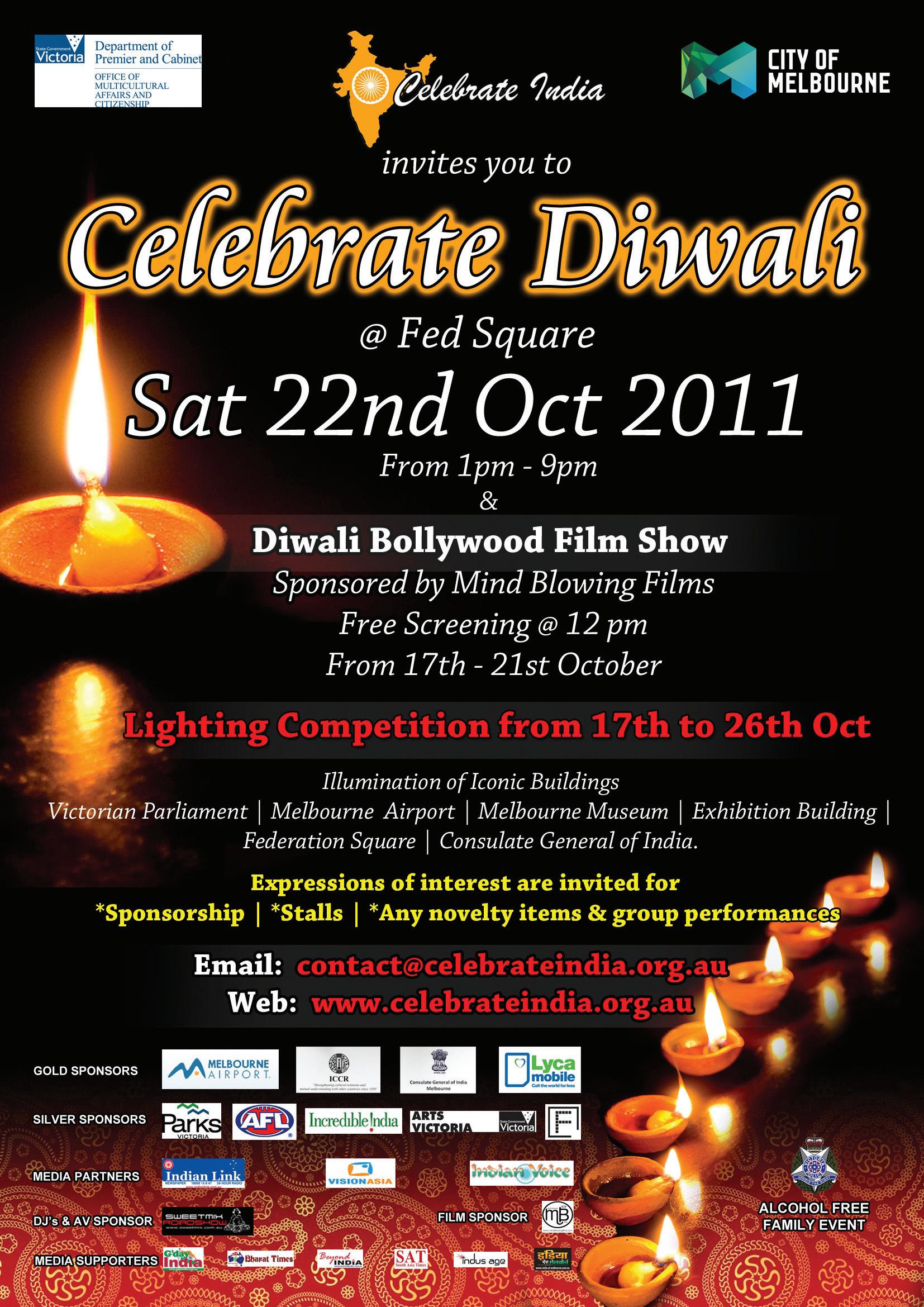
AUGUST 2011 <> 3 INDIAN LINK

4 <> AUGUST 2011 INDIAN LINK online www.indianlink.com.au at home / in car Subscribe to Indian Link Radio for $9.95 each month * Conditions apply: Minimum 12 months subscription, $ 50 refundable deposite call us 1800 015 847 Hindi Music 24/7masti Talkback News
INDIAN LINK
PUBLISHER Pawan Luthra
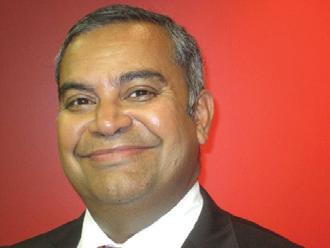
EDITOR
Rajni Anand Luthra
ASSISTANT EDITORS
Sheryl Dixit, Gaurav Pandey
MELBOURNE
Preeti Jabbal
CONTRIBUTORS
Usha Ramanujam Arvind, Neelam Vasudevan, Rachita Saini, Vidya Muthanna, Deepa Gopinath, Sandip Hor, Thomas E King, Farzana Shakir, Ritam Mitra, Roy Lange, Noel G deSouza, Malli Iyer, Simmi Bakshi, Chitra Sudershan, LP Ayer, Sai Narayanan, Rani Jhala, Geeta Khurana, Bimal Bose, Nancy Jade Althea
ADVERTISING MANAGER
Vivek Trivedi 02 9262 1766
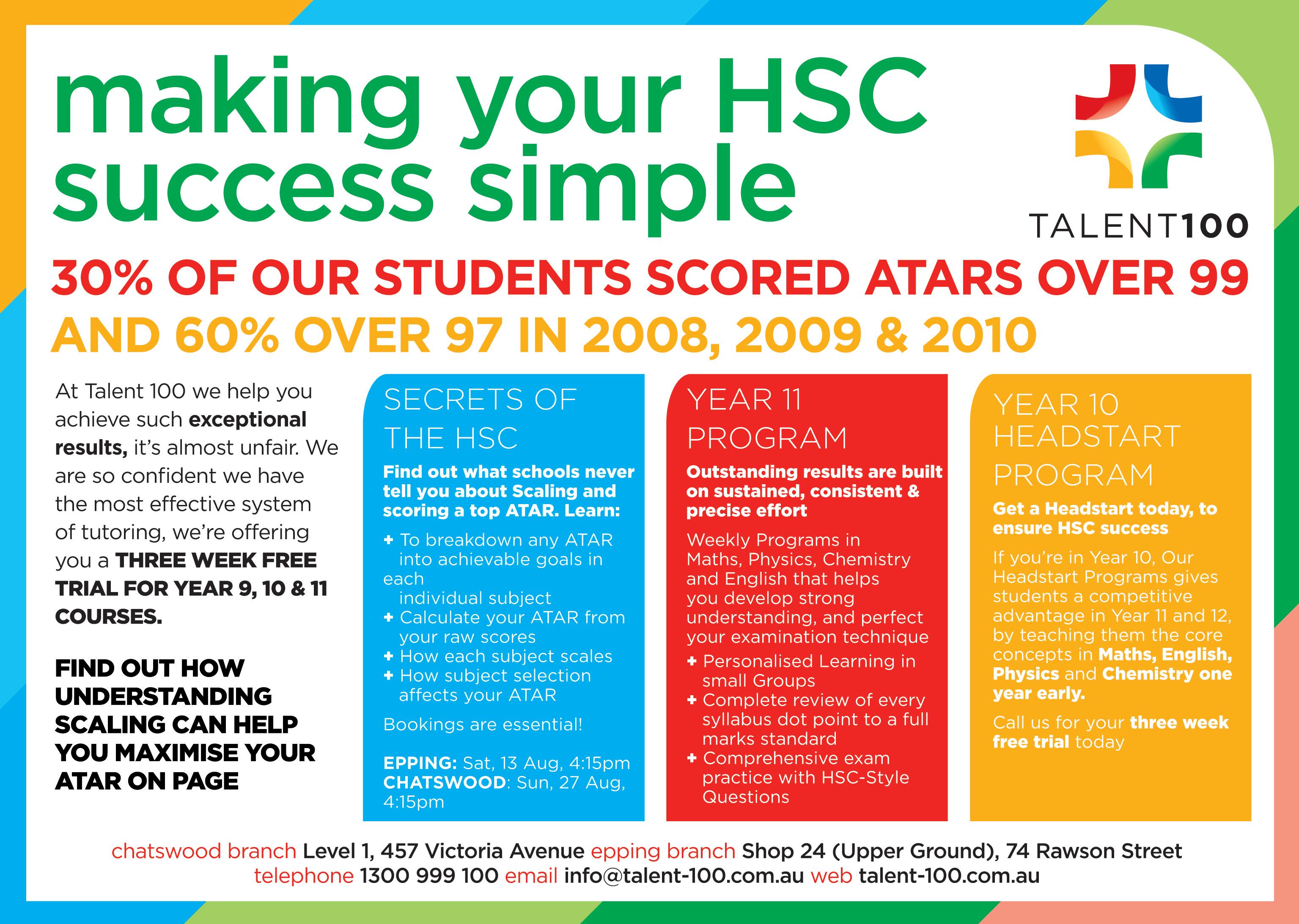
ADVERTISING ASSISTANT
Nitika Sondhi 02 9279 2004
GRAPHIC DESIGN AND LAYOUT
Indian Link Design Department
Indian Link is a fortnightly newspaper published in English. No material, including advertisements designed by Indian Link, maybe reproduced in part or in whole without the written consent of the editor. Opinions carried in Indian Link are those of the writers and not necessarily endorsed by Indian Link. All correspondence should be addressed to
Indian Link
Level 24/44 Market St, Sydney 2000 or GPO Box 108, Sydney 2001
Ph: 02 9279-2004 Fax: 02 9279-2005
Email: info@indianlink.com.au
Resisting the Corruption Raj
India is a country of the ‘Raj’. Down the ages from ancient history to its contemporary present, India has had to endure a different Raj; however with each successive era, change occurs and progress is made into the next defining new type of Raj. Whether it is the awareness of the people or a coincidence of circumstance that ensures this change for better or worse, remains to be seen.
While the Mughal Raj ruled India under one dynasty for over 400 years, it did allow for secularism, sciences, architecture and the arts to flourish. With the advent of the British Raj, there were rapid strides in bridging the gap between the East and the West. While some of the reforms introduced by the British have been condemned by historians, others such as the development of a democratic society, have been globally applauded and testify to the fact that India is the largest democracy in the world. Other reforms such as promoting education, legal reforms and the ability to enjoy free thought and speech are boons that have been present and have flourished in the country since the past 64 years.
The Licence Raj which followed the British rule in India allowed a systematic
BY PAWAN LUTHRA
allocation of resources. While, like all things in life, when control is exerted on the economic aspects of life, regulations and red tape can overtake the set objective. For India, the objective of a License Raj was to curtail the free market, and have demand and supply controlled by a centralised agency. After four decades of fighting against the License Raj, its shackles finally had to be broken as economic constraints were jeopardising India’s propensity for growth. However, this freedom and the demise of the License Raj has given rise to another and more serious rule in India – the Corruption Raj.
Over the past few years as rivers of investments have flowed through India and the demand for businesses and products have exploded, corruption seems to have begun pervading into almost every aspect of its persona. Rather than a sense of fair play in business situations, the ability to influence events by contacts and
underhand payments seem have become the norm when dealing in various activities in the country.
But the past few months have seen the beginnings of a radical change. There have been instances when the Indian public, totally fed up with the Corruption Raj, has now started to ask questions. Headlines in newspapers and reporters on television are now screaming questions at politicians, and vociferously demanding answers. To date, there seems to be more of spin management from various government officials on these issues, as they make urgent attempts to minimise fallout or sweep them hastily and unceremoniously under their lush carpets. But the wheels of justice have begun to turn, albeit slowly, and it seems that retribution may eventually be at hand. There may be no immediate resolutions, after all, there are many reasons to avoid the answers and politicians are masters at the blame-game. But if enough pressure is exerted, the answers to various corruption issues will come to light.
Perhaps this marks the beginning of the end of the Corruption Raj. And the final dawning of a just and truly democratic Raj.
AUGUST (1) 2011 <> 5 NATIONAL EDITION www.indianlink.com.au EDITORIAL
SPIRITUAL
Chinmaya Mission events
Friday 12 August (8pm) to Saturday
13 August (6pm) Ladies Retreat ‘Madhurashtakam – Discovering Your Inner Beauty’ at Chinmaya Sannidhi, 38 Carrington Road, Castle Hill. For registration call Mahal on 0411 899 554. Last date Monday 1 August.
Ramakrishna Sarada Vedanta Society of NSW activities
Sundays, Special Lecture Series
Celebrating 175th Birth Anniversary of Sri Ramakrishna, 10.40 am to 12noon at Vedanta Hall, 15 Liverpool Road, Croydon.
Sunday 7 August Ramakrishna, the Spiritual Oasis. Talks by Cr. Larry Whipper and Rev. Pravrajika Ajayaprana Mataji
Sunday 28 August Sri Ramakrishna’s Advice to Householders. Talks by Dr. D.P.Chaudhri and Rev. Pravrajika Ajayaprana Mataji. For details on above events call 9745 4320 or email vedantasyd@idx.com.au
Multi-faith Forum on Environmental Ethics
Sunday 9 October, 2 – 5pm (1:45 for 2pm start) at Room: PS-EB.G.02, University of Western Sydney, Parramatta Campus. Hindu Council of Australia together with ARRCC (Australian Religious Response to Climate Change), FEN (FaithEcology-Network) and the UWS Multifaith Chaplaincy have organised a joint multi-faith forum to address the moral and ethical issues involved in tackling
the very important problem of climate change, environmental degradation and the prevailing atmosphere of greed, fear and hatred afflicting the humanity. A distinguished panel of speakers representing each of the main religious faiths will address the Forum.
Free admission, refreshments will be provided. Please register online @ www.arrcc.org.au/ecoforum or call 9873 4214; Mobile: 0406 033 704. RSVP latest by 30 Sept. 2011
MISCELLANEOUS
ANSA Open Day
Sunday 14 August, 1pm onwards.
The Applied Neuroscience Society of Australasia will run a conference and public open day at SMC Conference and Function Centre, 66 Goulburn Street, Sydney. ANSA is a not for profit membership organisation interested in promoting brain health and technologies to enhance brain function. Its approach includes diagnosis and intervention for those with brain disorders, and also encompasses peak performance for those wishing to make a great brain even better. Come and learn more about the brain and how to improve it. For more details contact Sue-Ellen Taylor on 0407 130 222/ 02 6688 8019 or email: sueellen.taylor@bigpond.com
Hindi Divas 2011 celebrations
Sunday 11 September 2011, 10.30am to 3.30pm at Thornleigh West PS, Giblet Avenue, Thornleigh. Contact Tara Chand Sharma on 0409 981 355, Mala Mehta on 0412283677 or Rekha Rajvanshi on 0403 116 301. The
Australian Hindi Committee, the IABBV Hindi School students, teachers and parents and ILASA (Indian literary and art society of Australia) take great pride in celebrating Hindi Divas 2011. We request all Hindi speakers, supporters, teachers and schools/students to join in the celebrations and present a united face to promote India’s national language Hindi. For more details contact Mala Mehta on 0412283677 or 94840707 or email: info@iabbv-hindischool.com ; hindi_school@hotmail.com or visit the website: www.iabbv-hindischool.com
Essay competition
Essay competition on ‘Relevance of Mahatma Gandhi Today’ is open for the year 2011. For details email info@bhavanaustralia.org
Crestwood Badminton Association
Crestwood Badminton Association has a 22 year long badminton playing history in Sydney’s Hills District and players of different ethnic backgrounds come to play here. The Association is looking for new members who would like play badminton regularly. The new members will be able to play on Wednesdays from 7.00pm till 10.00 pm and Saturdays from 7.00 am till 10.00am. For more details contact Basker Ratnam on 0459 183 644.
FUNDRAISERS
Dinner in aid of Maiti Nepal
Friday 12 August, 7pm onwards at Urban Tadka Restaurant, 321 MonaVale
What’s On New scholarships for international students
Dr APJ Kalam, former president of India and distinguished scientist and technologist, has demonstrated his support for international students interested in studying engineering and IT at the University of Sydney with the establishment of a new merit-based scholarships scheme.
Under the new Dr Abdul Kalam International Scholarships scheme, eligible international students seeking admission in 2012 to undergraduate and postgraduate coursework programs within the Faculty of Engineering and IT will have 50 percent of their tuition fees covered by the scholarship fund.
10 Scholarships will be available for Undergraduate and Postgraduate Coursework programs.
The Dr Abdul Kalam International Scholarships celebrate his commitment to education, and his endeavours to support outstanding students to develop as future leaders. International students will be encouraged to study engineering and IT through the University of Sydney.
The announcement comes following Dr Kalam’s visit to the University of Sydney in May, when he was awarded an honorary doctorate in recognition of his outstanding global contribution to the profession of engineering.

Professor Archie Johnston, Dean
of the Faculty of Engineering and IT said, “These scholarships represent Dr Kalam’s commitment to education and his endeavours to support outstanding students to develop as future leaders.” He added, “The scholarships are available to all new international applicants, and are timely given the current challenges for international students studying in Australia. The scheme is also part of our ongoing commitment to
expand the faculty’s scholarship programme, giving more students the ability to reach their full potential.”
Applicants must have completed the equivalent of an Australian Bachelor degree qualification with a minimum high distinction average as based on the Australian grading system. Students who have already commenced Postgraduate studies, or students transferring from other
Road, Terry Hills, NSW. A special event for the benefit of Maiti Nepal hosted by Mona Singh, Mrs India Australia 2011. The evening will be dedicated to celebrating a spectacular joy and celebration of Anuradha Koirala’s work and to continue to support the brave girls that she rescues. Ms Koirala has dedicated her life to combating the sexual exploitation of women and children. All profits from the night will be donated to Maiti Nepal to continue their good work. Tickets: $65 per head includes an Indian banquet dinner and entertainment. For tickets contact: Mona Singh 0438 079 781; Kiran Jassal 0423 731 834; Vidya Muthanna 0409 393 686. To donate or find out more, visit www.maitinepal.org
Yaadon Ki Baarat
Saturday 20 August Vijay Jogia and Daxa Chauhan present a charity music night in aid of RAIN seniors group from 5:30 pm. Also featuring Bhangra, DJ music by Mayank and Dandiya Raas. For details email sdevmurari@hotmail.com
The Light for Life trivia night Saturday, 27th August, 7pm for 7:30pm start at the Don Moore Community Centre, North Rocks. Come join a fun filled trivia night with lots of songs and dancing. Tickets are $20, and includes dinner. All proceeds raised will go to Lifehouse at RPA, for the Chris O’Brian Cancer Centre. For tickets, sponsorship or to make a donation, please contact Swati Jain 0412 439 596 or swati86@live.com.au or visit www.lifehouserpa.org.au/index.aspx
Postgraduate programs are not eligible.
The establishment of the Dr Abdul Kalam International Scholarships scheme follows the announcement of the University’s Sydney Achievers International Scholarships program, available to new international students commencing study at the University in 2012.
Dr APJ Abdul Kalam was the 11th President of India. During his five years in office, Dr Abdul Kalam’s focus was on transforming India into a developed nation by 2020. A distinguished scientist and aeronautical engineer by training, Dr. Abdul Kalam advocates that it is possible to work cooperatively for an economically developed, prosperous and peaceful society.
The deadline for receipt of applications and complete supporting documentation (academic and English language proficiency results) is 31 October 2011 for Semester 1, 2012, and 30 April 2012 (for Semester 2, 2012). Applications received after these deadlines will not be considered for the Scholarship. Selection will be based strictly on academic merit as per the University’s admission requirements. Selection will be based on actual results (academic and English language proficiency) and will be made by the University’s Scholarship Selection Committee, whose decision will be final.
6 <> AUGUST (1) 2011 INDIAN LINK
Dr. APJ Abdul Kalam was awarded an honorary doctorate by the University of Sydney in May this year.



AUGUST (1) 2011 <> 7 NATIONAL EDITION EYES TAR EYEWEAR OPTICAL SHOP IN STRATHFIELD 20 years in optical services L owest prices, High Quality Cheaper then India, very superior quality Optical glasses FROM $ 69.00 Convenient & Reliable All brands available Alrose office Suite 4, Level 1 7-9 Churchill Avenue, Strathfield 2135 50 meters to station, opposite plaza parking Same level as Webstation All about glasses & contact lenses Booking Essential Contact Kim on 8004 0212 Working late nights 6 days a week strathfield optic studio
Chill out with us this season
BY NEELAM VASUDEVAN
So what if the temperatures have been dipping low lately? In the last few weeks, there was enough dhinka chika in the sound waves to keep the hearts warm, especially for those tuned in to Indian Link Radio
Our listeners were treated to Deepika Padukone’s chutzpah, who spoke about her role in the much awaited film Aaarakshan; then there’s all the talk about the attractions of the India Day fair; and Australian High Commissioner to India Peter Varghese candidly shared his views in an exclusive interview with our CEO Pawan Luthra.
Then there was, as usual, loads of latest music and a kismat khuli surprise for lucky listeners’ who won tickets for the movie Singham!
Let’s begin with our LIVE SHOWS.
Come rain or shine you can bet the weekday mornings feel brighter with devotional and light songs we bring you.
SHRADDHA ARJUN SubahSubah

Mon-Wed 7-9am and Salaam
Namaste Wed-Fri 10am-12pm
Mornings with much enthusiasm and flair – Shraddha brings to you the world on your radio, covering varied topics covering devotional music, technology, books, food, music and quizzes.
From Romeos to recipes, there is no stopping this radio host of ours who is always keen on bringing you more interesting stuff. Morning ho ya midmorning, you can catch Shraddha and her giggly voice on her shows without fail.
SAGAR MEHROTRA SubahSubah

Thurs-Fri 7-9am
Sagar brings to Subah Subah a great voice, an impeccable style, and great songs.
Topics covered in his previous shows were primarily chat driven with information shared from admirers of all ages. Sagar recently aired a new segment on spirituality, astrology and mysticism which turned out to be quite a crowd puller.
“Your chat show on astrology topic that covered effects of sun and moon on different raashis was incredible” – Ruchika & Krishnaji
“After a long time we are getting some meaningful information” –Smita from Melbourne
“Your song selection and presentation style is nice” – Preeti from Sydney
In the Devotional segment, we brought to you stories related to Lord Hanuman with an important sawaal: If anyone knew what happened to him after Shri Ram proceeded for heaven?
The morning quiz question was: What was the name of the two gatekeepers of Vishnu who were cursed by son of Bramha? (Hint: they took birth on earth thrice as demons and were killed by Vishnu).
While this seemed to have stumped a lot of the listeners, the endless calls to get it right added to the fun on air!
From the building industry, expert Harjeet (Harry - roof restoration expert) was on air recently to talk about the importance of roof restoration, how often should it be done? can it be done in units as well?
A shabd based segment turned out to be incredibly enjoyable on air with the last two words being Baarish
Coming ahead on listener’s requests, a Financial be revealing to you the “Key to Financial Success”.
Don’t forget Pandit Jatin Kumar Bhatt of Shri Mandir Auburn joins Sagar at 7.30am to take you back to your customs, festivals and traditions.
Coming up on this show – a detailed discussion on various astrological concepts.
PRIYANKA TATER Meter Down and RaatGayiBaatGayi
Tue and Thur 5-9pm
He considers himself as much Australian as Indian: “I am an Australian of Indian origin and am proud of it.” Listeners had the pleasure of being a part of a memorable meeting in the studios with Dr Yadu Singh,
the President of CIA (Council of Indian Australian Inc), who’s leaving no stones unturned to make the very first India Day Fair, a grand success.
After interviewing Dr Singh in our studio, Priyanka realised just how passionate he is about involving the Australian community in the India’s Independence Day celebrations.
Priyanka lights up your very thandaa evenings with her amazing Radio shows. Recently launched segment Lights, Camera, Action saw the rebirth of the life and works of Guru Dutt and Bimal Roy who had their birth anniversaries on 9th and 12th July respectively. The latest segment on Thursday spoke of the friendships of Bollywood.
RASHMI CHAUDHRY Meter Down and RaatGayiBaatGayi Mon, Wed and Fri 5-9pm

Not long ago, the long and leggy Deepika Padukone was chatting away with chirpy and chubuli Rashmi, sharing her experience of working with the legendary Amitabh Bachchan in Prakash Jha’s forthcoming film Aaarakshan. So, what does she think of Australians and the issue of reservation in India? Maybe the film can get the younger generation thinking on the issue and inspire some changes. I’m sure you can’t wait to listen to the interview which is going to be on the radio very soon.
PRIYANKA RAO Sat 9am-12 pm

Saturday mornings brought on air the surili Priyanka as she took you through the very latest tracks and more gupshup on your radio. With focus on the events gone by in Australia and India Hafta Bhar; the TOP 10 of just about everything she could lay her hands on, entertainment news and box office round up of new releases. That was Priyanka for you!
ANUP KUMAR Sat 12-4pm

Our very own Love Guru with his amazing aawaaz picked up the three most important words “I love you” and that induced a great participation from listeners. Not only did they express their love to their maashooks, but also to their friends, family, relatives and pets. In love, as Anup always says, there are no boundaries. Sharing the spirit of LOVE with listeners on air is an interesting journey for sure.
As a tribute to the “Suron Kaa Baadshaah” Moh’d Rafi on his 31st death anniversary (the legendary singer passed away on 31/07/1980), the day’s mood was full of love in the air with unforgettable songs of Rafi sahib. Listeners also contributed with their choices of songs.
As usual, traditional folk music will continue between 2 and 3pm, where one can listen to a very rare blend of music from artistes from Fiji, Trinidad, and Suriname.
Due to the numerous demands for more Punjabi songs, the 3 latest and most popular songs on Sat @ 3pm seem to be dominated by mast Panjabi!!!, This is followed my more masti and hasi mazaak on “Hastu Hardam” from 3-4pm.
RACHITA SAINI
Sun 9am-12pm
Our very own express train “dhadak dhadak” says “the best thing about being a radio host with Indian Link Radio is the interaction you
family ...they become your friends over the phone and most importantly they share their happiness and sorrows with you. I have listeners who share their problems with me including their tears.”
With listener Salma Siddiqui (one of our oldest now catching up on our shows on the web) ringing in from the US, it only goes to show that Indian Link Radio is utterly addictive!

MANOJ
MENON LazyLamhe
Sun 5-9pm
Sunday night revved up to ‘A Mohd Rafi special’ on Retro Magic segment. Also a curtain raiser for Antaakshari from August onwards was on the cards. Manoj’s easy going nature, super presentation style, quiz shows and handpicked best songs surely make our listeners enjoy their lazy lamhe listening to him! Blessed with a great voice, Manoj will be starting off with Antaakshri on air very soon. So all you antaakshri enthusiasts must watch out for this space for updates. Coming up on the radio will be special shows on Independence Day and Raksha Bandhan, so do lend us your ears and make it a great show!
NEELAM VASUDEVAN


Thats all for the LIVE shows folks! Now let’s move to our music programs that come to you all days of the week when you have no host or dost on air.
From midnight to morning, from afternoon to evening and till late at night, Indian Link Radio is on playing the music you love 24/7. So who is catching your moods? Read on to find out. Catch her at any time and she can tell you what’s playing on air (even in her sleep). Yes I am talking about ME! I bring you the very best of music across all genres from Hindi cinema and pop, from the hits of magical 60’s to the very latest and racy tracks of totally 2000.
Treat yourself to relaxing music all afternoon with the very latest 3@3pm. (Last fortnight we played Saathiya from Singham, Phir Mohobbat from Murder 2 and Khwabon ke Parindey from Zindagi Milegi na Dobaara).
You have more masti in store at 4-5pm every day. Saari Saari Raat with more melody starts from 10pm every day. For Ghazal fans, Tuesday and Friday nights hold a special treat. Raat ke humsafar, Superstars, Kal Aaj aur Kal, Love songs, Director Special, Dil ki Kalam se, Chalte Chalte (theme based) are just a few segments to name for the night ka safar with me. You can now get your updates almost daily on Facebook as well.
Currently updating our music library with me is the much loved Rajesh Thakur who was a radio host with us. That means there is more music coming your way. So music lovers you want more don’t you?
Tune in to Indian Link Radio 24/7 worldwide on web – www.indianlink.com.au or subscribe in Sydney and Melbourne for $9.95 per month.

8 <> AUGUST (1) 2011
www.indianlink.com.au
RADIO
Here’s all that we at Indian Link Radio have been up to this winter, and why we can be the help you are looking for to keep the winter blues away
PRIYANKA TATER
MANOJMENON
SAGAR MEHROTRA NEELAMVASUDEVAN
ANUP KUMAR
PRIYANKARAO RACHITA SAINI

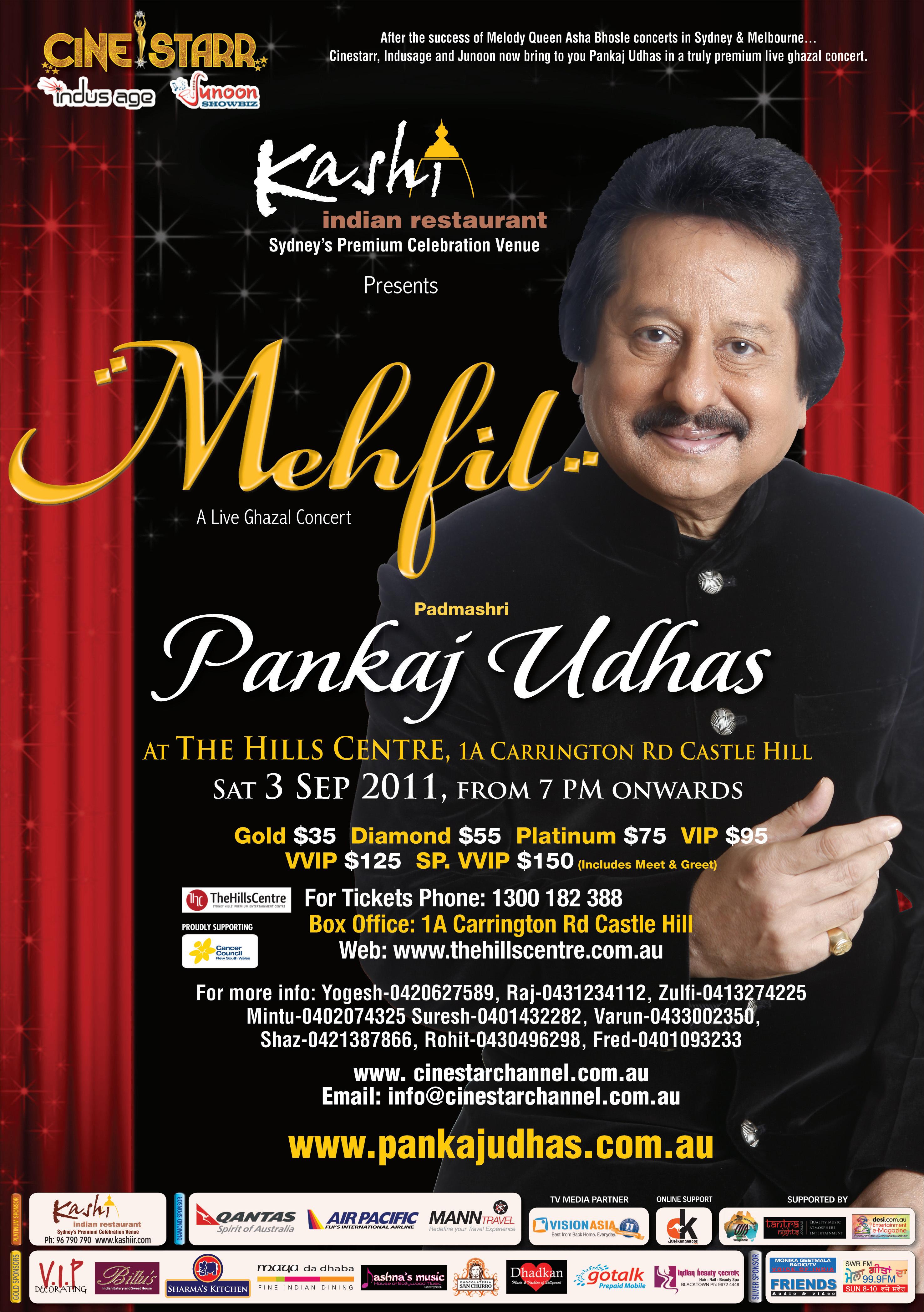
AUGUST (1) 2011 <> 9 NATIONAL EDITION

10 <> AUGUST (1) 2011 INDIAN LINK

100 <> AUGUST (1) 2011 INDIAN LINK

AUGUST (1) 2011 <> 11 NATIONAL EDITION
Young at 64
How would you picture India as the country celebrates its 64th year of Independence?

As a pristine Mother India epitomised by the immortal Nargis, toiling, suffering for her children?
Or as a young, vibrant, designer khadi shirt and jeans clad youth, toting a laptop bag talking on an iPhone, while walking towards a waiting Mercedes Benz?
It’s hard to tell, isn’t it? In 64 years, India seems to have revised the ageing process and is now being wooed for its youth and vitality by many other nations who seem to be well past their prime.
So here is a snapshot of contemporary India in 64 avatars in no particular order, that make India unique…Jai Hey!
1. Hooray for Hazare!
Anna Hazare has opened a veritable can of worms with the Lokpal Bill. But after a long and hard road of denial, dithering and drama, it’s finally making slow and strong progress. Much thanks to the youth of India who are looking for serious change. Well done!
2. Telengana trauma
To divide or not to divide, that still remains the question with the forming of an independent Telengana state, much to Andhra Pradesh’s annoyance. So much has been said about the subject, and much, much, more remains to be said…so, enough said!
3. New faces of the nation
They’re a breed of young politicians spawned in an era when Facebook and Twitter rule people’s lives and opinions.
Rahul Gandhi, Omar Abdulla, Varun Gandhi, Milind Deora, Sachin Pilot, C R Keshavan, Rajeev Gowda, R P Singh, Mavendra Singh, Sandeep Dikshit and Jyotiraditya Scindia are just a few names to watch as the nation unfolds its future glory. These street-smart political scions have grown up in the midst of wealth and power. Armed with business degrees and a fair bit of practical knowledge, they have the potential to reshape the nation. Whether they succeed in vesting the reins of power from our stolid 70-something leaders remains to be seen.
4. The beaus of Bollywood
Oooh, they’re not just eye candy, this young breed of actors, which includes the likes of Imran Khan, Ranbir Kapoor, Neil Nitin Mukesh, Prateek Babbar to name a few, are proving their worth as actors and steadily nudging the Khans off the big screen. So watch out, Aamir, Salman, Saif, Shahrukh… and get your kids into the industry as soon as you can!
5. Bolly belles
And let’s not forget the girls as Sonam and Sonakshi get ready to drive the industry. Diva power is still going strong though, with Kareena, Katrina, Bipasha, sizzling on the screen.
6. Well, hello Hollywood!
Aishwarya Rai carried the promise of
www.indianlink.com.au INDEPENDENCEDAYSPECIAL 12 <> AUGUST (1) 2011 INDIAN LINK
As India gears up to celebrate Independence Day, there are many reasons to believe that its time as a global power has dawned at last, say USHA RAMANUJAM ARVIND and SHERYL
DIXIT
Indian army soldiers perform at a sky-diving display in Kolkata.
Photo: AP Photo/Bikas Das
making it big in Hollywood, but Abhishek and Bollywood seemed much more enticing. The very talented Om Puri has also made his mark on international cinema, but now with Anil Kapoor hitting the scene, it seems that Hollywood’s slowly dropping its condescending attitude towards glitzy lil sis Bollywood. And about time too!
7. Lasting legends
Naturally, AB! Whether we like the fact that Mr. Bachchan is all over the internet posting most of the details of his life to friends and fans, he’s still the living legend of Indian cinema, like his mate Rajinikanth down south. So if you see them in their everlasting youthful avatars, refrain from sniggering and bow your hands in obeisance to these masters of moviedom.
8. New breed of
films
Wow, how the industry has grown since those days of running around trees! Now we have hugely successful psychotic thrillers such as 404 that can scare the pants off you, black comedies such as Delhi Belly, airy love stories such as Zindagi na mile dobara and drama/thrillers like Murder. And that’s just Bollywood! If we include the whole nation, we’d need more than a couple of issues to do them justice.
9. Holy moolah!
Rs 1 lakh crore or USD 22 billion – that’s the estimated value of treasure found in the Sri Padmanabhaswamy Temple in Thiruvananthapuram. Six secret subterranean vaults were piled high with jewels, jewellery, gold coins and gold statues which have lain untouched for hundreds of years. The temple is currently under round-the-clock security and an inventory is being undertaken on court order. What a fantastic find!
10. Gandhi khadi

62 years after the Mahatma’s death, it’s heartening to see that his legacy still lives on. Apart from his quotable quotes which are still in use, khadi has now become a major fashion statement. Designers globally have begun to recognise and promote homespun cotton, and our younger netas have taken it a notch further. What a win for the Mahatma!
11.
Movin’ groovin’ music
The amazing thing about India is that, despite the pressure to westernise and modernise, there’s still a strong and healthy respect for the traditional. So while the country’s moving steadily into the realms of contemporary, rap, fusion, hip-hop, jazz and any other genre of music, the industry still retains the charm of its ghazals, ragas and the purity of its classical music. And it has a long way to go…
12. From kathak to tap

Yes, the art form of dance is currently skyrocketing from young kids learning the basics of ballet and jazz, to others who put their heart and soles into bharatnatyam, kathak and odissi. Everything works these days, but most exciting of all are the fusions of classical and contemporary which make dance purists from both genre tear their hair out in reluctant admiration for these talented artistes.
13. Reality drama
Elaborate costumes and sets, or simple settings, theatre is making a big impact in the India of today. From street plays performed by budding actors and relating to pressing issues of social justice, to performances in the sacrosanct, but perhaps slightly seedy atmosphere of Mumbai’s Prithvi Theatre, the stage is now bold enough to highlight issues that were hitherto considered taboo. Homosexuality, abuse in all its myriad ugly forms are now making powerful statements above the conventional drama and comedy routines on stage. More power to the actors!
14. Fashion fiesta
Wow, is this the fashion era for India! Nowadays, apart from the glam and gorgeous models strutting their stuff on the ramp, you have celebrities taking over. Sportspeople, movie stars, TV stars, industrialists, entrepreneurs are all taking the plunge at being in the spotlight. And why not? With everything from designer wear to jewellery to flaunt, it’s a great platform to feel good and look great. And now that the international arena of fashion’s taking a good close look at India, it’s the time say: If you’ve got it, flaunt it!

15. Cuisine
When it comes to cuisine, India is no longer just national. Its not just about finding authentic idli sambar in Assam, nor about the range of Italian and Mexican available in abundance. Now specialty restaurants offer organic, contemporary and fusion cuisine, all tastefully prepared to suit the ever-experimenting Indian palate, and with the finest of spirits to make the meal memorable. Depending on your propensity to spend, you can dine in style at the Taj or have a wada pau and masala chai just around the corner. Either or, you can bet it will be a genuine experience.
16. Lifestyle
How do you kill time on an overnight trip by third class AC sleeper, travelling from one city to another? You browse the net on your laptop, your wife will converse with her family on her iPhone, your son will keep busy with his iPad and your daughter will be busy with Barbie on her DS. Yep, a bus ride
over one of Mumbai’s many flyovers offers a glimpse into tiny rooms housing families in near-decrepit buildings, but most have 48” plasma screen TVs. Aaah, India for sure is a consumer’s paradise!
17. Artistic expression
Painting and sculpture have come a long way from the visual expression of the past, as artists now seek to make a statement through their art. And sometimes those statements can be pretty bohemian in attitude, outlook and finished product. But artists are finding increased respect and acceptance not just nationally, but on the international arena as they carry forward India’s age-old tradition of art.
18. Culture
Stand on any main street in India, and look around you. There are vestiges of the country’s culture in every nook, from the tiny temple basking in the shade of a tree, to the stunning array of colours adorning a sari shop. From the panwala dispensing his wares to a largely male clientele at the corner, to the spanking new mall down the road selling Gucci and Choo. In some cities, stray dogs wander around with impunity, and occasionally a cow will halt in mid-stride to contemplate the chaos of traffic weaving its way around her, to the backdrop of highrise buildings.
19.
Shaadi, simplified
India’s youth have revolutionarised the concept of arranged marriages. No longer will parents decide on who their children will marry; they’ll simply give them their expectations. And there’s always a match to be found out there, thanks to the innumerable matchmaking portals on the net. We have yet to see statistics on the success of these marriages, but they’re certainly the ‘in’ thing now.
20. True to tradition
How lucky are we that people in India still insist on the 9-day weddings and a million guests, although admittedly, the breed is a dying one as more and more people opt to marry in Bali these days! But if you have the moolah and are willing to make a splash, there’s nothing like tradition to make an occasion memorable. From the mehndi ceremony to the 15-hour long religious ceremony presided over by 12 priests, it’s tradition all the way. Of course, this extends to the celebration of our myriad festivals as well.
21. Booming
economy
With the GDP pegged at 8.6%, India is currently the tenth largest economy in the world. A critical problem facing India’s booming economy however is
the sharp regional variations in terms of poverty, infrastructure and socio-economic development. UP, Bihar, Chattisgarh, MP, Jharkhand and Orissa, which are home to a third of the population, are also the poorest states.
22. Growth of industry
Post economic liberalisation, Indian industry grew manifold, accounting for nearly 28% of the GDP and employing no less than 15% of population. The boom areas of course are telecom, IT, textiles, chemicals, pharmaceuticals and food processing.
23. Expanding exports
India’s exports were worth $246 billion, accounting for 22% of GDP. Gems and jewellery constitute the single largest export item, accounting for 16 percent of exports. India is also leading exporter of textile goods, engineering goods, chemicals, leather manufactures and services. India’s main export partners are European Union, United States, United Arab Emirates and China.
24. The weakest link
Despite the partial opening up of the infrastructure sector (barring railways) to private investment, infrastructure continues to be the weakest link in an otherwise booming economy. Even today, nearly 600 million people have no electricity, while power outages are a rampant problem. While drinking water availability has increased, quality and availability are still issues.
25.
Runaway roadways
India has the world’s third largest road network, covering about 3.3 million kilometers and carrying 65% of freight and 80% of passenger traffic.
26.
The truth about real estate
Dubbed as India’s urban awakening, housing and real estate have been the primary growth engine fuelling the job market and the economy. Foreign direct investment already stands at US$15 billion. India however needs to invest $1.2 trillion over the next decade to keep pace with modernisation and surge in demand.

27. Going for gold
Gold and real estate continue to be the hottest and safest investment options as demand exceeds supply.
28. Terrific telecommunications
India’s national teledensity rate stands at 67% with 806.1 million telephone subscribers. Internet too is a growth area,
Continued on page 14
www.indianlink.com.au
INDEPENDENCE AUGUST (1) 2011 <> 13 NATIONAL EDITION
Rahul Gandhi
Kareena Kapoor Omar Abdullah Birju Maharaj
following the expansion of 3G services.
29. Media mayhem

Anything said about India’s vociferous media will be too little said! With a humungous increase of TV channels across the nation, every issue no matter how insignificant is blown out of proportion to appease the hunger of the newsroom for national viewership ratings. But the media does a good job in promoting pressing issues, and many a corrupt neta has reluctantly admitted to wrongdoing in the glare of the cameras.
30. Happening healthcare
Estimated at $70 billion, healthcare has been growing at a rapid pace and is expected to quadruple by the end of the decade. Rising income levels, a growing elderly population, changing disease profiles (from chronic to lifestyle) and demographics has led to increased spending on healthcare delivery.
31. And its other face!
Despite having many centres of excellence, the majority of the country’s population is faced with poor standards of healthcare infrastructure. It is estimated that a million die annually due to inadequate facilities and 700 million people have no access to specialist care. An urgent investment of $20 billion over next five years is required to up standards. India produces over 25,000 doctors a year in the modern system of medicine and a similar number of allied care and support areas.
32. Environment watch
The third largest emitter of carbon dioxide, rapid and unsustainable urbanisation in India has led to resource depletion and environmental degradation, particularly agricultural land. Pollution, water shortages, soil depletion and deforestations are areas that need urgent attention. The climate has already become volatile due to global warming. Intergovernmental panel on climate change predicts a steep decline in GDP as a result of shifting seasons and a drop in crop output, directly putting at risk 56% of Indian workforce, who are currently associated with agriculture.
33. CWG – win or loss?
What a drama, what a fiasco. The CWG made a tremendous impact on …well, the Commonwealth countries, at least. Despite all the negative publicity, India managed to deliver. But the saga continued, as after its highly successful closing ceremony, the skeletons of corruption came creeping out from under the carpet with allegations of unpaid bills and major contractor kickbacks being revealed in all their gory glory. Investigations are still on and Kalmadi is disgraced. Some reward, eh?
34. Acting for the environment
Rampant urbanisation notwithstanding, the green revolution has gathered steam in the last decade, inspired by the work of Baba Amte, Medha Patkar, Anna Hazare and Vandana Shiva. Greenpeace India has focused on four broad campaigns namely, stop climate change, sustainable agriculture, preserving the oceans and preventing another nuclear catastrophe.

regional languages has continued to thrive and flourish in India and the literary scene is packed with luminaries who continue not only to delight local audiences but have stormed the world with their pen power. As well India’s lucrative publishing industry has become a force to reckon with, surviving the onslaught of the electronic age.
36. Magic of medicine
Cost effective, highly skilled and reliable, Indian doctors both mainstream and alternative, are sought after the world over. With rising insurance and infrastructure costs as well as skill shortages elsewhere, our medical tourism has well and truly taken off.
37. Visit of a medical kind
Medical tourism in India is now offering a range of services from IVF treatments to triple bypass and hip replacement. An estimated 150,000 people travel to India to avail of these superior services, earning the nation a whopping $2 billion.
38. Wildlife woes
India’s rich and diverse wildlife has been repeatedly at risk from population explosion. Time and time again, we hear of leopards, tigers and elephants straying into urban spaces. Indiscriminate poaching and loss of habitat through encroachment have continued to threaten their very existence; this despite many measures by the government to preserve them. Along with over 500 wildlife sanctuaries, India now hosts 15 biosphere reserves, four of which are part of the World Network of Biosphere

39. Preserving our heritage
India has 28 World Heritage listed sites across the country, the latest being the Jantar Mantar in Jaipur. India has also submitted a list of 26 additional sites for recognition, to be evaluated by the United Nations Educational, Scientific and Cultural Organization (UNESCO) Committee. Monuments like the Taj Mahal, the Khajuraho group of monuments, the Ajanta Caves and some natural sites are all under the protective banner of UNESCO. With a great heritage to preserve, the country is fortunately, increasing its awareness of its historical and natural wealth.
40. Tone down the traffic
Can someone do something about the traffic in India? Indians overseas boast that their respective cities have the worst possible traffic conditions, but it’s not an issue that anyone takes seriously. Certainly not the two-wheeler with its family of four standing besides the white, miraculously non-dented Volkswagen Passat, the autorickshaw, three cyclists and a bursting bus all waiting patiently for the lights to change.

41. Increased social awareness
Emerging India may be making a headway in different streams, but its involvement in social issues has never been as vibrant as now. Hundreds of non-government organisations (NGOs) have been set up to assist the less fortunate in a variety of social issues, from domestic violence to care for the terminally ill, elderly or destitute, from
INDEPENDENCEDAYSPECIAL www.indianlink.com.au 14 <> AUGUST (1) 2011 INDIAN LINK
Magnificent skyscrapers are fast becoming the face of modern India
The other side: Traffic snarls remain a common sight in India’s sprawling cities
Arvind Adiga, winner of The Man Booker Prize, 2008 for his novel The White Tiger The other side: Despite conservation efforts, the tiger remains an endangered species
Continued from page 13
assistance to the physically and mentally challenged to fighting for environmental issues. Fundraising is rampant for these causes, very often with large corporations or multinationals offering significant support and funding.
42. Pubs n Nightclubs
Party on! seems to be the watchword of the rich and not-famous-at-all. Yes, India’s getting on its bling and celebrating to the latest Bollywood chartbusters. And now that house parties are pretty much passé, its easy to hire a themed pub or nightclub and boogie the night away. You don’t have to drive home after all, that’s what you have a chauffeur for, silly!
43.
Peril from Pakistan
Talks are ongoing, and so is terrorism. While India’s Foreign Affairs department and its Pakistani counterpart work hard at building bridges, a lot of issues with the country still remain unresolved and remote. After the Bin Laden fiasco, Pakistan has been portraying an air of injury, although no-one quite knows why. In the meantime, our border tussles continue, perhaps with less fervour than the ones across the negotiating table.
44. Networking’s the scene
And not just through the rampant use of Facebook and Twitter. The good oldfashioned ‘going on a date’ has now been elevated to the status of ‘networking’. So if you have a coffee with that cute girl in the adjoining office, you’re networking for the benefit of your parents, wife, whoever! Yes, dating, networking, same thing!
53. 15 minutes of fame
Wow, if there’s one area in which India’s moving up by leaps and bounds, its through the medium of reality TV. These programmes now cover a plethora of topics, from singing and dancing contests to the Big Brother variety where a group of young somethings live together under the same roof for a few months, and put their lives and personalities on show for the edification of a drama-hungry public. Disturbingly, rural India has been quite affected, with reasonably talented young children and their mostly ambitious parents from small towns trying hard to get a break via these shows. It’s a disappointing reality for many….
54. The age of discovery
Despite a lack of research funding, India is still making rapid strides in the fields of biology, medicine, information and communication technology, defense, to name just a few. From research on stem cells to ground-breaking weaponry manufacture, its all happening in India.
55. Cricket, cricket, cricket!
The refrain continues loud and clear, but somewhere out there, we can now hear a strain of different sports. Like soccer, tennis, hockey, swimming, archery, athetics and sometimes even kabbadi!
56. Spirit of sportsmanship

And the award goes to our gentleman cricketer, Sachin Tendulkar! Surely you weren’t expecting Sourav Ganguly? Yes, Sachin wins hands down for still having the fight and spirit to take the team forward, albeit by staying in the background. Winning the CWG proved just that.

57. Amazing grace!
Its amazing that religious harmony is a way of life in India, when one considers the sheer number of faiths that gently jostle for space in this vast country. Hindus, Muslims, Sikhs, Christians, Buddhists, Zoroastrians, Jains, Protestants, Jews and all their subcultures and subsects come together under a panoply of over a billion people. It boggles the mind as much as fills one with pride!
58. Money, money, money!

The Forbes list of Indian billionaires was compiled in March 2011 and indicated that there are currently 55 “dollar-billionaires” (individuals with a total net worth of one billion dollars and above). This lot accounts for roughly 4.5% of the global total of 1210 billionaires across the six continents. Impressive, eh? And of course, current
news reports have been complaining about the volume of Swiss bank accounts held by Indians,of revenue amassed which could go several steps in reducing the country’s poverty issues. But who will bell the cat?
59. A festive feeling
Well, this extends to almost all the year round, in India. But isn’t it wonderful to be able to enjoy a raucous new year celebration, and know there’s not long to wait before Dussera, Diwali, Eid, Ganesh Chaturthi, Onam, Sankranti, Gudi Padwa, Christmas and a whole host of other festivals that dot the Indian calendar? And that you’ll get the expected plate of sweets from your multicultural neighbours, a gesture that you’ll reciprocate when the time’s right? Yes, festival camaraderie is here to stay!
60. Long live the ladies!
Yes, the girls are here to stay, especially in the top echelons of power. Sonia Gandhi, Mayawati, Mamta Bannerjee, J. Jayalalithaa, Pratibha Patil, Sheila Dikshit are all names to reckon with in Indian politics. And let’s not forget Indra Nooyi, CEO Pepsico, Lalita Gupte and Kalpana Morparia, Joint MDs of ICICI Bank, Simone Tata of Lakme Co fame and Vidya Manohar Chhabria of the Dubai-based Jumbo Group. All these ladies have brought their expertise in their respective fields, and continue to build on their strengths.
61. Education evolution
Education in India remains a timeless
A proud patriot
concept, and has undoubtedly added to the country’s wealth of economy, talent and resources. Child education is compulsory today, and India has made significant progress in expanding its levels of literacy to at least two thirds of its population. However, despite growing investment in education, 25% of its population is still illiterate; only 15% of Indian students reach high school, and just 7% graduate. As of 2008, India’s post-secondary high schools offer only enough seats for 7% of India’s college-age population, 25% of teaching positions nationwide are vacant, and 57% of college professors lack either a master’s or PhD degree. As of 2011, there are 1522 degree-granting engineering colleges in India with an annual student intake of 582,000, plus 1,244 polytechnics with an annual intake of 265,000. But because these institutions face a shortage of faculty, concerns still remain over the over the quality of education.
62. Indo-Oz relations
So much has been said about the fractious relationship between India and Australia, and the media from both countries seem happy to don the gloves and have another go at one another, from issues as diverse as the alleged student assaults to the uranium sale fiasco. But in the background, steady progress seems on the cards as both countries move forward together, one step at a time. It’s a relationship that needs time to grow and mature, but it certainly seems to be getting there.
63. A venerable government
Yes, venerable in the true sense of the word, as most of India’s most prolific leaders are well above the age of 60, and that includes the Opposition. Although Manmohan Singh has proved that he is a sound and experienced leader, he still comes across as cautious, non-controversial and his decision making skills sometimes leave a lot to be desired. His presence is reassuring, but not inspiring. But as India moves forward to take its place as a leading global economy of the future, it needs the presence and promise of youth.
64. Power to the people
With over a billion people now, and in the midst of an increasing economic revolution, India stands proud because of her people. And its not just the residents of the country, but the far and widespread diaspora who do their bit in maintaining the country’s vibrant heritage even overseas. So hats off to all us Indians this Independence Day, as we celebrate the advent of ancient India’s newfound youth.
INDEPENDENCEDAYSPECIAL www.indianlink.com.au AUGUST (1) 2011 <> 15 NATIONAL EDITION
Atul Dogra loves his car, country and AR Rahman
Delhi Commonwealth Games: A sign of rising India or a story of mismanagement?
A dream comes true: The Indian cricket team after winning the 2011 ICC World Cup


16 <> AUGUST (1) 2011 INDIAN LINK





AUGUST (1) 2011 <> 17 NATIONAL EDITION
Happiness abounds at Teeyan mela
People groove to gidda and bhangra as Sydney celebrates the festival of swings
first prize, with Kudiyan Kamal coming in second place.
BY RACHITA SAINI




Teej - ‘the festival of swings’ is celebrated with bang in various parts of India and across the globe, and I experienced the Australian celebrations of this amasing festival on a fairly cold day on July 17 at Bowman Hall in Blacktown, which warmed the hearts of all.
Mrs Amardeep Grewal has been involved in organising Teeyan Da Mela in Sydney since 2005, and together with the Teeyan Society Inc team (Team Teeyan), they worked together to make the event a big success.
The presenters and comperes kept the audiences entertained by asking Baatan (bujhartan or riddles) and gave away prizes to the winners. I did try to guess few, but didn’t get any right. However, I did have a lot of fun!
Blacktown Member of Parliament Julia Owens graced the event saying, “According to me, people who come from different countries bring treasure to Australia.”
A musical play called Dheeyan highlighted issues relating to women which was very emotional, and other competitions such as giddha and Mrs Teeyan were also a part of the programme
When I got to the venue around midafternoon, the programme was already well under way. Teenagers were dancing to a hit number from famous Punjabi singer Lehmber Hussapuri. The hall was jam-packed and I noticed beautiful Indian outfits everywhere, including the young girls and children who were attired colourfully. Next was the bhangra and giddha performances. The relation of giddha with this festival is ancient; girls who perform giddha on Teej dedicate it to their husbands or to-be-husbands. Some of these special Teej dance and songs symbolise that a woman are always ready to sacrifice her life for her lover.
After the dance performance, young ladies offer prayers and sing songs for good health of their love.
Another main attraction of this event was the variety of mehndi stalls, colorful bangles, juttis, dresses, earrings and Tarot and Horoscope reading. Bowman Hall was converted into a mini-Punjab, with mesmerising scenes. But the cherry on the cake was the stall from Maharaja Haveli which offered chole bhature, samosas and masala chai
The Teeyan Society Inc Team (Team Teeyan) consists of Navjeet Sandhu , Rajkiron Randhawa and Harinder Kaur, and this year they were joined by Amarjeet Boparai, Guneeta Kaur and Neeru. The event’s support partners were Maharaja Haveli Restaurant at Quakers Hill; the generous platinum sponsor was Caltex; the gold sponsors were Tulli Jewellers and Platinum Indian Entertainment. “This event wouldn’t have been possible without their generous support,” said organiser Amardeep Kaur.
It was a brilliant day offering a better understanding of Indian culture and the colourful evening was enjoyed by everyone
A musical play called Dheeyan highlighted issues relating to women which was very emotional, and other competitions such as giddha and Mrs Teeyan were also a part of the programme. “On reviewing all the contestants it was a hard decision to make to choose a winner,” claimed one of the judges, Kuldeep Kaur. The Mrs Teeyan crown was won by Rajbir Kaur Kang, with Naneet Kaur as first runner up Naneet Kaur and Sharan Kaur as the second. It was certainly a day to remember for Ranjeeb Kaur as her giddha team called Kudiya Dhamal Diyan won the







It was a brilliant day offering a better understanding of Indian culture and the colourful evening was enjoyed by everyone.
Teej (teeyan) is an important festival for Punjabi women in India and around the world, which depicts the reunion of Lord Shiva and Goddess Parvati.

The celebration of Teej begins from the third day of the month of sawanthe fifth Hindu month beginning from Chaitra, and brings a respite from the hot summer in Punjab. Married women and young girls celebrate the festival with full devotion, through many religious activities and customs which encourage people to become a part of grand Teej. This festival promotes goodwill and brotherhood to all.

18 <> AUGUST (1) 2011
COMMUNITYSCENE 3

AUGUST (1) 2011 <> 19 NATIONAL EDITION



20 <> AUGUST (1) 2011 INDIAN LINK
Swinging scenes at Sakhi Sangam
After a week of unprecedented rain in Sydney, the skies suddenly cleared up on July 24, just in time for the 13th Annual Sydney Sakhi Sangam function. Held at the Croatian Club in Punchbowl, the event was attended by over 600 women who turned up in their finest traditional attire to celebrate the start of the spring season in India.
Founders Nandini Thadani and Sushma Ahluwalia began the Sakhi Sangam in 1999, with the intention of making this a special day for women.
“The month of Shravan is significant for all ladies with Teej, Raksha Bandhan, Devi Jagran to name a few being celebrated. So we decided to have a celebration for women in Sydney who are so far away from their homes,” says Nandini.
This year the theme for the event was formal Bollywood outfit in masquerade and the women adhered to it with great





gusto. There were many interesting and exotic masks.
Mistresses of Ceremony Astha Rajvanshi and Divya Dhingra, assisted occasionally by Preeti Thadani, kept the audience captive with information on the history of this event.
Attendees were entertained by dances by renowned classical dancer Purnima and her students of Indian Dance Centre, the astute dancers Anu, Chirasmita, Nayana and Priyanka. Guests also had the opportunity to buy Indian jewellery, saris and bangles. Some of the young girls waited patiently to have their hands painted with henna
“This is my second year of attending the Sakhi Sangam and this year I invited my friends who don’t get the opportunity to see Indian celebrations. I must admit that they loved it thoroughly. It is a cultural extravaganza and we enjoyed every minute of it,” said Prabha, who
the Indian community. “People have accepted the event with open arms and it is growing in popularity. The reaction of the ladies is a bonus for me, as they come here to have a good time, enjoy a day full of fun and so this is truly a special day for them,” she said. “To us, everyone who attended was a VIP and we made them feel special. We kept the entertainment down to a short time so the guests could dance and let their hair down,” added Nandini with a smile.
“It was great to be involved with Sakhi Sangam, specially as this was my first time as a guest and as an MC. It was really nice to see all the ladies dressed up and ready to have a good time. Everybody got into the spirit of things, and there were many mothers and
daughters too,” said Aastha Rajvanshi, adding “I like the way it was organised, and I would certainly encourage more young people to get involved with the event in the future.”
The music by DJ Dimple representing Desi Crew Australia (DCA), kept the women dancing till late.
After all, girls just wanna have fun!
The first Sakhi Sangam began in 1999 by Nandini Thandani and Sushma Ahluwalia, which was to have had only 100 ladies attending, but the head count was 225. It was held at a bowling club in Five Docks and has since been held at different locations including the Croatian Club since 2002. The largest crowd to attend was a whopping 700 guests. Every year the guests receive a welcome gift. Manjits Catering have been supporting this event since the past eleven years.








 Vidya Muthanna
Vidya Muthanna
COMMUNITYSCENE
Religious recitals galore
Hindu Heritage Society’s celebrated the annual Shri Hari Gita Gyan Yagna Sanskriti Diwas 2011 on July 15. In his opening speech, Pandit Narayan Bhatt, President of the Hindu Heritage Society said, “The Bhagawat Geeta is one of the most important scriptures of mankind. It occupies a unique place among the followers of Hinduism. So far no one has placed before the world a concise, unambiguous, yet
the divine path being Parmataman.
Pandit Bhatt further explained, “Sri Geeta is regarded as an Upnishad’s Bhagavat Geetastu. It presents a synthesis of all the elements and beliefs of Hinduism, be they major or minor, gross or subtle. Sri Geeta refines and reconciles the conflicts inherent in various thoughts, the Vedic sacrifices, Puranic theism, transcendental or immortal nature of the Brahman in the Upnishads, dualism and non-dualism of the philosophical schools and yoga meditation etc. Sri Geeta provides a solution for these conflicting ideas which is acceptable to all the adherents of Hinduism.”
Guru Purnima was further celebrated with the recital of the 18 Chapters of Shri Hari Geeta at the Granville Town Hall. Various religious leaders of the community took part in the narration, recital and explanation of each Chapter. Of special significance was the launch of Panch Dev Poojan Vidi, a book that explains the importance and methodology of performing religious rituals of Panch Dev. Honourable guests were Shri Dhan Raj Chaudhary of Chinmaya Mission in Sydney and Shri Rajeshwar Lala, an entrepreneur and businessman in Sydney.
the cream of nectar of all spiritual knowledge as the Bhagavad Geeta. It is easy and intelligible for all.” He added that in the holy book, Shri Krishna promised that the highest goal of realisation of God can be achieved through the following divine paths of Bhakti (Devotion), Karam (Action) and Gyan (Knowledge),
The entire programme was presented in melodious music. The evening not only gave scholars of Shri Geeta an opportunity for self-study and selfevaluation, but it also offered inspiration to children to understand the spiritual teachings of Sri Geeta. Various individuals and religious groups offered prayers and performed religious rituals at the event.

The Society’s Publicity Officer thanked devotees who took part in the yagya, as well as the various groups who extended a helping hand to make the occasion a success, despite inclement weather conditions. She said it was interesting to observe the presence of so many parents with their young children at the event, which clearly was a strong signal that, as parents, they were only too eager to develop spirituality amongst these youngsters. The audience viewed a fine display of the works of various saints and sages who have played a vital role in the teachings of Shri Geeta.
The Hindu Heritage Society aims to introduce all Hindu faith organisations to each other by supporting their activities. Guru Purnima or Sanskriti Diwas has been an annual event for many years now, and the attendees are mature, informative members of the Indian community who would like to know more about their religious heritage. In the past, the Society has organised a Sarva Dharma Sammelan in 1999, an exhibition on its sects and gurus in 2000, 108 Maha Shiv Linga Abhishekam, 108 Vishnu Sahastra Naam Archana and 108 Kundi Maha Yagya in 2007.
To obtain a copy of the Panch Dev Poojan Vidi, one can register their interest with Pandit Narayan Bhatt, President, Hindu Heritage Society Inc on 0430 338 770. Panditji is a Purohit, a Registered Civil Marriage Celebrant, as well as a Minister of Religion.
Lalita Singh
Joyful learning for children
The Indian Australian Arts & Film Association Inc (IAAFA) recently organised a three-day workshop during the school holidays from 12-14 July, for children between 7-15, at the St. Johns Parks Hall in Mays Hills. The arts and culture workshop’s primary aim was to encourage children in the community to learn and appreciate Indian and Australian music, arts and films and prepare them for a better tomorrow.
The IAAFA with the help of like-minded and resource people from different social organisations, government departments and upcoming artists successfully conducted many arts and cultural activities of interest to the children. The workshop began each day with a Yoga session in the morning. The
explaining the functions of the huge rescue truck and different equipment used. At noon, Irish dancer Kristina Pepper taught the children simple steps of an Irish dance, encouraging them to practice solo and in a group. The exercise was one that the children hugely enjoyed. “It’s a lot of fun and we enjoy learning it,” said Krishna Patel, 6, of Pemulwuy. The day ended with much fanfare and watching a movie.
Mr Ali, a sketch artist from Auburn began the workshop on the second day. Children used their creativity and made sketches ranging from simple dolls to much complicated skyscrapers. Mr Butler from Sports and Recreation NSW in Milson Island provided information about outdoor activities run by
a cultural connection that made even the smallest dancers, resplendent in traditional dress, proud. I loved it, after all, it is our heritage,” said Poornasri Balamurli, 8, of Wentworthville. The music and dance combination had a positive effect on all who attended the workshop.
“The activities in the workshop were real fun for me. It’s also a place to meet my friends,” said Isra Panwala, 8, of Mt. Druitt, one of the programme’s regular participants since the beginning. “I found the garba dance and safety tips with the fire drill by the fire brigade the most exciting,” she added.
IAAFA Secretary and core group member Mr Jay Hosur said, “We are group of volunteers trying to help working parents in providing cost effective alternatives to school holiday care in Western Sydney. In our workshop kids learn to have fun while understanding about arts and culture.”
Spirit of India, one of the pioneers in teaching yoga helped conduct the session with Sureshji, a wellknown yoga guru who was the guiding force and mentor. The children listened attentively and followed instructions carefully, and were soon completely engrossed in attempting different yoga positions and techniques with the help of their teacher. Through proper guidance and their own perseverance, they accomplished these procedures.
The first day started with fire safety tips and a fire drill with Fire Brigade NSW – Parramatta. Mr Dave Mayer and his team of eight fire brigade personnel taught the students practical procedures, also
the centre include kayaking, mountain bikes, archery, bush walking, abseiling and the much-loved camp fire. He organised a few outdoor games which offered glimpses of camp life.
The third and final day was full of fun and entertainment with dance artist Amrik from Bhangra Dance Academy energising the children with steps from the bhangra dance. Mr Dakshinamurthy’s Mud Art was much loved, and the highlight of the day was the garba/dandiya, a traditional folk dance from the state of Gujarat. Volunteers and children wearing traditional dress all joined together not only to learn basic steps, but to play the dance. “It was
Balaji Venkatarangan, President; Jay Hosur, Secretary and Siddique Panwala, Public Officer of IAAFA, with the help of volunteers organised this workshop with great success. 40 children of Indian origin, most residing in western Sydney attended. The IAAFA program taught the children many valuable lessons including keeping healthy with yoga, fire safety tips, playing traditional Indian games, outdoor sports and much more. They were completely absorbed and had a lot of fun trying out the traditional Indian dances. The workshop concluded with words of appreciation for the volunteers and sponsors, and each child who had attended received a certificate. The parents’ involvement in the workshop as volunteers was a very valuable part, because without their time and resources it would have been impossible to make this programme successful.

IAAFA has been formed to promote arts and culture in Australia and India. While one of the functions of IAAFA is to bring musicians and artists from India, another feature of the association is to organise programmes such as music competition for children, and viewing movies. IAAFA has successfully conducted four workshops in the past two years for children, and will continue to bring the best of arts and culture to these young minds.
Siddique Panwala
22 <> AUGUST (1) 2011 INDIAN LINK
www.indianlink.com.au COMMUNITYSCENE
Dhan Raj Chaudhary and Rajesh Lala launching a book
Children at the three-day workshop organised by the Indian Australian Arts & Film Association Inc.

AUGUST (1) 2011 <> 23 NATIONAL EDITION
Creating mutual collaborations
The Indo-Australian relationship is set to cement even further as academic cooperation increases through the efforts of talented individuals
BY SAI NARAYAN
Professor Vishnu Pareek, Co-Director at the Centre for Process System Computations at Curtin University in Perth is one of an increasing number of highly successful Indians in their chosen fields in West Australia. He is at the forefront of the Indian Australian collaboration in scientific research, and a Professor in the Department of Chemical Engineering at Curtin. Professor Pareek and his team successfully applied to the Australia India Strategic Research Fund (AISRF) in 2010, a scheme that assists Australian researchers to collaborate with Indian scientists in leading-edge scientific research for strategic alliances. The AISRF is Australia’s largest fund dedicated to bilateral research with any country, and one of India’s largest sources of support for international science. Indian Link spoke to Dr Pareek about collaborative research in his field, and his views on issues facing Indian students in Australia.
Indian Link: Tell us about your collaboration with Indian universities
Vishnu Pareek: We have won a large Australian Research Council (ARC) grant through collaboration with IIT-Delhi in India. The ARC is the primary funding body for supporting cutting-edge research in Australia. The equipment funded by the grant is going to be the first of its kind in the Asia-Pacific region, and will put us in the forefront of fundamental research on multiphase flows. We have also won another grant through the Australia India Strategic Research Fund (AISRF), a result of an active collaboration between the University Institute of Chemical Technology (UICT) and Curtin. As part of this program we are conducting fundamental research on extracting protein from Sorghum seeds for delayed delivery of bioactive drugs.


Currently, we are trying to set up collaboration with IIT-Kharagpur as well as the Indian School of Mines, Dhanbad. A high level delegation from India visited Curtin, and the visit was reciprocated by a team from Curtin. Efforts are underway to set up a mineral processing centre in India.
As part of the Grand Challenge Scheme of AISRF, we are preparing an application for a multi-million dollar project involving 8 Australian Universities and 4 organisations from India. This project is on development of renewable bio energy sources. In addition, we also have collaborative exchange visits each year by our students to IIT-Delhi.
IL: How about research collaboration between university and businesses?
VP: We are involved in number of research initiatives with several multinational companies such as BP, Woodside and Chevron. We used advanced computer modelling to help understand flow distribution issues at BP’s oil refinery in Kwinana, 40 kilometres south of Perth. BP used the team’s model to revamp its systems to attain the optimal mix of steam, catalyst and hydrocarbons inside the stripper. Twelve
months later, the changes have saved the refinery hundreds of thousands of dollars in steam usage, according to BP Global FCC Advisor Glenny. The success of the project has led BP-Curtin alliance to win another ARC Linkage grant this year.
IL: What made you come to Australia?
VP: I’m originally from a farming community in very small village in India, and I am very proud of my heritage and background. It showed me a perspective of a life often missed if I was born in a big city. I did my Bachelors in Chemical Engineering from Regional Engineering College in Jaipur, and my Masters from IIT-Delhi. After teaching for a few years at REC Jaipur, and deciding to do my PhD, I
IL: How do you feel about being Indian-Australian?
VP: I am very much an Indian; some people call me ‘Vish’ as is the norm here, but if someone interacts with me regularly, I usually tell them that I prefer to be called Vishnu, though it’s nice of them to give me a new name!
We usually organise a joint celebration on 26th January at Curtin for India’s Republic Day and Australia Day. We play the Indian and Australian national anthems, and have samosas and cake. Last year we had over 60 people at the event and I think we should use this coincidence more to promote cultural exchange between our two countries. In my view, cultural exchange does not require us to change our own ways or expect them to change theirs, but to understand each
entire tuition fees. These students cannot focus on their studies as they have to think about how to pay their tuition fees, and they are sometimes forced to take up work at untimely hours at petrol stations and driving taxis, which puts them at higher risk.
IL: What is your view on racism in Australia?
VP: I was really hurt when Australia was projected as a racist country. If that had been the case, someone like me would not become a professor in within 7 years of my PhD. The media picked up on the failure stories rather than the many success stories of Indians living in Australia. To the extent that a concerned childhood friend called me out of the blue to ask how I was. He had read media reports that Australians were beating up Indians and was concerned about my safety! I explained that this was not the case at all, and later, as I discussed the episode with my wife, we found it amusing to note how much of misconception was created by the media.
received offers UNSW in Sydney, among several others. I chose UNSW; perhaps at the time the idea of studying close to the SCG (Sydney Cricket Ground), such a famous cricketing landmark appealed to me! I finished my PhD in 2002 and came to Perth to do research work at the CSIRO. However, Curtin University later made me an offer for a Lecturer position, which is where I am now. My wife also did her PhD in Biology from UNSW, and my 8 year old son aspires to become a Chemical Engineer one day. He is a great fan of astronaut Andy Thomas and Sachin Tendulkar, and is an avid reader of Indian mythological stories.
As part of the Grand Challenge Scheme of AISRF, we are preparing an application for a multimillion dollar project involving 8 Australian Universities and 4 organisations from India
other and have mutual respect. I am very optimistic of strong business and research ties between these two great countries in the years to come.
IL: What advice do you have for new Indian students, especially after the negative publicity the attacks on Indian students in Australia generated?
VP: Recently I had to assure one of my bright PhD students about this issue. He was on a full scholarship but after his marriage, his wife’s parents were apprehensive about their daughter coming to a country about which there was so much negative publicity. However, I spoke to him and assured him that nothing would happen as long as you take normal precautions. These incidents often happen at night and can be avoided.
Another misconception in India among families of students is that all you have to do is pay a year of University fees and the rest (tuition fees of the following year) can be earned by working here after arrival. This is an absolute misconception. I would strongly urge families not to send their children to study here if they cannot sponsor the
Some personal incidents are somewhat funny. During my PhD at UNSW, some drunks shouted something from a passing car. I didn’t even understand what they said asked a fellow Australian student if he’d heard. He replied, “Half of it I didn’t understand and the other half you don’t want to know!” I have faced the occasional taunt now and then, but I either ignore them or respond with humour. Curtin University is a very multicultural place and the faculty is drawn from a diverse international background. In the academic world, Australia is already very multicultural and diverse. In my view it’s a sign of weakness to label every rejection or slight as racism.
I have had several research students from India in the past 8 years, but none of them have complained of racial problems. From my perspective, I have found people here very friendly. The actions of some individuals cannot render a country racist; non-social elements exist in all societies.
I share excellent camaraderie with my colleagues and we enjoy sledging each other about our common interest – cricket!
IL: So how does Professor Pareek like to chill out and relax?
VP: Like most Indians, I am cricket fan and stay awake until late to watch most of the Indian matches. I consider Sachin as my true inspiration not only because of his cricketing achievements, but more so because of his modesty. I hope our modern generation learns this attribute from him. I am also an ardent music fan. I like listening to ghazals, thumaris, kajris and poetry. I especially like the ghazals of Mirza Ghalib, Faiz Ahmed Faiz and Gulzar. Among the singers, I am fan of Jagjit Singh, Gulam Ali, Abida Parveen, and Mehdi Hassan.
24 <> AUGUST (1) 2011 INDIAN LINK
NEWSMAKERS www.indianlink.com.au
In my view, cultural exchange does not require us to change our own ways or expect them to change theirs, but to understand each other and have mutual respect
Vishnu Pareek
A comforting reward
Palliative care finally gets recognition it deserves, through the efforts of a dedicated medico and her team
BY USHA RAMANUJAM ARVIND
As a student of medicine at Adelaide University in the late nineties, Meera Agar was instinctively drawn to the relatively low profile realm of palliative care. According to World Health Organisation (WHO), palliative care is “an approach that improves the quality of life for both, patients with life-threatening illnesses and their families, through the prevention and relieving of suffering by means of early identification, impeccable assessment and treatment of pain as well other problems, physical, psychosocial and spiritual”.


Besides being deeply satisfying, its “holistic nature, and treatment of patients as individual people, rather than as a case or disease” was what attracted the impressionable young medico.
A career decision
Dr Agar went on to specialise in the area, obtaining her Masters in Palliative Medicine from Flinders. Her doctoral research, which followed, was on delirium in advanced cancer patients. Since then Dr Agar has been extensively involved in various research projects across Australia, focussing on symptom management, health service intervention, delirium and dementia.
Steadfastly pursuing her passion, the clinical physician has certainly come a long way in spearheading vital clinical trials to alleviate pain and suffering in an area that she candidly admits, has previously been ignored and grossly underfunded.
A deserved reward
Currently the Palliative Care Director of Hammond Care’s Braeside Hospital, Dr Agar was recently honoured with the NSW Premier’s Award for Innovation in Cancer Clinical Trials. The award, which includes a grant of $20,000, recognises the achievements of Dr Agar and her staff.
Catering to all ages, the facility located in southwest Sydney offers specialist rehabilitation and residential care for people with advanced incurable diseases as well as a support system for their families. As part of the public health system, Dr Agar’s unit is primarily funded by competitive research grants from the Commonwealth Department of Health and Ageing, National Health and Medical Research Council (NHMRC) and Cancer Institute NSW, as well as benevolent contributions. Dr Agar’s research has so far received close to $5million in funding.
Besides being deeply satisfying, its “holistic nature, and treatment of patients as individual people, rather than as a case or disease” was what attracted the impressionable young medico
About the facility
While end stage cancer is its speciality, the centre also provides care for other advanced conditions like heart, lung and kidney failure, neurological disorders and dementia.
“Our unit has been recognised for having a broad range of studies (15 clinical trials) in the area of palliative care, and also a large number of participants (150 in 2010) actively participating in the clinical trial programme,” Dr Agar told Indian Link.
“I am particularly grateful to our nurses Jane Hunt, Nichole Petrie, Julie Wilcock and Aileen Collier, who have been responsible for the ongoing and individualised care of our participants while they are involved in a study. Without their commitment and dedication, this achievement would not have been possible,” said Dr Agar in acknowledgement of her staff.
“The recognition and funding will now allow us to make more clinical trials available to our patients, including access to new medication. As well, we can now increase participant numbers by having more research staff on board,” she added.
Progressive explorations
“Clinical trials,” she emphasised, “are crucial to palliative care, as they not only help us determine and minimise side effects but also identify treatments that could be licensed and eventually subsidised.”
The trials specifically focus on cancer symptoms such as bowel obstruction, loss of appetite, delirium, confusion, fatigue, a dehydrated mouth, along with pain alleviation and suffering reduction.
“For example, we are exploring medications that improve appetite, decrease nausea, pain, breathlessness and fatigue,” explained Dr Agar. “We are exploring the best model to provide more intensive, community-based care to see if this will allow people to remain in their own home for as long as possible, and die at home if this is their wish.”
Another study, Dr Agar continued, has explored the role of family conferences in planning care for those with advanced dementia.
Delirium, an acute confusional state that occurs when someone is unwell, has also been a focal point of the study. “This is highly distressing to both the patient and family, and we are exploring the best treatment to improve this condition,” she stated. “We are still in the process of completing many of these studies and hope results will be available to directly improve patient care in the next 12 months.”
An unsure healthcare system
For Dr Agar, who is a fellow of both Royal Australasian College of Physicians and Australasian chapter of Palliative
Medicine, the most frustrating aspect while dealing with her patients is to hear stories of how the healthcare system and the community has failed them – for example being left in pain, or not having access to enough nursing care to keep them at home. “As a community we have a lot to learn from their experiences, and all of us need to take responsibility for advocating for the needs of the most vulnerable,” she emphasised.
“Clinical trials are crucial to palliative care, as they not only help us determine and minimise side effects but also identify treatments that could be licensed and eventually subsidised”
“Often clinicians believe that trials among advanced sufferers are not productive. This is not the case. These patients have so much to offer. Besides showing enormous fortitude, they have numerous life experiences to share,” said Dr Agar vehemently.
The resilience and courage displayed by the patients have touched her deeply. “Both patients and carers grapple with many issues. These may be physical symptoms, providing for physical care needs, the emotional and psychological roller coaster, financial issues, practical issues, existential and spiritual questions, and providing support for children,” she said. “But overall the human spirit is resilient, and people facing an advanced illness have enormous dignity and courage which is truly inspiring,” added Dr Agar.
“It is extremely humbling for me to be part of this personal journey with them, through the good times and the bad,” she said in conclusion. “The funding boost will certainly provide new avenues in palliative care.”
AUGUST (1) 2011 <> 25 NATIONAL EDITION
NEWSMAKERS
Meera Agar
Meera Agar
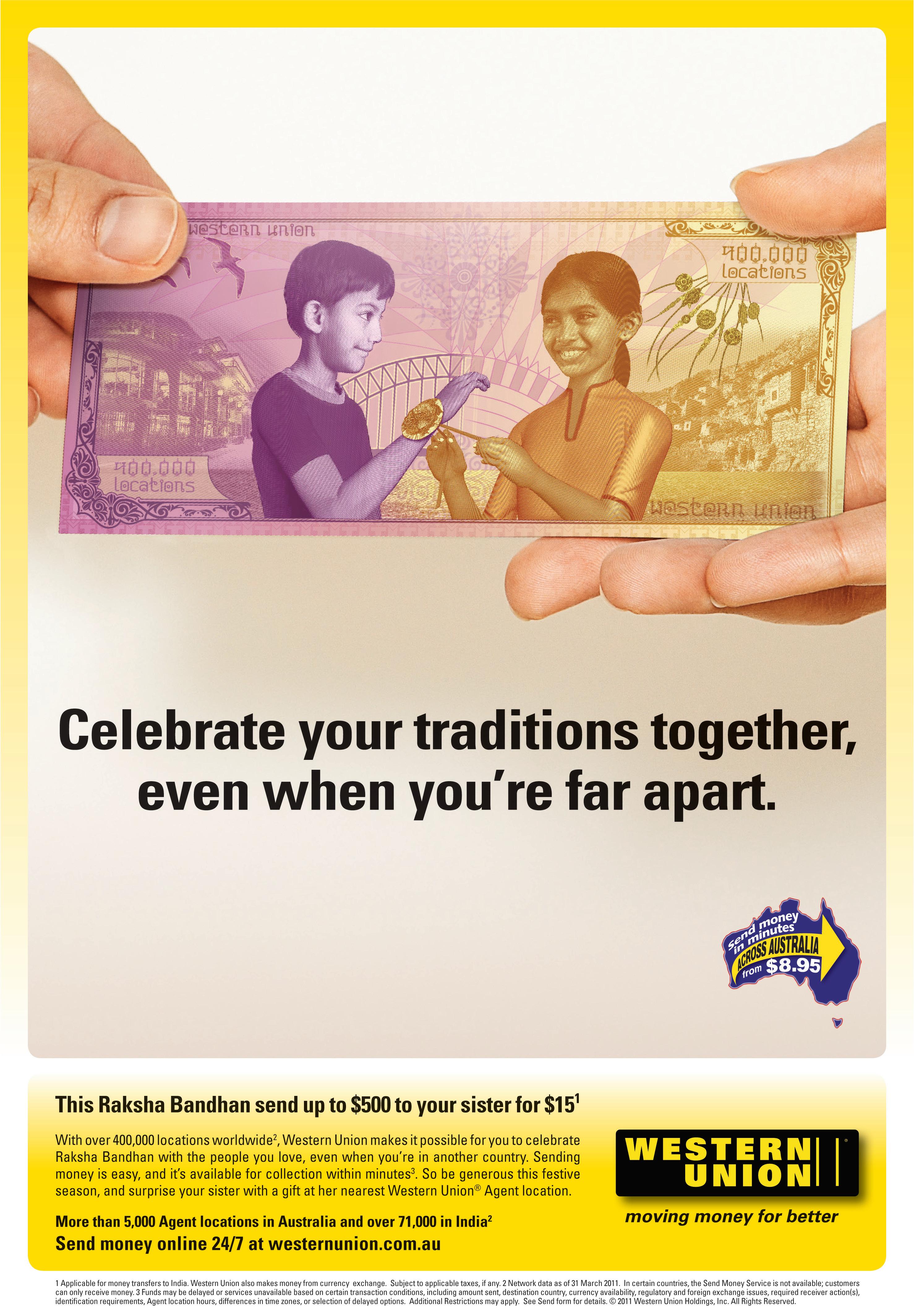
26 <> AUGUST (1) 2011 INDIAN LINK


AUGUST (1) 2011 <> 27 NATIONAL EDITION A spice shop with a difference Phone 02 9676 4677 enquiry@singhfoodspices.com.au www.indianspices.com.au Singh Food and Spices Rakhi is a special bond between brothers and sisters, celebrate the occasion. Rakhi hampers delivered anywhere in Australia. Price from $15.95 plus p&h. Special Rakhi hampers Delivered anywhere in Australia A spice shop with a difference
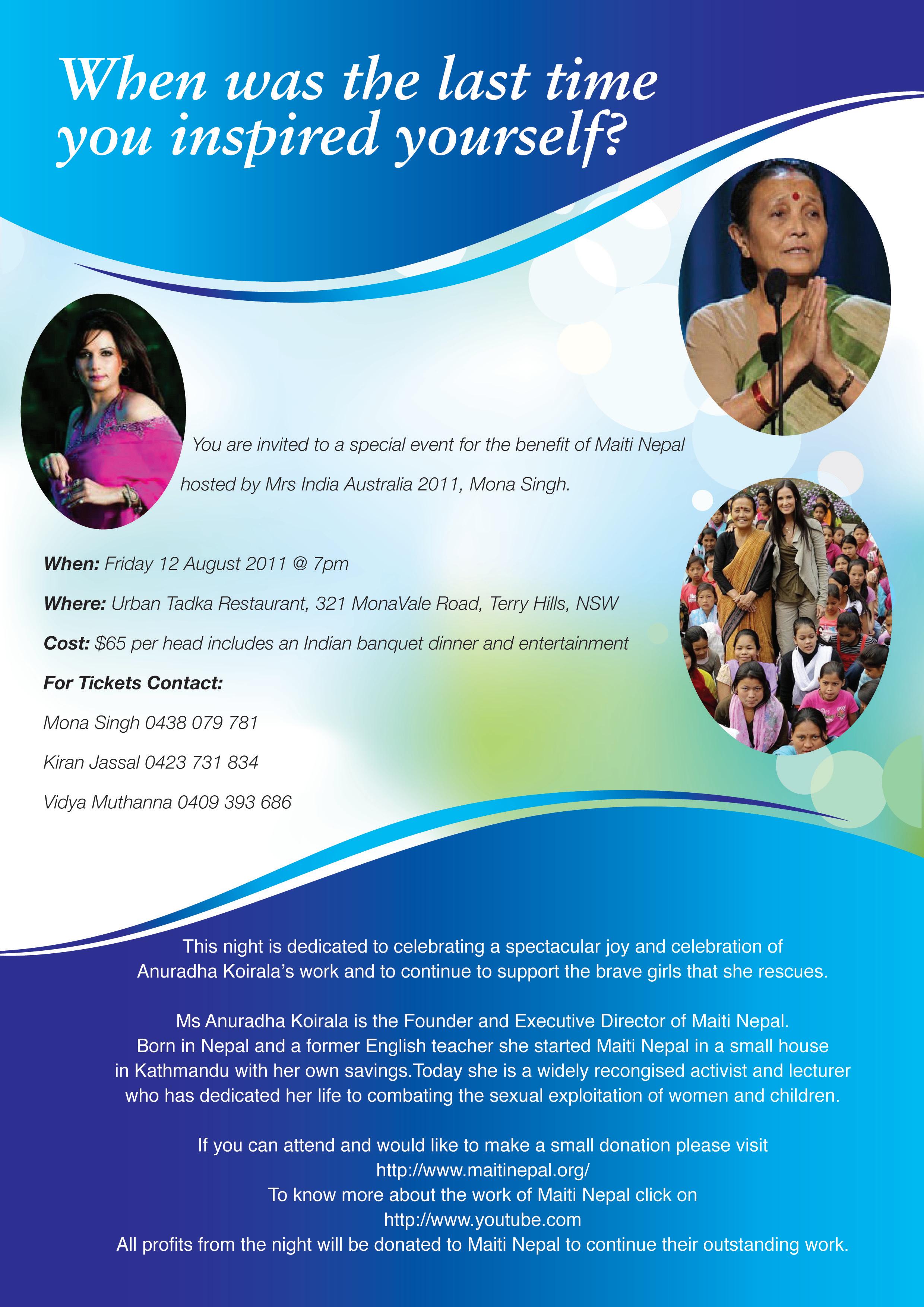
28 <> AUGUST (1) 2011 INDIAN LINK
Mind your language - make the Census count
Your responses to the 2011 census could impact the community’s welfare and productivity in keeping certain cultural values alive
BY PAWAN LUTHRA
Every five years for the past hundred years, the Australian Government does a stocktake on its people, their habits, lifestyle, backgrounds etc., and then uses this data to distribute funding. Federal funding arrangements to the states and territories, including allocation of GST revenue, are based on census information. In fact, over 40 billion dollars of Federal monies are distributed to States and Territories based on the data collected during the census. In modern times one National Census is done, but in the early years of the census, each State did its own and then figures were counted together. However, this created confusion as different parameters were being used.
The census underpins Australia’s democracy and is crucial to communities, private institutions and all levels of government when planning infrastructure, community services and facilities where you live
The census underpins Australia’s democracy and is crucial to communities, private institutions and all levels of government when planning infrastructure, community services and facilities where you live. In fact, strategic and tactical decisions are made to ensure that they, as a Government, are delivering to their constituents.
For the Indian Australian community it is important that they do link their census information to their Indian roots. The Australian Hindi Committee issued a press release about the census, in which they asked that the Australian Hindi community should

declare their language in question 16 of the census form. They said that Government policies such as which language to teach in schools, depend on official statistics. The press release requested that if you speak one of the regional Indian languages to also write Hindi in the census form.
“This year, the census night is August 9
and on this day 9 million households will have the opportunity of telling us more about themselves,” said Mr Paul Lowe, Head of the Census Population Program from the Australian Bureau of Statistics. “In fact, we are open to people filling up their form online also, if they prefer. These forms are available online from end-July but need to be
only completed on August 9.”
Paul Lowe has been with this programme for 25 years and stated, “The modern census has certainly come a long way since the earlier ones. One example of this can be seen in some of the questions which are omitted from this year’s form. Earlier census forms had questions such as “how many idiots are in this house” - a difficult question to ask these days! Another outdated question was whether or not the toilet was located in the house or outside, or if it was self-flushing or not. Census workers in the past were never paid for the hard work that they did. Over 16,000 census collectors are being used this year and yes, they get paid for their time and effort,” Mr Lowe told Indian Link.

It seems in early census reports, Aborigines were not counted in the census nor asked to complete the forms. Modern equality laws however, ensure that every Australian and even Temporary Residents now are counted and heard!
Paul Lowe said that the planning and preparation for the census has been ongoing for 5 years, over 43,000 census collectors will be used and every corner of Australia will be covered
Paul Lowe said that the planning and preparation for the census has been ongoing for 5 years, over 43,000 census collectors will be used and every corner of Australia will be covered. It will certainly shed a light on who we are. “One of the underlying issues which we need to understand is the impact of the global financial crisis on Australia. Do note that the last census in 2006 was before the GFC, now this is the post-GFC world,” he said.
It is time to be counted and August 9 is the night - just please, mind your language!
AUGUST (1) 2011 <> 29 NATIONAL EDITION
INFOCUS www.indianlink.com.au
• An opportunity to be a part of a thriving Indian community • Restaurant in the best location in Harris Park. Indoor and outdoor dining with newly fitted equipment • Great for Husband and Wife team or a Partnership • Loads of potential • Cheap Rent • Long Lease “Offer Invited” Genuine Buyers Only. Please call on: Non Indian Takeaway Business for Sale 0405 100 222 • Fine dining Indian restaurant located in Eastern Sydney • Cover up to 15 suburbs with no competition • Very good location 4-5 min from Maroubra and Coogee Beach • 50 plus seater with 3 bedroom apartment upstairs • Fully licensed and B.Y.O, with plenty home deliveries, takeaways and plenty free parking • Suitable for any cuisine Indian Restaurant for Sale Please call: 0433 552 122 or 0433 195 344
Paul Lowe, Head Population Census Program explains the census form




















30 <> AUGUST (1) 2011 INDIAN LINK

AUGUST (1) 2011 <> 31 NATIONAL EDITION
Violin virtuoso’s tribute to his father
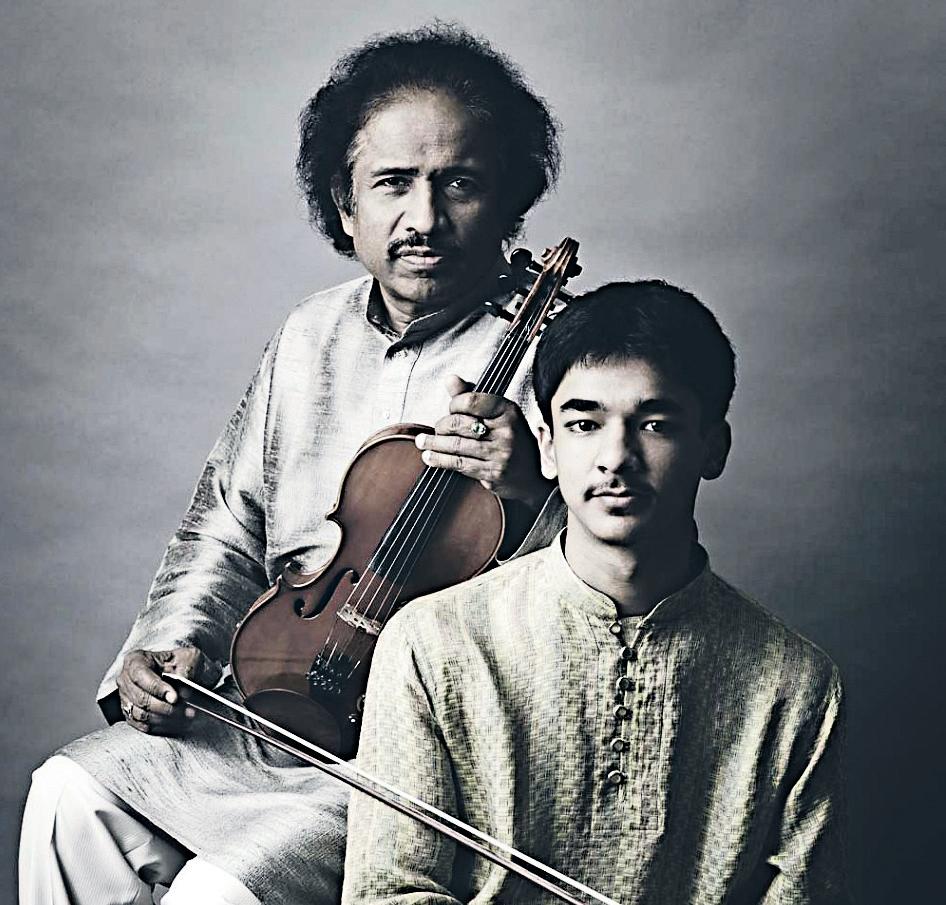
An exemplary performance from one of the leading exponents of the violin in memory of his father’s legendary music
BY MALLI IYER
Dr. L Subramaniam’s stunning violin concert in Sydney, where he was accompanied by his son Ambi Subramaniam under the aegis of Nataraj
Cultural Centre, was essentially a tribute to his father and guru, Sri V.Lakshminarayana in this year of his Centenary celebrations. The Lakshminarayana Global Music Festival has been ongoing since 1992 all over North America, Europe, Middle and the Far East, with participation by several legendary performers such as Yehudi Menuhin, Zubin Mehta, Herbie Hancock, Zakir Hussein, Pt. Jasraj, Stephane
Grappelli to name just a few.
Sri V Lakshminarayana was an exponent of violin as a solo instrument since 1935 and his son and grandson have left no stone unturned in their effort to convert his dream into a reality. Dr. L Subramaniam’s mastery as an author, conductor, composer and a violinist trained in carnatic and western classical music is well-known, and he has received
global acclaim in his orchestral and nonorchestral contributions to music. His attainments in jazz, fusion, global music, classical and film scores are too many to enumerate here. Despite his iconic status in the world of music, Dr Subaramaniam readily agreed to be interviewed and was extremely forthcoming with his opinions to my questions. Below are excerpts of the interview.

32 <> AUGUST (1) 2011 INDIAN LINK STAGE
Violinist L Subramaniam with his son Ambi Subramaniam
Malli Iyer: You studied to be a medical doctor, but instead pursued and excelled at music. Do you see music as a science or art, or both?
Dr. L Subramaniam: I see music as a unique blend of both. Every musician creates an artistic expression and it is the creativity and individual stamp makes it invaluable as an art. Yet the rhythm, the thala and the mathematical precision of the ‘melakarta ragas’ and scale systems are very methodically organised, which makes music equally a science.
MI: There is not much in the field of music that you have not touched, one way or another. So what are your future aspirations?
Dr. LS: I have followed my father’s footsteps in popularising and establishing violin as a stand-alone instrument, and not merely an accompaniment. I have worked with major orchestras such as London and New York Philharmonic to gain acceptance and recognition of the Indian style violin. I have also collaborated with world-renowned violinists like Yehudi Menuhin and Stephane Grappelli and have succeeded in proving that the Indian violin is adaptable as an instrument. I hope, aspire and will continue to work towards the violin becoming popular even at the grassroots level such as street performers.
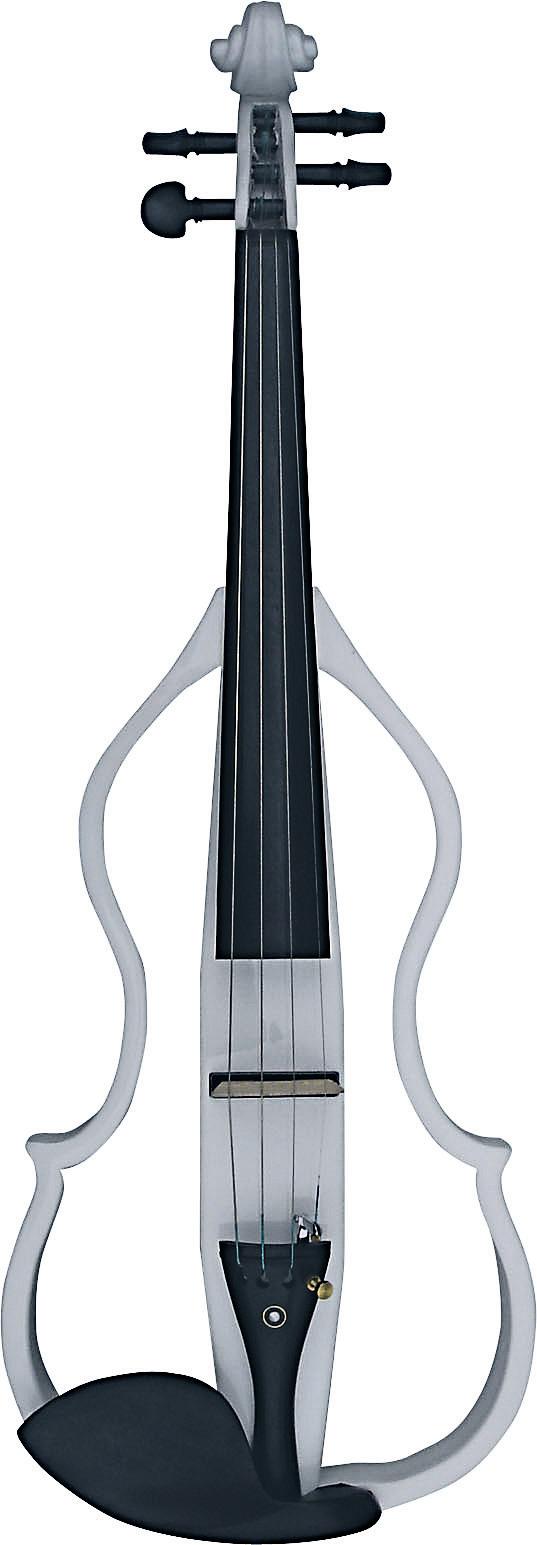
MI: Since you have evolved the concept of global music over the years, what is your vision of how this concept should serve humanity?
Dr. LS: The 1970s saw a renaissance of jazz and fusion music, which brought musicians and artistes from different continents (Africa, Europe and Carribbean included) to play as a unit. It involved developing an understanding of the different styles and music systems. I wrote music with sponsorship from the United Nations and involved jazz legends like Herbie Hancock, George Duke and Stanley Clarke. Later, I travelled to the Far East to understand the Chinese and Japanese musical creations. The whole purpose of the exercise was to bring people together through the universal medium of music. I hope to bring out a set of 10 DVDs of fusion music with my late wife Viji, who
My father taught us that once the musical sound takes over, the power of every word and every note is such that it creates character and emotions of its own which bring out spiritual aspects
also collaborated in this venture. We have MS Subbulakshmi singing the invocation song and Bismillah Khan has played shehnai as well. That should be a good example of how music can provide a platform for unity and understanding in humans.
MI: The violin as an instrument misses out on the lyrical beauty that a vocalist can explore due to the poetic or devotional expressions of a musical composition. How do you make up for this lack of “sahitya bhava”?
Dr. LS: The language (or sahitya) is only an additional ingredient to enjoyment of music by the audience. The legendary flautist TR Mahalingam was able to bring out the emotions of a composition through the raga alaap. Music can be written by composers like Thyagaraja in a language that the audience does not understand, but it does not prevent
them from enjoying the essences. It is the same in western music where operas are created in Italian or German whereas the performers and audience do not necessarily understand the language, but the enjoyment is equal throughout. Music has a universal expression and following throughout the world.
MI: The creativity of “manodharma” (improvisations e.g., sangatis, swara kalpana and gamakas) is not available to you when blending your violin playing with western music. How do you prevent the compartmentalisation of the two ?
Dr. LS: The melodic variations and freedom of musical expression is available in the western music “cadenzas” (passage for solo instruments) of orchestral or nonorchestral compositions. Thus, I use the
I have also collaborated with world-renowned violinists like Yehudi Menuhin and Stephane Grappelli and have succeeded in proving that the Indian violin is adaptable as an instrument
in New York and I was full of trepidation. He had never shared his violin playing platform with anyone else before this, but he agreed as this was a United Nations forum and the New York audiences response was anyone’s guess. Yehudi asked me to write a piece for both of us to play. He even sat on the stage cross-legged (like we usually do for carnatic music) and played the violin using what would be a strange posture for him. I was relieved in the end, because of the tremendous ovation that we received for our musical creation.
The other big challenge was when I was part of Zubin Mehta’s New York Philharmonic Orchestra and we had to play for 4 days in a row. I was the soloist and I was asked to write a piece which would have to be played by several western style violinists. I had to create technically complex violin lines for the Concert Master to distribute to all the violinists to play and repeat. It was a first for me, and it worked well in an orchestral situation. It certainly stands out as one of my never-tobe-forgotten situations.
MI: How is your family collectively paying tribute to your illustrious father’s memory?
Dr. LS: We have a family project that is everyone is working towards. It involves my brothers L. Shanker and L.Vaidyanathan and their families, my wife
cadenzas to put my own stamp by using carnatic or play to generate a different mood or style. I can also play a variation of my own even in the written lines of an orchestra. All the blending I have thus achieved may be called solo improvisation and are perfectly acceptable.
MI: Your association with music and a musical family must have given you some unparalled values in life. What are those, and how would you explain them?
Dr. LS: Music is known to give inner peace and satisfaction. My father taught us that once the musical sound takes over, the power of every word and every note is such that it creates character and emotions of its own which bring out spiritual aspects. Most of the saints who created the thousands of compositions were inspired by the Gods and spirituality. You cannot segregate carnatic music from spirituality. Every performer is drawn into a different world and transported to a different state of mind. People who may otherwise be very matter of fact, cannot avoid becoming transformed. People who submit themselves to these disciplines are blessed as they enjoy the balance provided by musical training.
MI: How do you feel about the recent trends of changing the structure of a carnatic concert? Are innovations a part and parcel of the evolution process of carnatic music?
Dr. LS: I am not aware that any attempts are afoot to alter the fundamentals, other than performers introducing their own style and substance. Musicians have little opportunity to create new interpretations in the carnatic paddhati, but if they do bring about changes in the tempo, that creativity must have a sustaining power. It should not be change for the sake of change, but must add to the melody as much as it should be welcomed by the audiences. It has to stand the test of time.
MI: What has been the most challenging assignment of your life?
Dr. LS: There have been several challenges although I have stuck by my carnatic music background as much as possible. I had to share the stage with Yehudi Menuhin once
Kavita Krishnamurthy and our children, are all party to the project. We are putting together a set of 10 DVDs for release later this year. We are also creating an educational institution for carnatic scholars in Bangalore. The Kerala government has just created a street in memory of my father – it is called Violin Laxminarayana Road in Allapuzha, our hometown.
state of mind
MI: What kind of indelible mark would you like to leave to the world of music?
Dr. LS: I would like to develop further on the spiritual aspects of carnatic music. I have already created A Fantasy of Vedic Chants based on Charukesi Raga. Our proposed Music School in Bangalore will try to make a significant contribution to training and creating fresh musical talent.
Emperor of violin holds impressive court
Dr L Subramaniam is no stranger to Adelaide music aficionados, having performed previously at the prestigious Adelaide Festival and the popular outdoor Womadelaide event.
His performance at the Adelaide University’s Elder Hall on July 27 drew a capacity crowd, even though it was mid-week in mid-winter. The century-old hall of the University’s conservatorium, with its impressive interior modelled after the Middle Temple in London, provided a rarefied ambience. And the three-manual organ stretching from floor to ceiling surrounded by polished timber panels formed a magnificent backdrop to the softly-lit dais from where the violinist virtuoso and his handsome son performed a two-hour concert with consummate skill.
Reviewing the concert, Sharada Murali adds: It was an awesome display of technique, when the “violin chakravarty”, as Dr L Subramaniam is fondly called, held durbar with his prince. The concert was a capricious blend of south Indian carnatic music and masterful technique. He accepts neither grammar nor boundaries and treats the rules of the raga with unfettered freedom or some disdain – depending on one’s view - as he plays with the notes and takes the listener on a skyrocketing adventure.
Ably supporting his father, Ambi Subramaniam matched the maestro’s music, note for note and stroke for stroke. A word of advice – even if uncalled for – to the youngster: he will be well served if he invents his own style and rhythm, so as not to be seen as his father’s replica.
The duo was well supported by Satya Sai on the morsing and moderately by Trichi Mohan on the mridingam.
The concert started with an exploration and elaboration of the pentatonic scale, abogi. Pentatonic scales have a mysterious pleasant effect on the listener. They followed the alapana with a composition of the maestro himself, a prayer to Lord Ganesha. The song included neraval and a swara kalpana, where they explored every possible interpretation and expression of the five notes in the scale.
The due later moved on to a very elaborate ragam, tanam, pallavi. Dr Subramaniam did a brief foray in the Gowri Manohari scale, and then moved to the slightly more rhythmic tanam. Ambi stepped in to change the scale.
There was a divided opinion about this second raga. Could it be vachaspati or latangi? There was no announcement at the end of the song, so this will remain a mystery unless someone steps in to dispel the doubts.
The last part of the ragam tanam pallavi was the mellifluous jog. Here they retained the textbook phrases of jog while flooding the audience with various expressions of the ragam. It was a fitting finale to the two hour concert.
However, a few small things reduced the enjoyment of the concert. The main percussion, mridangam was not very audible. The main mike of the evening seemed to be switched off for a short while. In spite of these hitches, the audience were totally mesmerised by the music, and the artistes received a heartfelt standing ovation.
AUGUST (1) 2011 <> 33 NATIONAL EDITION
www.indianlink.com.au
You cannot segregate carnatic music from spirituality. Every performer is drawn into a different world and transported to a different
Seniors enjoy Bengali brigade musical feast


“Wahan kaun hai tera, musafir, jayega kahan…” And with that opening line, Avijit Sarkar had set the mood.
No fewer than 200 senior citizens gathered to enjoy Avijit’s tribute to the ‘Jewels of Bengal’ in India’s music industry. It was his annual event for AHIA’s Senior Citizens Forum. In a magnanimous gesture every year, Avijit entertains community seniors with a special concert. He picks his theme carefully, having done ghazals, devotional music and various other genres
Kitchen

the audience’s vintage, with just the right dose of philosophy, and above all, was supremely hummable.
The mums and dads in the audience settled in for a happy afternoon.
Before long they were tapping their toes as the jewels of Bengal like Pankaj Mullick, the Burmans, Kishore Kumar, Salil Chaudhary, Manna Dey, Hemant Kumar and Bappi Lahiri were brought to life on stage.
The Hemant Kumar numbers (like Tum Pukaar Lo from Nagina; Ganga Aayee Kahan
the Lata Mangeshkar of Sydney, joined Avijit for a few numbers, such as the blissfully happy Maang Ke Saath Tumhara, and helped transport the seniors back to their youthful days. Pushpa’s Aaj Phir Jeene Ki Tamanah Hai had many in the audience humming along.
The accompanying musicians Dr Dinkar on casio, octopad Salim Jehani, Sadik Rehmani on guitar, Parag Tijori for effects and Abhijit Tayagi on tabla, all made the perfect accompaniment.
Kishore Kumar and Bappi Lahiri, whereas usually I’ve sung the Hemant Kumar type of numbers, for this audience at least. I find that when I’m having fun on the stage, the audience has fun too. And that’s pretty much the feedback I got from the audience.”
The lovely afternoon of songs of yesteryear was organised by AHIA Senior Citizens’ Forum as a fundraiser towards its own activities. Tilak Kalra, Rakesh Sachdev, Santram Bajaj, Rajinder Channa and Yash Bhasin have endeared themselves to the community for their loving care and regard of our respected seniors. They are all helped in their endeavour by their lovely wives, who work quietly behind the scenes to bring that extra cheer in the Forum’s activities.
Together they have been in action for over fifteen years, bringing in an added dimension to the lives of the seniors here, away from home and family. Picnics and short trips, afternoon tea, presentations by relevant professionals such as medicos etc., are all part of the fare at the Forum’s events. The Forum also tries to lobby with the government on behalf of our seniors. One such cause in recent times has been travel concessions for seniors who are not permanent residents. Their monthly meetings are held at Westmead, Cumberland Hospital’s Park Hall.
Rachita Saini
We make custom kitchen furniture for you to install. price base on 3m x 3.6m L shaped kitchen you do not have to assemble cabinet (already assembled)
Make size to suite your space.
Saesarstone bench there are more to be included
Contact us for further details
Condition applies
PLUS imageplus@live.com.au factory only. No expensive showroom. We also make custom made furniture for shop fit out
34 <> AUGUST (1) 2011 INDIAN LINK
www.indianlink.com.au STAGE
special $4300.00
8/34 Bent Street St Marys 2760 9833 9983 0411641735 INDIAN GROCERY SHOP FOR SALE Located in a prime location, in inner western Sydney with 4 secure underground parking spaces. All Genuine enquires can be made to 0433552122 or 0433195344
IMAGE
performing at the annual event for AHIA’s Senior Citizens’ Forum
Avijit Sarkar (right)
Inspiring performances enhance love story

The meeting of East and West can have some lovely results. On July 30, a Sydney audience witnessed one such fusion in Contemporary Dance Academy’s A Love Story. More than forty young dancers, from juniors to advanced level performers, graced the spacious stage of the Pennant Hills Community Centre to perform in a contemporary Indian style. CDA’s director is Shwetambra Barar Tandon, a highly accomplished and acclaimed dancer in the genres of classical ballet, contemporary, jazz and Bollywood. She is assisted in her teaching by Kanchan Verma, another very experienced dancer.

The story was inspired by the well-known Shakespearean tale of Romeo and Juliet. Two young lovers, Sonali and Yuvraj, from warring families were the lead characters. The performance used contemporary and Bollywood choreography to portray their story through dance. Each scene was unique and made good use of the numbers of students, with varying stage formations that kept things interesting. Another impressive
component was the costumes, which were bright and beautifully coordinated with wellchosen colour schemes. The costumes were handmade by the mother of one of the dance teachers, and obviously took a great deal of time and effort.
One of the stand-out scenes of the evening was the party scene, where Yuvraj
(Ruhee Dixit) transfers his infatuation from Maya (Bhavana Bhat) to his future wife Sonali (Sandhya Menon). The scenes featuring junior dancers, such as the wedding scene were abundant with cuteness, and the enthusiastic performance by the little ones tugged at the heartstrings of the audience. Sandhya Menon was charming
as Sonali and her talent was particularly showcased in one of the final scenes where she takes the potion that will be her escape from being wedded to her suitor, Yash. The other notable performance was by the expressive Srishti Yadav who played Yash. The final scene saw Yuvraj and Sonali tragically commit suicide, much like the characters that inspired them. This scene, although graceful, could have been performed more expressively to better portray the anguish that the two lovers would have felt.
Music for the story was drawn from Hindi movies through the ages, and each piece very nicely captured the essence of the scene it was chosen for. Overall, A Love Story by Sydney’s Contemporary Dance Academy was colourful and entertaining with inspired choreography, gorgeous costumes and talented dancers who most importantly, seemed to be thoroughly enjoying their time on stage.

AUGUST (1) 2011 <> 35 NATIONAL EDITION
www.indianlink.com.au
Deepa Gopinath
STAGE
Junior dancers perform in Contemporary Dance Academy’s ALoveStory

36 <> AUGUST (1) 2011 INDIAN LINK
World first diabetic study to limit neuropathy
Diabetes is the fastest growing chronic disease and the sixth largest cause of death in the country. A quarter of Australians are currently diabetic, with 2 million either showing pre-diabetic symptoms or at immediate risk of developing the condition. According to Diabetes Australia, an additional 275 people are being diagnosed daily, costing the national healthcare system an estimated $3 billion. The figures are alarming, no doubt.
In a world first, the Prince of Wales Hospital’s Institute of Neurological Sciences and Diabetes Centre has recently launched a study on diabetic neuropathy, using an innovative clinical technique known as nerve excitability testing.
A painful and debilitating condition, diabetic neuropathy is a common complication among diabetes sufferers, in which nerves are damaged as a result of high blood sugar levels and decreased blood flow. Approximately 50% of diabetics eventually develop partial or permanent nerve damage.
Developing in stages, peripheral nerve injuries can affect nerves in the skull or spinal chord as well as those that control vital organs, including the smooth muscles and heart. Symptoms include swallowing difficulty, pins and needles, tingling, cramps, numbness and general muscle weakness.
Apart from management of symptoms through pain relief and strict monitoring of blood sugar levels, there are currently no specific treatments for diabetic neuropathy and nerve dysfunction.
Led by neurologist Arun Krishnan, the landmark project will investigate whether the nerve excitability technique could detect the earliest stage of nerve damage in diabetic patients before it is evident externally. The results could help diagnose nerve damage prior to the onset of more severe symptoms.
To be conducted over a period of three years in four and six monthly intervals, Dr Krishnan and his team of researchers hope to use cutting-edge software to understand the ways that impulses are conducted down nerves in patients with diabetes.

The Prince of Wales Hospital is therefore seeking diabetics between ages of 18-65 to undertake nerve excitability and nerve conduction testing.
The entire procedure, which lasts no more than 15 minutes, involves electrodes being taped to the skin over a nerve or muscle while electrical pulses are delivered. The nerve response is then mapped against that for age-matched healthy controls, with a view to predicting neuropathy.
According to a hospital spokesperson, about 30 patients have already participated in the trail, many showing changes to nerve excitability stimuli, suggesting they may develop neuropathy.
Researching the causes of nerve dysfunction in diabetes
Newly Opened.
will improve medical knowledge and facilitate future treatment of diabetic neuropathy, Dr Krishnan told Indian Link.
“Currently, one of the biggest hurdles is the inability to detect early signs of nerve damage. This study could potentially lead to better ways of detecting the early signs of diabetic nerve disease and may lead to the development of new treatments,” Dr Krishnan added.
A senior lecturer in neuroscience at UNSW’s Translational Neuroscience Facility, Dr Krishnan’s primary research interest has been in the relatively new area of clinical neurophysiology, particularly in the use of nerve excitability techniques as a means of investigating the pathophysiology of neuropathic processes.
Abnormalities of ion channel function, which is a deciding factor in many neurological diseases including peripheral neuropathy, motor neurone disease, MS and epilepsy has been his core focus. Furthermore, he is also interested in novel methods for diagnosing and treating neurological complications of systemic diseases, including diabetes, renal disease and cancer.
“Measurements of excitability are cutting-edge techniques that provide information related to the activity of a variety of ion channels, energy-dependent pumps and ion exchange
482 Canterbury Rd Campsie
Natural Gemstones, Crystal Quartz, Freshwater Pearls, Sterling Silver, Metallic Accessories, Leather Strings Ready made Necklaces, Bracelets, Earrings, Rings, Pendants, Brooches Jewellery Making / Remodelling Available
Open 7 Days. 9:30am – 6pm.

processes activated during impulse conduction,” said Dr Krishnan.
“These are novel techniques, which our group has applied to the study of mechanisms underlying the development of neuropathy and nerve injury,” he further explained.
Specifically, the team has applied these techniques to the study of metabolic and toxic neuropathies including those that occur secondary to diabetes, end-stage kidney disease (ESKD) and chemotherapy. Recently, excitability techniques have also been applied to the assessment of cortical excitability using trans-cranial magnetic stimulation and they propose to extend these techniques to the study of neurodegenerative processes and central channelopathies.
Dr Krishnan’s stellar career has been dotted with numerous awards and research citations including ANZAN Young Investigator Prize, J.G Golseth Young Investigator Prize of the American Academy of Neuromuscular and Electrodiagnostic Medicine, as well as ANZAN Overseas Fellowship to Queen Square.
He has since returned to Australia to take up an NHMRC Career Development Award at the Prince of Wales Medical Research Institute.
Usha Ramanujam Arvind
coaching
AUGUST (1) 2011 <> 37 NATIONAL EDITION
•
Retail/Wholesale Welcome
in Lowest Fee Guaranteed IELTS ENGLISH GURU Suite -1, 71 A Macquarie St, Parramatta, Phone 0411 520 546, 9687 9741 www.englishguru.com.au • Power Packed Sessions. • One and Two Weeks Crash Courses Available. • Money completely refundable, if not satisfied with the first tuition session. www.indianlink.com.au COMMUNITYSCENE
Ph: 0297878603
JAY – 0416130688 Email: jjn688@gmail.com
For expert
Neurologist Arun Krishnan (right) is leading a study on diabetic neuropathy using an innovative clinical technique known as nerve excitability testing
Gold for geography
A young student proves his mettle by carrying away the highest award in an international competition, writes FARZANA
Tarang Immidi did Australia proud by nabbing the gold medal in the 3rd Asia Pacific Regional Geography Olympiad recently. The 17-year-old Sydney Grammar School student was one of four youngsters chosen to represent Australia in the event which took place in Merida, Mexico from 4-9 July. Apart from Australia, Singapore, Japan, Taiwan and Mexico were the other countries that participated.
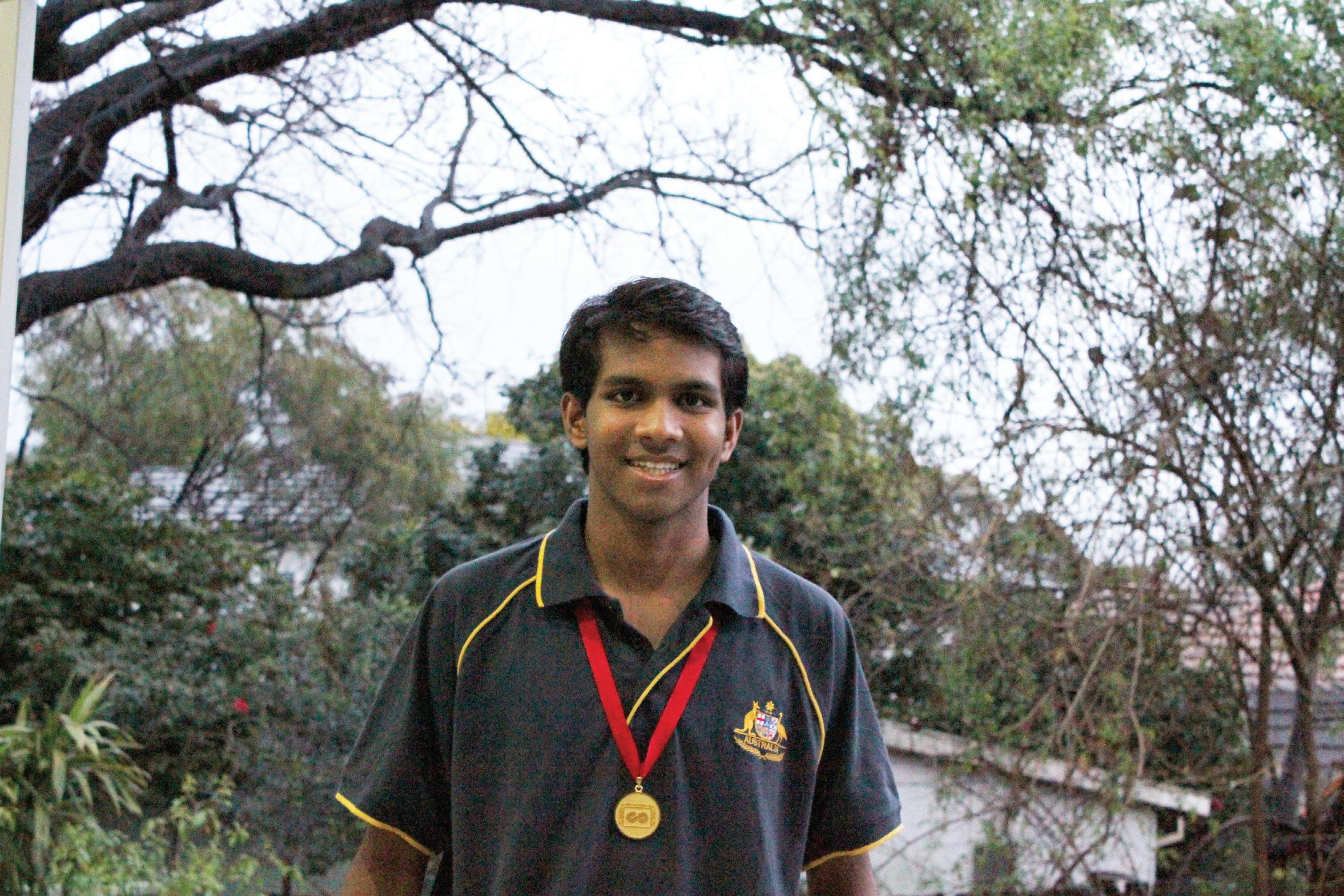
This was the first time Tarang took part in this competition that was based on individual performance and comprised of four tests held on different days.
The International Geography Olympiad (iGeo) is organised by the International Geographical Union (IGU) Olympiad Task Force, and until now was held bi-annually. However this year marked the last of the Regional Olympiad, as from next year the International Olympiad will be held every year.
Thousands of students partake in these competitions each year, and the best are selected to compete on an international level. The competition aims at promoting geography, raising awareness and understanding amongst young people and stimulating a higher quality of schoolwork in geography worldwide. The participants aged 16-19 are tested for their skills via exercises in written, multimedia and field work.
In response to my question on how
SHAKIR
Australia performed overall and his individual performance in the finals, Tarang said, “The Australian team won 1 gold medal as well as 2 silvers and a bronze. This strong performance placed us as the top team in the competition by a considerable margin. There were no finals as such, but I won one of two gold medals, coming second in the competition as a whole. The first place was won by a member of the Mexican team.”
He further confided that the competition was “quite challenging and the questions were certainly not easy.”
So what was Tarang’s game plan and how did he prepare for the Olympiad on a topic so varied and vast (literally)? “There was not much I could do to prepare for the Olympiad as it tests one’s ability to analyse geographical information, rather than geographical knowledge. My preparation consisted of looking at tests from past Olympiads,” replied Tarang. Was this young man confident of his performance prior to the competition, and did he think he had a chance of winning gold?
”I think to be selected to compete in the competition was in itself an achievement, but I did not expect that I would do so well,” Tarang answered modestly. “I was very happy to have won the gold. It certainly was the highlight of the trip. My family,
KNOW THYSELF AS SOUL
Sant Mat is a practical spiritual path based on meditation, ethical living, service to others & love for all creation. Its goal is to enable the soul to return & merge into its source; the purpose of human life described by mystics of all traditions. Discipline & dedication are essential, as is the help of a competent living master. Entry is via a preparation program. There is no charge at any stage.

For more information...

Contact Sita 0408 880 155
www.santmat.net.au Know
friends and teachers are also very happy at my success.”
Asked how he found the experience overall and if there were any interesting moments, he recollected: “The experience was certainly quite memorable as it exposed me to a new culture which is quite unique
One of the more interesting aspects of the competition was the first fieldwork test which involved us running around a town to various checkpoints to answer questions on what we could see around us
in the world. One of the more interesting aspects of the competition was the first fieldwork test which involved us running around a town to various checkpoints to answer questions on what we could see around us. This involved climbing up Mayan pyramids in the town.” That would certainly have been an interesting and tiring one. Tarang’s interest in geography could well
have run in the family as his grandmother used to be a geography teacher. And himself? “I became interested in geography because I enjoy learning about the processes in the world around us. Geography investigates natural processes such as ones you see every time you go to the beach or to the mountains. I also find society’s interaction with the environment it lives in interesting. To me geography functions as a fascinating bridge between the social and physical sciences,” he said.
I suggested that most people find geography a dry subject, which brought about a vehement defense of Tarang’s passion for the subject. “I can’t say that I agree when you say that most people find geography ‘dry’. Most people I have spoken to acknowledge the fact that the subject is vital to our understanding of the world and that geographical processes are occurring all around us every day,” he said staunchly.
The International Geography Olympiad of 2012 will be in Cologne, Germany from August 21- 26, in which Tarang plans to participate. To young Australians, Tarang’s message is simple, as he said, “With dedication and passion you can achieve anything.”
Well said and demonstrated, Tarang. Indian Link wishes you all the best.
38 <> AUGUST (1) 2011 INDIAN LINK
Thyself As Soul Foundation is a not for proft association incorporated in NSW
www.indianlink.com.au STUDENTS

AUGUST (1) 2011 <> 39 NATIONAL EDITION

40 <> AUGUST (1) 2011 INDIAN LINK


AUGUST (1) 2011 <> 41 NATIONAL EDITION
Travel tips for seniors
A recent article in a Healthbeat (19 July, 2011) a well-know publication, that highlighted the connection between physical activity and cognition engagement prompted me to share news about a grassroots travel project for seniors from South Asian backgrounds (people from Bangladesh, India, Nepal, Pakistan, Sri Lanka or those who have shared social and cultural connections).
As we get older, our short-term memory and ability to process new information tends to decline. This state is not to be confused with dementia, where “memory and other cognitive areas deteriorate to the point that everyday tasks and decisions become difficult, and sometimes impossible”. As yet there are no interventions, pills, potions or so-called cures to avoid or reduce the chances of getting dementia.
The good news, according to the article – and some passionate community development workers – is that there is a link between physical activity and cognitive “engagement”. So to stay on top of your health, it is recommended that as we get older, we follow these simple rules.
Stop smoking
Smokers are more likely to exhibit cognitive decline that non-smokers.
Challenge the mind
Brain cells need a steady diet of oxygen, therefore mental activity such as reading, board games, socialising, computer games or any new skill are necessary. Remember, you are never too old to learn new things.
Get rest
Too little sleep can affect the memory, so sleep well.
Watch your weight: Know your normal weight range and stay within it to avoid a risk to illnesses such as diabetes, hypertension and stroke, which can compromise the brain.
Check with the doctor
Concerned about your health? Discuss issues with your doctor, as it is about you and your health.
SEVA, a not-for-profit organisation has come up with an innovative solution to help South Asian seniors keep their minds and bodies healthy.
‘Transport … key to moving’ is a travel training program where a volunteer (trainer) will meet a senior (trainee) at his/her home or central location and guide the Trainee through four different journeys to explore Sydney. The senior will be accompanied
by a volunteer on all four trips as well as guided to use Sydney’s public transport, which includes learning about exits, where to board, who to ask for help, lifts, types of tickets, read the timetable, etc.
The programme is open to permanent and non-resident seniors and will cover relevant information like fare options (full, off peak, concession, all day, etc), as well as ways to connect with government-funded services when they are eligible.
The training is open to all senior individuals over 60 years, including couples and small groups; and in fact SEVA encourages seniors to tell their friends and form small groups. If you have a mobility issue, SEVA volunteers can help in clarifying if you are eligible for the service. People in wheelchairs are welcome too, however they would need to be accompanied by a family member.
And to save the best for last, the programme is free and at absolutely no cost to the senior or their family. It also includes light refreshments.
All South Asian seniors particularly those who are in Sydney as long-term visitors or on temporary or bridging visas are welcome to attend. Trainees who have already joined the programme stated that they wanted to gain confidence to use Sydney’s public

transport. This would help them get about during the week, instead of waiting for their family to take them out on the weekend or take a day off from work.
The benefits of travel training align well with the benefits of physical activity and cognition maintenance as it helps with increased connections with people, reducing blood pressure and heart disease and finally, improving health and wellbeing by reducing stress, anxiety and feelings of isolation.
For more details, please contact SEVA volunteer Caroline on 0402 596 813 or email: sydromeo@ tpg.com.au, to participate in this project which must end on 31 October 2011. Visit www. sevainternational.org for more details about the organisation.
Caroline Romeo
42 <> AUGUST (1) 2011 INDIAN LINK
www.indianlink.com.au SENIORS
Disclaimer: Indian Link takes no responsibility for the content or claims made in any advertisements in the print, radio or online editions of the media group. We strongly urge that you verify the claims made in the advertisements prior to using any services. If you are not happy with any of the services provided, please use the relevant consumer laws to protect your interest.
SEVA, a not-for-profit organisation has come up with an innovative solution to help South Asian seniors keep their minds and bodies healthy
The magnificent Khalid and his flying machines
What good is wanting to do something without going on and doing it? Khalid’s life has been a rich example of living one’s passion – planes in his case
BY RAJNI ANAND LUTHRA
Khalid Ally glows with pride as he describes his latest toy – a Yak 54.
“It’s a Russian made aerobatic sports plane. I’ve fitted a 55cc engine on to it and it roars beautifully as it flies”. Ally acquired it six months ago as an ARF (‘almost ready to fly’) and assembled it himself, fitting in the engine and radio.

He flies it at his local aeromodelling club, the Peninsula Aeronautical Radio Control Society (PARCS) in Carrums Down, Melbourne.
The Yak is one of 23 other model planes in Ally’s collection. The flying machines have taken over the garage at his Rowville home, while the car lives outside.

Antique models
“Some of my models are antique aeroplanes, made before 1938,” he reveals. “I am also a member of the Society of Antique Modellers (SAM), a group of ‘old-
He grew up with planes, given his father was an aeronautical engineer.
“My father flew planes in the UK between 1928 and 1932. Then he came back to India and became inspector of aerodromes. My older brother, who passed away recently, was equally passionate about flying. He joined the Indian Air Force. He was my mentor in many ways, and I followed him into the Air Force”.
War fighter
As a fighter pilot, Khalid saw action in two of India’s wars.
“In the 1965 war, I was attached to the Indian Army, supporting them on access to Lahore. In 1971 though, I was in the midst of all the action in the eastern sector, even flying into Bangladesh territory. I flew a Gnat Mark 1, performing escort duties for attacking planes. I also made some strafing sorties and launched light rocket attacks on small movements on the ground. I was present at the ultimate surrender at Dhaka; my brother was there too”.
Although some forty years have passed, Khalid remembers the two wars vividly.
“They were what I had trained so many years for, and it was great to be able to put it all in practice and do my bit for the country”.
The Yak is one of 23 other model planes in Ally’s collection. The flying machines have taken over the garage at his Rowville home, while the car lives outside

small aircrafts many times with friends.
Following his passion for aeromodelling, was but natural.
“It was much easier here to procure equipment than in India,” he stated. “And by then my son Daud, an electrical engineering student, was hooked as well, so we became involved in a major way”.
They joined the aeromodelling club PARCS, and Khalid even served some years on its executive.

Khalid has even flown competitively. “Many clubs around Melbourne hold competitions, and then there are some good ones I go to at Bendigo, Ballarat and Canoundra. The competitions are all professionally conducted and we decide a year in advance based on the calendar of events which ones we will go to”.
timers’ who love their free-flight models. In older times, we would fly them and then race after them on bicycles to see where they’d landed… but now we have radios fitted on to them so we can get them to land where we want to”.
And how often do the machines get an airing?
“It all depends on what the mood is in the morning!” Khalid laughs. “Some of the older ones, I’ll take out the day before and recharge batteries etc. For some that I know I will not be flying for some time, I’ll put some after-run engine oil and store away carefully”.
The 68-year-old ex Indian Air Force officer (he retired in 1988 as Wing Commander) has been passionate about planes for as long as he can remember.
“I built my first plane in 1948 as a 5 year old,” he recalls fondly, “with some pieces of balsawood I’d stuck together!”

“In the 1965 war, I was attached to the Indian Army, supporting them on access to Lahore. In 1971 though, I was in the midst of all the action in the eastern sector, even flying into Bangladesh territory”
Khalid Ally
Soon after, Khalid became Chief Flying Instructor at the Air Force’s training academy. It was in this position that a downturn in health occurred – Khalid suffered a heart attack in 1986 and underwent bypass surgery the following year. Grounded from flying, Khalid opted for premature retirement.
“My wife and I settled in Noida in Delhi, but her family had already migrated to Australia. We decided to put in our migration papers as well, so as to join them”.
Migration to Australia
The Ally family arrived here in 1992. And although he hasn’t flown since, he has been in
Another aspect of it all that Khalid is passionate about is his role as instructor.
He is registered with the MAAA (Model Aeronautical Association of Australia), the governing body for aeromodelling in this country, as a qualified instructor.
“I have ‘students’ of all ages. One current enthusiast is 65, and recovering from cancer. His family presented him with a glider and he came to me keen to learn. I am quite pleased to report now that he has a fair degree of competency, and it is a pleasure to see him enjoy his time out on the field”.
Khalid’s own son Daud has kept up his interest in aeromodelling as an adult.
“He is very good, I must say,” Khalid says of him. “And what is very satisfying for me, is that my three grandchildren are also all involved. Especially the youngest, 5-year-old Aaliya – she seems a natural! At a recent demonstration for the Indian Senior Citizens’ Club ISCA, she flew her helicopter so beautifully that even I was surprised. Twelve-year-old Fauzia and 10-year-old Ashraf are also good”.
As an instructor, Khalid is keen to see more youngsters take up the sport. “I’d like to see this continue on into the next generation, and grow even stronger. So I’m very keen to have more youngsters introduced to it”. Surely, there’s no bigger feeling for a teacher than to see his students soar.
AUGUST (1) 2011 <> 43 NATIONAL EDITION
www.indianlink.com.au SENIORS



44 <> AUGUST (1) 2011 INDIAN LINK



AUGUST (1) 2011 <> 45 NATIONAL EDITION
Communalism, terrorism big challenges to nation: Manmohan Singh
Communalism and terrorism were “big challenges” to national integrity and needed to be fought collectively, Prime Minister Manmohan Singh said in New Delhi recently.
Manmohan Singh, who was addressing a gathering at the National Communal Harmony Award distribution function, said “some elements in society” were promoting communal disharmony that need to be defeated.
“We have to face these challenges together. We have to create awareness towards this,” the Indian prime minister said in his address in Hindi.
“Communal brotherhood forms a large part of our age old traditions. We have to keep up with this legacy. This is our pious duty,” Manmohan Singh said at the event also attended by Home Minister P. Chidambaram and Bharatiya Janata Party (BJP) leader L.K. Advani.
Vice President Hamid Ansari gave away the awards for the year 2009-10 to Mohammad Hanif Khan Shastri, who has written seven books on Hindu-Muslim unity in India. Khan got the award in the individual category.
The Center for Human Rights and Social Welfare got the award in the organisational category. The Rajasthan-based NGO is known to have organised interfaith dialogues and rallies to promote communal harmony and national integration in the country.
Positive talks integral to normalising ties: Hina
An uninterrupted, constructive and positive dialogue process was integral to resolve all outstanding issues and normalise relations between Pakistan and India, said Foreign Minister Hina Rabbani Khar.
Khar was speaking to mediapersons in Lahore after returning Thursday from New Delhi where she held talks with her Indian counterpart S.M. Krishna.
India and Pakistan have sought to open a new chapter of “peaceful and cooperative” ties by pledging to intensify counterterror cooperation and unveiled a host of initiatives to spur trade and travel between the divided halves of Kashmir.
Khar, who is the country’s first woman foreign minister, said Pakistan and India are well aware of the challenges faced by both countries and they also understand the need to ease tension, reported Associated Press of Pakistan.
Khar said that an uninterrupted and result oriented dialogue could lead both the countries and the whole region towards peace and prosperity.
Besides Krishna, Khar had met Indian Prime Minister Manmohan Singh and opposition leaders during her trip. She said she found that all of them were looking forward for better ties with Pakistan which was very encouraging sign.
She said Pakistan aims at improving relations with India through medium term, uninterrupted and constructive talks which were vital for peace in the region.
The minister said that during the visit both the countries also agreed to initiate Confidence Building Measures (CBMs) through trade and travel agreements.
India has no place in world order: Brajesh Mishra
Arguing that India has “no place in the world order” currently, former national security advisor (NSA) Brajesh Mishra has said the country has to step up economic reforms and strengthen military capabilities if it wants to overcome the situation.
“I am a blunt man... Sorry to say we have no place in the world order” now, Mishra said while delivering the inaugural K.
Subrahmanyam memorial annual lecture in New Delhi recently.
West Bengal Governor and another former NSA, M.K. Narayanan, presided over the function, organised by the Global India Foundation (GIF), in memory of Subrahmanyam, India’s eminent strategic expert, who died Feb 2 this year.
The global situation and the policies of the United States has pushed India to a limited role, engaged and embroiled with two enemies - Pakistan and China, Mishra said.
He said that the situation can be altered if the country break out of the present style of governance.

“Economic reforms appear to have stopped mid-way,” Mishra said.
Important defence purchase deals are delayed to ensure personal integrity, he added.
“If the current defence purchase pace continues , many equipments will be obsolete when they arrive after ten years or so,” he contended, adding the purchase procedures followed at present were of the 19th century.
The former NSA said that China has objected to adding India to the Asian Group of 3 - China, Japan and South Korea. He said China and Pakistan were militaristic allies.
He said though the US was not keen on better relations with India postdisintegration of the Soviet Union, it
changed the policy gradually.
Now, India should look beyond the ties with the US and strengthen its relations with the European Union, ASEAN countries and the Asian powers, Mishra said.
In his remarks, Narayanan said Subrahmanyam was the among the first to observe in 2004 that the US was keen on wider ties with India. This culminated in the Indo-US Civil Nuclear Treaty , he added.
Vice Admiral (retd.) P.J. Jacob, who is the chairman of the GIF, and Arundhati Ghose, India’s former permanent representative to the UN Conference on Disarmament also spoke at the function, attended by union Minister Saugata Ray, diplomats and academics.
India given choice to pioneer naval Typhoon jet
In anticipation of winning the Indian Air Force’s $10.4 billion tender for 126 combat jets, European consortium EADS has offered India a choice to pioneer a project for a naval version of the Eurofighter Typhoon that is in the fray in what is being described as the “mother of all defence deals”.
Typhoon’s competitor in the medium multi-role combat aircraft (MMRCA) tender, the French firm Dassault’s Rafale, already has a naval version that is operational on France’s lone nuclear-powered aircraft carrier Charles de Gaulle.
Officials of BAE Systems, one of the
four partner companies in EADS for the Typhoon programme, said that India can exercise the choice of being a partner nation and leading the programme for the carrierborne version of the aircraft if it wins the MMRCA tender. At present, Britain, Italy, Spain and Germany are partners in the Typhoon programme.
According to the BAE Systems officials, the Typhoon, which is a shore-based combat jet, has the potential to be a carrier-borne aircraft, provided a few modifications are made to the aircraft itself, essentially in a ski-jump take-off configuration due to the thrust-vectoring 90 kN (kilo Newton) engine that powers it.
Among the changes, it identifies strengthening of the undercarriage of the aircraft to assist in hard landings on a carrier’s deck, fitting a carrier hook for arrested landings, and a good paint coating to help it withstand the vagaries of nature at sea.
The choice of the Typhoon for the Indian Navy the officials said, will complement the experience of operating the British Sea Harrier vertical-landing carrier-borne aircraft on board its lone aircraft carrier, INS Viraat, for over two decades now. Of the nearly 30 Harriers India had got for INS Viraat, only about 10 are left in service, with the rest lost in air crashes.
The offer has been made keeping in mind the Indian Navy’s request for information issued in 2009. But the Indian Navy itself is
46 <> AUGUST (1) 2011 INDIAN LINK
Pakistan's Foreign Minister Hina Rabbani Khar, center, offers prayers at the mausoleum of revered Sufi saint Hazrat Nizamuddin Auliyaa, in New Delhi, India, on July 28, 2011. The foreign ministers of India and Pakistan spoke of entering a new era in relations between their nuclear-armed nations, after meeting for the first time since bilateral peace talks resumed this year.
Photo: AP Photo/Manish Swarup
not very amused with the offer.
First, according to officials, the Indian Navy plans to induct the Russian-built Admiral Gorshkov or INS Vikramaditya in the next couple of years. This warship will deploy Russian MiG-29K naval fighter jets and for this, the vessel is being reconfigured into a ski-jump take-off but arrested landing (STOBAR) mode at the Sevmash shipyard in Russia.
Nileema Mishra to donate Magsaysay prize money
Nileema Mishra, one of the Magsaysay Award winners this year, has decided to donate the entire prize money to her rural microcredit project, her family member said. “In the past, she has got around half a dozen small awards, and every paisa she donated to her cause. Even the prize money from Magsaysay Award will go to Bhagini Nivedita Gramin Vigyan Niketan (BNGVN),” her elated father Chandrashekhar Mishra said.
The award carries a purse of $50,000 (Rs.22 lakh).
The third of his four children, Mishra said that the family and the entire town of Bahadarpur with a population of around 10,000 is “proud that her selfless social service has been accorded international recognition”.
Mishra will accompany Nileema to the Phillipines - her first foreign trip - for the award ceremony. The duo will leave from Mumbai Aug 24.
Mishra said that since her early childhood, when she was less than ten years old, Nileema had made a name for herself in the neighbourhood by her outgoing and helpful nature.
“She had this passion, or craze you may call, for helping people, sometimes by sacrificing her own time and resources, making her a very popular figure in the town,” Mishra said.
When she went to Pune to complete her Master’s in clinical psychology, Nileema came in contact with children of well-known personalities, Mishra said.
Though Nileema hailed from a middleclass rural background, it was her helpful nature that made her instantly popular. Her resolve at the age of 13 not to get married and to devote herself to rural social work was strengthened when she travelled all over India while working with an NGO, Vigyan Ashram, near Pune, for eight years after graduation.
“Even today, many of her old classmates and friends, some of whom belong to the biggest industrial or political families in the state, treat her affectionately. ‘Do not give charity and make people dependent. Instead, make them self-sufficent and independent to face life,’ - they always advised her, and she heeded them. They are ready to spend any amount for making people self-reliant and stand on their feet. Her work is proof of it,” Mishra explained.
The knowledge that she acquired from her domestic travels prompted her to set up the BNGVN, which is today a force to reckon with in rural Maharashtra.
Originally from Uttar Pradesh, the Mishras are settled in Maharashtra since seven generations. “At home, we speak Hindi with a lot of Marathi words thrown in,” Mishra laughed.
Nileema’s mother Nirupama hails from Kanpur, while her two sisters are married and settled in Nashik and Pune.
Their only brother Shailendra is an area manager with a Pune-based pharmaceutical company, currently based in Mehsana, Gujarat.
Kashmiris love their mutton, all 51,000 tonnes of it!
About 85 percent of Kashmiris eat nonvegetarian fare - but exactly how much?
Official statistics say Jammu and Kashmir annually consumes a whopping 51,000 tonnes of mutton worth worth Rs.12.06 billion (over Rs.1,200 crore), of which 21,000 tonnes is imported from outside.
“The 21,000 tonnes is in addition to 30,000 tonnes of mutton produced locally and costing Rs.7.02 billion (Rs.702 crore) which also goes into the local consumption each year,” a senior official of the animal husbandry department said.
Despite having some of the best meadows and pastures in the world, all the mutton imported into Kashmir comes from Rajasthan, which has some of the most arid deserts in the country.
In addition to mutton, poultry and poultry products are also imported into the state from neighbouring Punjab and Haryana.
“Chicks, broilers, layers and eggs amounting to Rs.1.2 billion are imported each year for local consumption,” said another official of the state animal husbandry department posted with the poultry production wing.
“This is in addition to the local poultry production worth Rs.1.8 billion that also goes into local consumption.”
The officials say 84 percent of the state’s 10 million population is predominantly nonvegetarian.
Some say the high consumption of meats could explain the wide prevalence of certain ailments.
“My god, these are Herculean figures and they explain the reason for high blood pressure, obesity, high cholesterol levels, heart ailments, gout, kidney stones, liver ailments and a host of other diseases the locals are vulnerable to because of their dietary habits,” said Kaisar Ahmad, a general practitioner here.
The sheer amount of mutton and poultry that goes into the preparation of the traditional Kashmiri cuisine called ‘wazwan’ is mindboggling.
“An average middle class marriage requires about five quintals of mutton and one quintal of poultry. Those who haven’t seen the extended wazwan feasts where courses over courses of dishes are served in an unending pageant are really flabbergasted by the extravaganza when they experience it the first time,” said Sujeet Kumar, a police officer belonging to Haryana said.
“It is common in the Valley for people to ask if anyone in the family had taken ill, if they find a local carrying vegetables or fruit home!” said Bashir Ahmad War, a retired veterinarian.
Fortunately, with growing healthcare awareness, especially among youth, the dietary habits of locals are gradually changing for the better.
Computers to monitor midday meal scheme
Quality of food, stocktaking and complaints. All these and more will soon be streamlined with the central government finalising plans for a computerised monitoring system of the midday meal scheme that reaches out to 110 million children across the country.
The world’s largest school feeding programme, which covers children in 1.5 million schools and educational institutions and has helped increase literacy, will soon be more effective, promise officials.
“Of the 11 crore (110 million) school students that come under the midday meal scheme, 37 percent or four crore (40 million) children are extremely poor and belong to very needy families,” Amarjit Singh, joint secretary in the human resource development (HRD) ministry, said.
“To make the midday meal programme more effective and purposeful, computerised monitoring systems of the scheme are being introduced across the country,” he stated.
The National Informatics Centre (NIC), under the union ministry of information technology, has developed an Integrated Voice Response System (IVRS) as a monitoring tool.
Under the new system, the teacher incharge of the midday meal programme will feed information to the IVRS through the mobile. This information will be automatically conveyed to the district administration for appropriate action.
“The quality of food being served through the midday meal programme, checking to see whether one month stock of food is available in advance, whether there is any complaint about the scheme... it would be monitored among others under the new system,” Singh said.
He said the computerised monitoring system was essential as the present manual supervision systems were not effective in the remote, backward areas of the country and in the mountainous northeastern region.
Singh was here with other senior government officials to conduct a two-day regional workshop on the midday meal programme. The workshop was attended by officials of the eight northeastern states and West Bengal.
Similar regional workshops were held in Jaipur, Hyderabad and Lucknow.
Fahimuddin Dagar, golden voice of Dhrupad, falls silent
A golden voice of Indian classical music has fallen silent with the death of Ustad Rahim Fahimudddin Dagar, a doyen of the Dhrupad school who was said to be a descendent of legendary Mughal musician Tansen’s guru. He was 84.
Dagar died here Wednesday night after
battling a long illness at a private hospital, dealing a blow to one of India’s oldest musical ‘gharanas’ that he and his illustrious clan were instrumental in taking to younger audiences across the country and abroad.
Dagar had been admitted to hospital April 23 after a paralytic attack.
The vocalist was a senior exponent of the Dagar Vani Dhrupad school of music. He kept the historic legacy of dhrupad alive with unforgettable performances spanning more than the last six decades.

Dagar is survived by a wife and a daughter.
He was awarded the Padma Bhushan in 2008 and was honoured with the Sangeet Natak Akademi Ratna Puraskar in 2010. He was born in Alwar, Rajasthan, in 1927.
Film industry has become a dirty game now: Sanjay Dutt
Sanjay Dutt is still getting plum roles after three decades in Bollywood and a life dotted with controversies. He is happy with his professional graph but says that the film industry is no longer the family it used to be and that the changing attitudes of people upset him.
“A lot of changes have taken place in the industry and I sometimes feel very sad with most of them. When we were introduced to the industry, there used to be competition among actors, but there used to more respect,” Sanjay, who made his acting debut with “Rocky” in 1981, said in an interview.
“There used to be more togetherness. The film industry used to be a family. Now that is not the case. It has become a dirty game now. I’m not a part of that game, I do my own stuff, but I have noticed that and it is very sad,” added the actor who has so far worked in more than 130 movies.
The 51-year-old, who has a pair of twins with wife Manyata, does not follow the socalled camp system and believes in working with all.
“I’m not here to mend things or break things. I consider every actor my brother. I still consider this industry my family. I don’t believe in camps and all that. Shah Rukh (Khan) gave me respect, so I will respect him too. Similarly Salman (Khan) gave me respect, so I respect him. All are my brothers and I don’t believe in anything else,” he said.
Sanjay shot for a cameo appearance for Shah Rukh’s ambitious home production “Ra.One” and he has teamed up with Salman to co-host the fifth season of “Bigg Boss”. The actor, whose life has seen many personal problems, tries to stay out of the rat race and industry-related controversies. He was convicted for illegal possession of arms in connection with the 1993 Mumbai blasts. He has never been very media-savvy. Even in today’s age when promoting films and being in the spotlight is considered integral to a film’s promotion, the actor of films like “Naam”, “Sadak”, “Khal Nayak”, “Vaastav” and “Munna Bhai M.B.B.S” rarely indulges in promotional work.
When asked why, Sanjay, popularly called Sanju Baba, replied: “There is no reason. I think it’s just that I’m very lazy. Also, I feel that a film speaks for itself. But it’s quite confusing because it is important to inform the audiences also and create curiosity around the film. I think I just need to stop being lazy now.”
Looks like he is willing to change. Sanjay is taking part in the promotion of his forthcoming release film “Chatur SinghTwo Star”, based on the novel “Chalaak Jasoos”.
Produced by Mohammed Aslam and Parag Sanghvi and directed by Ajay Chandhok, the film also stars Suresh Menon and Amisha Patel in lead roles. It is slated to hit the screens Aug 19.
AUGUST (1) 2011 <> 47 NATIONAL EDITION
IANS
Fahimuddin Dagar, a legendary classical singer, passed away in New Delhi recently
DIASPORA
Indian envoy to receive Liberia’s highest award
India’s Honorary Consul General to Liberia

Upjit Singh Sachdeva will receive the West African nation’s highest award, the Knight Grand Commander, from President Ellen Johnson Sirleaf during its 164th independence day celebrations Tuesday
Sachdeva, a prominent businessman and humanitarian, was selected for the honour by the president.
He will become the first Indian to receive the award from a Liberian president in recognition of his contributions towards the country’s reconstruction programmes. He is also being honoured for his commitment to philanthropic causes as well as contributions to the betterment of India-Liberia relations.
He was appointed honorary consul general by the Indian president in 1998.
Liberia declared independence July 26, 1847. This year’s celebration will be held in the northern city of Voinjama in Lofa County, 400 km from Monrovia, the Liberian capital.
“This investiture is therefore a matter of extreme pride and delight for all Indians, both within and outside Liberia,” Sachdeva, who is also popularly called Jeety, told the Daily Observer, the country’s oldest independent daily.
On Jan 9 this year, Sachdeva was honoured with the Pravasi Bharatiya Samman Award by Indian President Pratibha Patil.
Along with Sachdeva, Liberian Vice President Joseph N. Boakai and Legislature Speaker Alex Tyler, among others, will be honoured at the special event.
The presidents of Nigeria and Sierra Leone are among the foreign guests expected to attend the celebrations.
The Knight Grand Commander of the Liberian Humane Order of African Redemption was set up on Jan 13, 1879, during the presidency of Anthony W. Gardiner. It is awarded to individuals for their meritorious humanitarian work.
Indian American to lead US efforts to expand ties with diaspora
Mitul Desai, an Indian American international finance and law expert, has been brought in to State Department’s South Asia bureau to lead its efforts to expand “partnerships and engagement with the private sector and diaspora groups” in the US.
Announcing the appointment of Desai at an India Donor Roundtable here last week, Assistant Secretary of State for South Asia Robert Blake said “The US-India relationship has never been stronger,” thanks to the “important role” that the Indian community has “played in creating and strengthening these ties.”
“Indeed I have made it a priority for the South and Central Asia Bureau to expand our partnerships and engagement with the private sector and diaspora groups here in the US,” he said.
Desai, who has been named Senior Advisor for Outreach, comes from a private sector career in international finance and law, where he worked on many issues, including global health, Blake noted.
“He also has extensive experience working with diaspora communities. I know he is very excited to work with you in his new capacity,” he said.
Desai received his BA in Chemistry and Philosophy at Rudgers University and his JD from the Boston University School of Law. He was born in Kankakee, Illinois, and lived in South Carolina, Ohio, and Pennsylvania before moving to Succasunna, New Jersey, where he spent most of his childhood.
His parents, Indirajit and Surekha Desai who hail from Gujarat, came to the US in the 1960s, when they were both in their early 20s. He has a younger brother, Amit.
NRI IT professionals move back to India
With declining wages abroad, an increasing number of non-resident Indian IT professionals are moving back to their home country, says a survey.
IT and IT-enabled firms in India hired 28 percent more non-resident Indian (NRI) professionals in the first quarter of 201112, according to the survey conduced by recruitment consulting firm MyHiringClub. com.
Among 11 surveyed industries, IT and ITenabled services registered highest growth, with 28 percent increase year-on-year in the first quarter of the current fiscal. It is followed by pharma and healthcare, up by 20 percent, automobile and manufacturing, up by 18 percent, telecom, up by 14 percent, banking and financial services, up by 10 percent and FMCG, up by six percent.
“The high economic growth in India with many good opportunities has fuelled the NRI thought process to head back. In addition to that, many US companies are opening their offices in India and hiring more to target the growing market in Asia,” Rajesh Kumar, CEO of MyHiringClub.com, said in the survey report.
He said an increasing number of high value NRI professional recruitment is likely to take place in the coming years as wage gaps have declined sharply.
“Increasing number of people are now returning because now the advantages of returning back to India outweigh the disadvantages by far,” said Kumar.
The highest number of NRIs who returned home found jobs in Bangalore, followed by Mumbai, Delhi and Hyderabad.
The NRI professional hiring trend survey was conducted online between July 1-15. Senior human resource professionals and top management of 237 firms and 690 recruitment consultants participated in the survey.
India urged to issue global white paper on mining
With the Karnataka mining scam making news in Canada, Indo-Canadian honchos have urged New Delhi to address concerns of foreign investors eyeing the Indian mining sector.
Lack of information about policy goals and current negative news about this sector are not “the way to position India’s mining sector” in the global market, Hari Panday, who started the ICICI Bank in Canada, said.
Canada is the “mining guru of the world” and India should lose no time in explaining its mining policies to this country as well as Australia and South Africa, he said.
“Last year, 70 percent of the world’s mining funds were raised here at the Toronto Stock Exchange. India should issue a white paper at this mining centre of the world to tell global players about their mining policies. Carry out road shows across Canada to woo investors, professionals, regulators and stock exchanges which are clueless about Indian policies,” Panday who is currently president & CEO of Toronto-based PanVest Capital Corporation which promotes two-way investments between India and Canada, told IANS.
He said Indian mining delegations come here regularly each year, but “these visits are meaningless unless you tell global investors that India means business.”
The Kanpur-born honcho was also critical of Indian policies which create stumbling blocks for its companies trying to raise money abroad.
“Currently, any Indian company wishing to list on the Toronto stock exchange should be first listed on the Bombay Stock Exchange. Worse still, the BSE is not even an accredited exchange at the Toronto stock exchange. It means if Canadian investors buy and sell Indian equities, their capital gain is hundred percent taxable. This is not the way do business,” Panday said.
He said India should allow foreign investors to take their money back and forth.
Hemant Shah, sales director at the Canadian mining equipment leader Cubex Ltd., told IANS, “Canada can be India’s one-stop mining shop as it has the all global
are today able to communicate to everyone back home in Punjab and India that all 17 of our compatriots who were condemned to the gallows in Sharjah will now finally be freed and return to their loved ones,” the communication said.
Oberoi said that Mishri Khan’s father, mother, widow, daughter and all four brothers, had agreed to a monetary compensation of eight crore Pakistani Rupees. This amount includes Dihrams 442,000 as ‘blood money’ and the balance as ‘compensation’ for the family.
He said the breakthrough in the case was achieved through the efforts of Amarinder Singh and other Indian community members based in UAE. Amarinder Singh had met the 17 Indian men in a Sharjah prison last year and assured help. He later met the Shiekh of
mining companies listed here. In Toronto, you can raise money not only from Canada, but also from all over the world.”
Shah, who has been selling mining equipment to India for three decades, said, “Indian bureaucrats come here, but they have failed to sell India. Instead, ministers should visit here to assure companies which are jittery about investing in India.”
Hope for Indian men on death row in Sharjah
There is hope for the release of 17 Indians, who are on the death row in Sharjah for the murder of a Pakistani national, after the victim’s family agreed to “pardon” them after accepting compensation.
The 17 men, 16 from Punjab and one from Haryana, had been sentenced to death by a Shariat court in Sharjah, March 2010. They were convicted of murdering a Pakistani man and injuring three others January 2009, following a fight over illegal liquor business.
The murder took place in Al Sajaa area of Sharjah in the United Arab Emirates (UAE). The victim, Misri Nazir Khan, died of stab wounds and also suffered brain damage, police had said.
Dubai-based businessman S.P. Singh Oberoi, founder member of the Indian Punjabi Society (IPS) and president of voluntary group ‘Sarbat Da Bhala’, through a communication released by Punjab Congress president Amarinder Singh, said that the efforts to save the youth had proved successful.
“It is with the greatest sense of pride and hard earned accomplishment that we
Abu Dhabi and the police chief of Sharjah.
“The late Mishri Khan’s brother, Sarfaraz Ahmed Khan accepted the ‘token’ amount of one million Pakistani Rupees and gave a written legal undertaking that he and his family will submit an official letter legally pardoning the accused on receipt of the full monetary compensation,” the communication said.
“The ‘undertaking’ was submitted during today’s (Wednesday) court hearing at Sharjah, duly acknowledged by Mohammad Ramzan, the official ‘negotiator’ for Mishri Khan’s family.
“Accepting the arrangement, the court has granted us a week to finalise all paperwork and deposit the balance blood money and compensation on Wednesday, July 27.
Following that, the honourable judges are expected to announce an early judgment date to ‘pardon’ all the 17 accused men,” Oberoi said.
The Indian men had all along maintained that they were not involved in the murder of the Pakistani national and that they had been framed in this case.
Certain NGOs and the jailed youth had even opposed earlier attempts to pay blood money to the victim’s family saying that this would mean admission to the guilt of murder which they had not committed.
All the convicted men in UAE are between 17 and 30 years of age and all of them belong to lower middle-class families in India. The Indian consulate had hired a law firm in UAE to defend the case.
48 <> AUGUST (1) 2011 INDIAN LINK
www.indianlink.com.au
India’s Honorary Consul General to Liberia Upjit Singh Sachdeva and President of Liberia Ellen Johnson Sirleaf share a laugh.
Photo: IANS

AUGUST (1) 2011 <> 49 NATIONAL EDITION
Lasting ties

I don’t know about you but my life seems like an endless rollercoaster ride. It slows, heaves, spins and spirals out of control, but never stops long enough for me to take a breather. Out of all the myriad moods, emotions, locations that this rollercoaster transcends, one of the most cherished days for me is raksha bandhan, the day of rakhi - a simple ornament of promise tied around the wrist as a celebration of shared trust, affection and bond.
There are several historical stories on Rakhi and its origin,

a brother to protect his sister. Roxana was not related to Puru by blood. Yet the thread of rakhi was enough for him to protect his sister’s life and love, losing everything in the process. This is the chronicled significance of this festival of raksha bandhan. Life, love or property, a brother sacrifices all for his sister. Today in the age of computers and the internet, the celebration of raksha bandhan has proved to be an adept mechanism in strengthening the country’s social bondage with its age-old traditions and
A symbol of affection
I am an only child, and till I was 16, I tied a rakhi on my father. Unfortunately he passed away very young in his life, and I started tying a rakhi on my maternal grandfather. I continued that practice for

however the one that I remember clearly is the legend of Alexander and Porus (Puru). Among all the mythological references, this story was recorded in history as a true event. It refers to the time when India was invaded by the Greeks in 326 BC. King Alexander’s wife Roxana (Roshank) was of Indian descent, and Alexander married her to cement his relations with the new Central Asian regions.
On the way to Takshshila, Alexander had a fierce battle with Ashwakas but managed to defeat them. On reaching Takshshila, he entered into an alliance with King Ambhi.
The neighboring King Puru was Ambhi’s enemy. Ambhi had planned to destroy Puru using Alexander. Several other rulers also pitched in to help Alexander. Roxana was aware of King Puru’s fierce wrath and approached him. She tied a rakhi on him, and Puru accepted her as his own sister and welcomed her with warmth. During the war between Puru and Alexander, the latter fell from his horse and Puru was almost about to kill him. But he remembered the oath made to his sister, through the bond of rakhi tied on his wrist. He refrained from slaying Alexander and ultimately lost the battle.
This story is a true example of the sacrifices made by
beliefs. The pujas and the rituals that are performed on this day aptly uphold the sacrosanct values and norms associated with this festival.
As a result of increased globalisation, many Indians have migrated to various parts of the world. Settling in a foreign country comes with its own set of challenges, the foremost being unable to celebrate festivals with the same fervor and rituals as was possible in India. This has in no way diminished the desire for brothers and sisters to mark this important festival with their own variation of traditional bonding. While time and distance can cause difficult barriers, technology can mitigate its effect by facilitating quick messaging and gifting.
In my 15 years in Australia I have seen and heard many interesting variations of how people celebrate raksha bandhan. Like my friend who used to offer Ferrero Rocher chocolates instead of laddoos with her pooja thali as they ‘kind of look alike and are both sweet’ or another one who ties a rakhi to her husband every year because his sister lives overseas. Here are some stories of this festival which celebrates the lasting bond between brother and sister.

many years, and at the festival I felt a paradox of emotions, sweetness tinged with a little sadness. I missed my dad but my grandfather more than made up for my loss. He had no sisters and he got involved in this ritual of rakhi only after I started tying it to him. We both looked forward to the day.
I made sure that I put a lot of thought into my gifts for grand-dad. I saved for days to buy him something nice. I remember he used to pull my leg about it and every day prior to rakhi he would ask me how my savings were going and we would share a laugh over my often-pathetic efforts to skimp and save. While I was delighted with the rakhi money that he gifted me every year I still remember the warmth of his hugs that were more precious and priceless to me.
Since migrating to Australia I make sure I tie rakhis on my two sons who do not have a sister. I feel that the real essence of rakhi is that it is symbolic of love, affection and being there for each other. It does not have to be restricted to a brother and sister relationship, it can work for any special connection you may have in life. It reiterates a sense of belonging, which is very precious.
In our house the puja is not elaborate other than offering a note of thanks to God; in any case my two boys are more interested in the sweets than the path-puja. As for me, I look forward to the Turkish delights I get every year from them, as they are my favourite chocolates. Rakhi in our family is a give and take of affection.
Jyotika Singh
Homemade, from the heart
A large yellow sponge cut out in the shape of a flower, with a shiny Bollywood pink cardboard Ganeshji stuck on top, stitched precariously onto the middle of a flimsy golden cord.
That was the design of the rakhis on offer, in my first year here. It was over twenty years ago, and as a brand new bride who had left her family behind, I was homesick as hell. On my first Rakshabandhan in Australia, I couldn’t believe I would miss my two brothers this much. Still, I couldn’t send them the

INDIAN LINK
The Indian Australian community celebrates raksha bandhan with great joy every year and, as SIMMI BAKSHI discovers, every celebration is special
of love
yellow monstrosity for rakhi – not even as payback for all the fights we had had over the years.


Oh well, I thought, I’ll just make my own rakhis, and walked into Lincraft. A few ribbons and ribbon roses later, I had two beautiful rakhis carefully taped onto two blank greeting cards, and wrote a line in each: “I pray that all your dreams may come true”. So what if the rakhi looks different, I thought, both boys will understand. And next year, hopefully, the Indian stores here will have some better designs.
As it turns out, both brothers loved those rakhis – and I have never sent them store-bought once since, except for the year when my second child was born and I barely had enough time to breathe. Some years, I’ve stitched on tiny glass beads in place of ribbon roses, that is, whenever I have been a bit better organised to do this well in advance. But the rakhi line inside the cards has remained the same, for two reasons: one, I figure I can be myself with my brothers and have no need to ‘act’ or impress; and two, I mean those words from the bottom of my heart.
The number of ribbon rakhis have now increased from two to seven, with my daughter sending out her wishes to her cousin-brothers in various parts of the world.
For one of my brothers who was in the Indian Air Force, it was hard to keep track of all the change in addresses as he moved from posting to posting. One time, as he got ready to serve 9 months in Sudan as part of the UN Peace Keeping Force, I said to him, where shall I post your rakhi? He thought for a moment and said, “We’ll talk on the phone or email on the festival, don’t post me anything”.
Soon after, I heard a rakhi special on Indian Link Radio
One frequent listener Subhadra Moudgal had rung in with her own rakhi story. Subhadraji, with her gentle voice and sensible thoughts, was everyone’s ‘mother figure’ in Indian Link Radio’s world. “I just tie my rakhi onto Ganeshji’s wrist in my home mandir,” Subhadraji revealed on air. “And I hope he carries my wishes to my brother.”
I tied my own rakhi that year on Ganeshji’s wrist and prayed he would carry my wishes to Sudan.
Ganeshji has a change of rakhi every year at my home.
 Rajni Luthra
Rajni Luthra
Making it modern
It is interesting how the celebration of rakhi has changed with our lifestyle. I remember in India I tied rakhi to my only sibling early in the morning on an empty stomach, as was the ritual. We then broke the fast with a sweet.
I am fortunate to have my brother migrate to Australia soon after I did, and we still continue the tradition albeit with some modernisation or shall I call it ‘convenieinisation.’ We pick a nice restaurant to eat in and I take a scarf along with me to cover my head (have to follow some traditions), a box of his favourite
chocolates and a gift. As he is golf mad his rakhi gift is predictably related to golf. As he often tells me I am solely responsible for his nice little coffee table collection of golf books and guides.
Every rakhi when we are too busy to celebrate at home or if it falls on a weekday, we try to find a restaurant where our little ritual is not drowned in the din of cutlery and noises from a busy place. Last year for example, I chose a Chinese Sichuan style restaurant where they have a hot pot that everyone can share and cook the ingredients for their soup together. It was a fun way to bond with family, as our entire kith and kin rocked up for the event. Huddled together around our communal hot pot we shared more than just a meal we dipped into the affection that glues families together. I am a true believer of the phrase ‘blood is thicker than water’. Tying a rakhi to my brother just reiterates that faith.
Preeti Jabbal
No money, no rakhi

Raksha bandhan is the bond of love that celebrates the relationship between brothers and sisters. But that’s not the





A sense of culture…and sweets!
For us, rakhi is our way of getting our son and daughters to bond closer together. It is the family connection that we want our children to keep alive as they grow up. We have tried to look at where the concept of rakhi started, and celebrating all the festivals is our way of giving our children a sense of culture – their culture. My kids really enjoy rakhi and participate in it with enthusiasm. The best part is everyone in the family is happy – the girls get a present from their loving brother and my son…well he just looks forward to the sweets!
Sushil Bedi
Rakhi for me!
only motive of celebration, when one is young. Cut to my school days when rakhi used to be synonymous with some extra pocket money for the month! A thread of love that reaped immediate benefit, not to forget the blackmailing that preceded it all. After all the terms were simple, “no money, no rakhi!” Being the youngest, it was advantage “me” all the time. Oh, the good old days of childhood…
But soon priorities change and it’s a matter of time before you realise that it’s only the love and bond that matters, nothing else. I was in the first year of my college and bhaiya had just got a job but in a different city. Rakhi was only a week away and he would not be in town, it would be our first long distance celebration. I didn’t want even a penny this time, all I wanted was to be there to tie the thread of love around my brother’s wrist. The countdown had begun and now rakhi was only two days away. Suddenly the doorbell rang and the next thing I found myself doing was opening a sealed envelope. Two air tickets to Mumbai, for my didi and me. My excitement knew no bounds. The next morning we boarded the flight and yes, there was bhaiya receiving his two sisters. I couldn’t have asked for more… love you bro!
Priyanka Tater
Raksha bandhan brings back so many fond memories for me. I remember when I was little, I got really upset that I did not have a rakhi tied on me. Tears and questions followed - why only my brother and not me? That year the tradition was altered slightly, and I got one too, a plain one with lots of threads and without the extra decorations on top. There! I was happy, and this practice was followed through many forthcoming rakhis. Over the years I’d look forward to every Rakhi and spend the days before hiding the rakhi in places my brother would never find it with my dad teasing me, that he might drop hints to help Ajay find it. My mom would help me prepare for rakhi and teach me how to make sweets, while I would decorate the thali on my own, taking time to make it look pretty. Looking back, I can only say that I have the best brother in the world who has not only been my best friend, but has also taken care of me as an older brother would. He has kept his word when he said he would protect me in return for my rakhi! We spent many years away as I moved to Australia with my family, but I always think of him on rakhi. And this raksha bandhan, Ajay, as you read this page here in Australia, I’d like to thank you for being there for me. I hope you have all that you hope for, all that you dream of and all that you wish for. And remember, even if I had the chance, I’d want no other brother!
Neelam Vasudevan


AUGUST (1) 2011 <> 51 NATIONAL EDITION
COMMONWEALTH BANK –DETERMINED TO SERVICE AND SUPPORT THE INDIAN COMMUNITY
It is estimated that over 400,000 people of Indian background live in Australia. This number is constantly growing as Indian students and migrants relocate to Australia.

The Commonwealth Bank is the first Australian bank to offer a unique service proposition to service and support the needs of the Indian community, both in Australia and in India.
In 2006, the Commonwealth Bank created the International Customer Services team to support people moving to Australia. Their fast, streamlined service helps people to set up bank accounts, credit cards and other accounts before their arrival in Australia, so that everything is ready and waiting when they arrive.
The professional team of multi-lingual
Contact Us
Indian Banking Team NSW
Name Areef Sheikh
Title: Head of Indian Banking NSW
Contact Number: 0434 260 487
Email: areef.sheikh@cba.com.au
Bank, which may suit their needs.
In 2007, the Commonwealth Bank introduced the Indian Banking team, to support the local Indian community with their banking needs and provide ongoing customer service.

Whether it’s day-to-day banking, home loans, business loans, financial planning, wealth protection or insurance, the Indian Banking team is available to help customers with the products and services that best suit their specific needs.
This is further supported by the Commonwealth Bank’s first Indian branch in
International Customer Services
International Phone: +61 2 9762 0920
India Toll Free: 000 800 610 3122
Website: www.commbank.com.au/movingtoaustralia
Email: ics@cba.com.au
Mumbai, which was opened in August 2010. The Commonwealth Bank is the first Australian bank to operate a full-Indian banking licence. The Mumbai branch provides trade finance, remittance and foreign exchange services to organisations that trade between Australia and India.
In July 2011, Commonwealth Bank will launch Non Resident Indian (NRI) Banking in Australia. NRI Banking facilitates banking in India for Non Resident Indians. Whether you are a Person of Indian Origin, an Overseas Citizen of India, a permanent Australian resident of Indian origin, or a temporary business or student visa holder, banking in India is now made easy.
NRI (Non Resident Indian) Banking Team
NRI Banking Centre: 1800 108 756
(weekdays from 8 am to 8 pm)
Website: www.commbank.co.in
Emai: nri@cba.com.au
52 <> AUGUST (1) 2011 INDIAN LINK www.indianlink.com.au ADVERTORIAL
Our warmest wishes for a joyous Independence day
To find out more about any of these services, please contact one of our teams.


AUGUST 2011 <> 53 INDIAN LINK

54 <> AUGUST 2011 INDIAN LINK

AUGUST 2011 <> 55 INDIAN LINK

56 <> AUGUST 2011 INDIAN LINK
Session 2 CPA PROGRAM Tuition Support
Professional & Foundation Level
ON-LINE &/or FACE to FACE CLASSES

For further information visit www.pdlacademy.com.au or call +61-2-66825580


Professional Development & Learning Academy
Registered CPA Tuition Providers
AUGUST (1) 2011 <> 57 NATIONAL EDITION
BY SANDIP HOR
In his famous book The Discovery of India, India’s first Prime Minister Jawaharlal Nehru wrote that British rule in India had “an unsavory beginning, and something of that bitter taste has clung to it ever since.” To understand what he meant, take a trip to Murshidabad, located 150 kms away from Kolkata, the getaway city to Eastern India.
Battle sets the ball rolling
Today it is a shabby little district town, but around 300 years ago it was the bustling capital city of undivided Bengal and its surrounding regions. Situated on the banks of River Bhagirathi, Murshidabad was established in 1717 by Nawab Murshid Quli Khan and earned a place in history books as the venue of the “Battle of Plassey”. This was fought in 1757 between the Nawab Siraj-Ud-Daula and Lord Clive of East India Company in a nearby mango grove.
The town’s most tourist-infected venue is the Hazarduary Palace, a three-storied edifice of Italian architectural style, fitted with 900 real and 100 artificial doors (‘hazarduary’ literally means a thousand doors), guarding 114 rooms

The outcome of this battle changed the fate of the nation for centuries after, and its history still remains very interesting. At that time, India was ruled by the Mughals from Delhi, but their might was on the wane. From north to south, several independent monarchies dominated within their boundaries. Bengal (including present-day Bangladesh), Bihar and Orissa formed a province ruled by the Muslim Nawabs under the authority from the Mughal Emperor in Delhi.
The British East India Company established a century ago in Calcutta as a trader, had begun to show more interest in territory than trade. They organized an army of their own and built walled bastions in Calcutta, Madras and Bombay. Other European colonizers – the French, Dutch
the Raj The rise of

Petty jealousy and betrayal within the royal family began an inexorable train of events that led to the entrenchment of the British raj in India
and Portuguese were also trying to make their presence felt, but their scope was limited.
Royal conspiracy
Siraj-Ud-Daula ascended the Mughal throne in April 1756 at just 26 years of age, after the death of his grandfather Ali Vardi Khan. He superseded other princes, senior ministers and nobles, arousing extreme jealousy among close family members and officials. From the beginning of his rule, Siraj was not in good terms with the British East India Company, particularly because of their strengthened fortifications in Calcutta. In June 1756, he attacked the fort in full force, capturing it and holding 146 British subjects in a small, dark chamber, recorded in history as the infamous “Black Hole of Calcutta”. Only 23 were said to have survived the ordeal. Revenge became a top-of-the-agenda item for the Company.
At the same time, a conspiracy to overthrow Siraj was growing exponentially in Murshidabad. His most senior minister Mir Zafar, aunt Ghasetti Begum and many others including wealthy merchants like Jagath Seth and Umichand joined hands with Lord Clive, commander of the British East India Company, and struck a deal that if Siraj were to be ousted, the throne would be awarded to Mir Zafar.


The Battle of Plassey

On June 23, 1757, the 3000-strong army of Clive met face-to-face with Nawab Siraj’s 50,000 men who were equipped with a train of heavy artillery. The confrontation was at the tranquil mango grove of Plassey, but the outcome of the battle had been decided long before the soldiers even came to the battlefield. The Nawab’s soldiers were bribed by Mir Zafar to throw away their weapons, surrender prematurely, and even turn their arms against their own army, if required. Without many gunshots fired the battle ended within a day, with Siraj fleeing for his life, only to be captured by Mir Zafar’s son and brutally murdered.
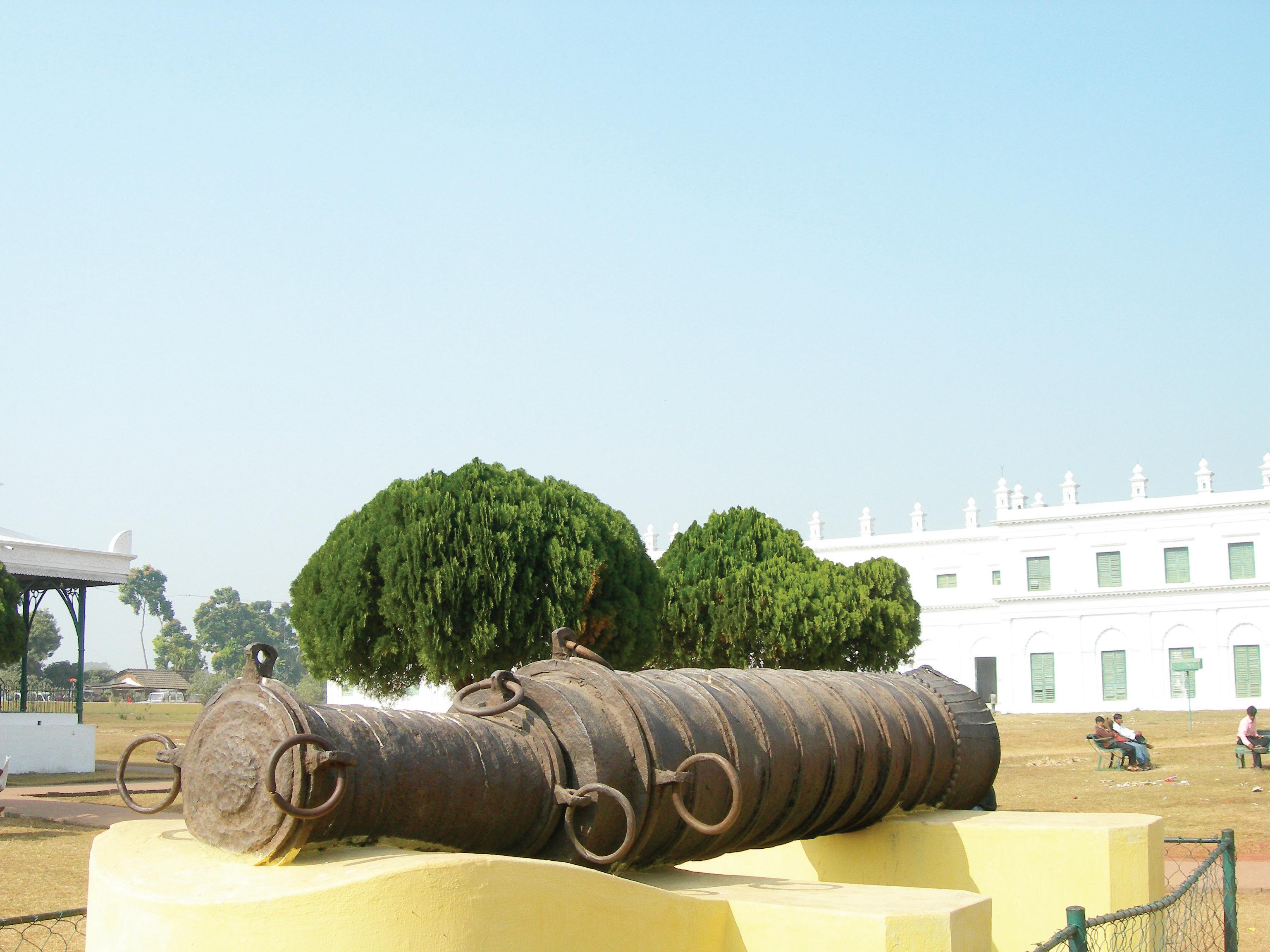
Mir Zafar and his descendants became the future Nawabs of the province, but they remained as puppets in the hands of British who did not waste much time thereafter in establishing their reign, not only in Bengal, but all over India. Nehru, referring to this battle in his book, aptly described Clive as having won the battle “by promoting treason and forgery”, thus marking a sordid start to British rule in India.
The price of betrayal
“Unless you visit Murshidabad, you will not understand the history of modern India,” says my omniscient guide Quasim, during
58 <> AUGUST (1) 2011 INDIAN LINK
2 3 5 6 1 INDEPENDENCEDAYSPECIAL
my recent visit there. “Here every stone and brick has a story to narrate, of lust and passion, obedience and conspiracy, power and greed!”
Accordingly, history becomes our other companion when browsing through the impoverished townscape dotted with ruined palaces, mosques, monuments, mausoleums, tomb and graveyards, all of which remain silent witnesses of a fiery past.
There is nothing much left to remember Siraj by, other than his grave in Khosh Bagh located on the other side of the river. He rests there alongside his grandfather and wife Luft-un-nisa, inside an arcaded mausoleum surrounded by a pleasant garden peppered with 108 varieties of roses. History reveals that Siraj had an unpleasant character: he was cruel, disrespectful to elders, greedy and a womanizer. But despite these negative traits, he is still adored; perhaps because of his fight against the English. People still come to his grave, light a candle and pray; but that’s not what happens when they storm Mir Zafar’s grave at nearby Zafargunge. It is alleged that they kick and spit on it. Mir Zafar was never forgiven for his disloyalty to his motherland. He was nicknamed Gaddar-e-Abrar in Urdu, meaning ‘unfaithful traitor’ and is remembered in history as another word for betrayal. In the foreground of his cemetery lies his ruined palace where the conspiracy between him and the British was hatched. Nothing much remains of the main edifice except the main ornamental entrance which stands as a soundless spectator to his shameful past. It is called the “Nimak Haram Deorhi”, meaning ‘traitors gate’.
Modern Murshidabad
The oldest monument of significance in Murshidabad is the Katra Masjid, a large mosque built on a 20-acre property in 1723, by Nawab Murshid Quili Khan. As per his wishes, he was buried under the staircase that leads up to the main hall, so that he could be trampled by all who climbed up and down. During its heyday, this mosque could easily accommodate thousands, and it had numerous cavetype cells for worshippers to read the Koran. Though this monument, like a few others in Murshidabad, is maintained by the Archeological Society of India, unfortunately signs of neglect and decay are evident all around.


The town’s most tourist-infected venue is the Hazarduary Palace, a three-storied edifice of Italian architectural style, fitted with 900 real and 100 artificial doors (‘hazarduary’ literally means a thousand doors), guarding 114 rooms.


Now a museum displaying an exquisite collection of memorabilia from the Nawabi era, it was built in 1837 by one of the descendants of Mir Zafar. Amongst several artifacts exhibited such as paintings, sculptures and weapons, the one that draws attention is the jewel studded sword of Siraj.

The colossal palace is nestled within a 41-acre walled area that also houses a Clock Town often referred as “Big Ben of Mushidadbad”, an impressive white-painted Imambara (a place of worship for Shiaite Muslims) standing on the same site where the old one built by Siraj was destroyed by fire, and a huge 4m long cannon, which has been kept idle after it fired its first shot. Its debut explosion was so loud that all pregnant women within 15km radius gave birth to their child prematurely.
You can still visit the ill-fated mango grove in Plassey where a monument has been erected to remind present generations of independent India of this significant event: a battle which was fought and won within a day, and in which the sovereignty of a nation was lost. Since then, it has taken another 190 years to regain total independence, but at the cost of myriad lives and sacrifices.
Standing there, surrounded by hordes of large mango trees, some of which presumably may have witnessed the battle–drama, I wonder what India would have been like today if a fair game had been played.
Planning a visit?
The best time to visit this town is during the winter from November to March.
Getting to Murshidabad is easy. Thai Airways (www.thaiairways.com.au) have regular flights from Australia via Bangkok to Kolkata, from where Murshidabad is only 4 hours away by road or rail.
Visitors can stay at West Bengal Government Tourist Lodge or at Hotel Samrat in nearby Beharampore. While in Kolkata, the Taj Bengal Hotel (www. tajhotels.com), which is very reminiscent of British India, can be a good choice.
AUGUST (1) 2011 <> 59 NATIONAL EDITION
www.indianlink.com.au
The confrontation was at the tranquil mango grove of Plassey, but the outcome of the battle had been decided long before the soldiers even came to the battlefield.
1. Siraj-Ud-Daula
2. A cannon from the Battle of Plassey
3. A monument at the mango grove that was the site of the battle that began Britain’s subjugation of India
4. The Palace with Thousand Doors
5. A Hindu nobleman’s mansion
6. The Imambara
7. Katra Masjid
4 7 8
8. An old mosque
India’s car revolution
Cars
development and
BY NOEL G DE SOUZA
Over thirty years ago, when one tried to speak in Australia about development in India, the response one got was: “Can Indians afford cars?” or “What sorts of cars does India make?” The three-wheelers which are still common transport on the winding streets of old sections of Indian cities used to be the object of jokes and even ridicule. Now Bajaj, which is the premier manufacturer of such practical vehicles, is reported to be about to unveil a battery-operated “green” version.
Within the last few years India has skyrocketed into motorcar production, emerging as the seventh largest car producer in the world and it could soon overtake Brazil which is currently the sixth
Within the last few years India has skyrocketed into motorcar production, emerging as the seventh largest car producer in the world and it could soon overtake Brazil which is currently the sixth. India produces 11 million vehicles annually, and exports oneand-half million of these. In 2008, it produced 2,641,550 motorcars and just a year later the figure touched 3,536,783 thus representing a jump of 33.9%. In the year 2000, it had produced only just over 800,000 cars.
Currently, India’s motorcar industry is rapidly expanding and sales have never been better. Many Indians, often publicised globally as poor, can afford cars! Indian cars are also
being exported, which means that their quality meets accepted international standards. The largest foreign buyer is the USA, with sales of over half-a-billion US dollars.
India’s car production falls below that of China which grew from an already incredible 13,790,994 cars in 2008 to 18,264,667 cars in 2009 (an increase of 32.4%). In the year 2000, China had produced just over 2 million cars. In contrast, Australia’s production of 227,283 in 2008 and 243,495 in 2009 (an increase of 7.1%) looks modest.
The United States story is just the opposite: it produced about 12.8 million cars in 2000 but this fell to just over 7.7 million in 2010. The European Union likewise, had a decrease in production from 17.1 million to 16.9 million during the same period.
For years the world has judged countries on the kinds of cars that they make. Likewise, individuals are often judged by the cars they own. Cars per head of population has been one of the indicators used to measure a country’s development. Neither space science nor atomic science can make as strong an impression on the average individual as can cars, particularly if they are of well-known brand names.
At one stage, India concentrated on making buses and trucks which were needed for public transport. Owning a car was then considered a luxury. Today, over 90% of vehicles sold in India are for private use and less than 10% for commercial use. Currently, around 200,000 motorcars are sold every month in India. In 2001, a total of about 55 million vehicles were registered, which escalated to over 106 million in 2008, during which time motorcar registration jumped from 7 million to 14 million.
The spectacular growth of India’s motorcar industry can
be attributed to economic liberalisation which began in 1991. This replaced the old “license raj” by relaxing cumbersome restrictions; it was an open invitation for the entry of foreign capital and know-how into the car industry. Almost all the big automobile brand names have come to be represented in Indian manufacturing.


Major European brands include BMW, Fiat, Mercedes-Benz, Renault, Volkswagen and Land Rover. America is represented by Ford, General Motors and Chevrolet. These are followed from Japan by Mitsubishi, Suzuki, Nissan and Honda, and from Korea by Hyundai.

Different car components were originally designed in different countries. No one country can claim exclusive credit for motorcar design. Today, parts which go into manufacturing cars in any part of the world
cheapest car, the Nano, manufactured by Tata. This car is in a long line of “people’s” cars, the first of which was the Volkswagen. The first Indian attempt at a small affordable car was the Maruti, now produced in India in collaboration with Suzuki. The Maruti Suzuki (there are several models) is India’s best selling car and supplies 45% of its market.

The Nano, despite some cost increases due to a rise in the price of components like steel, is still the world’s cheapest city car. Its very basic model has a rear engine, and it is lightweight and is highly fuel efficient. Models with no frills (such as no air-conditioning) are the cheapest and with such additions, the price rises. A new model, designed for European standards, is compact and cheap according to world standards.
Bajaj Auto, with the help of Renault and

60 <> AUGUST (1) 2011
INDEPENDENCEDAYSPECIAL www.indianlink.com.au
have always been indicators of
in this respect, India is emerging as a wealthy global contender



AUGUST (1) 2011 <> 61 NATIONAL EDITION
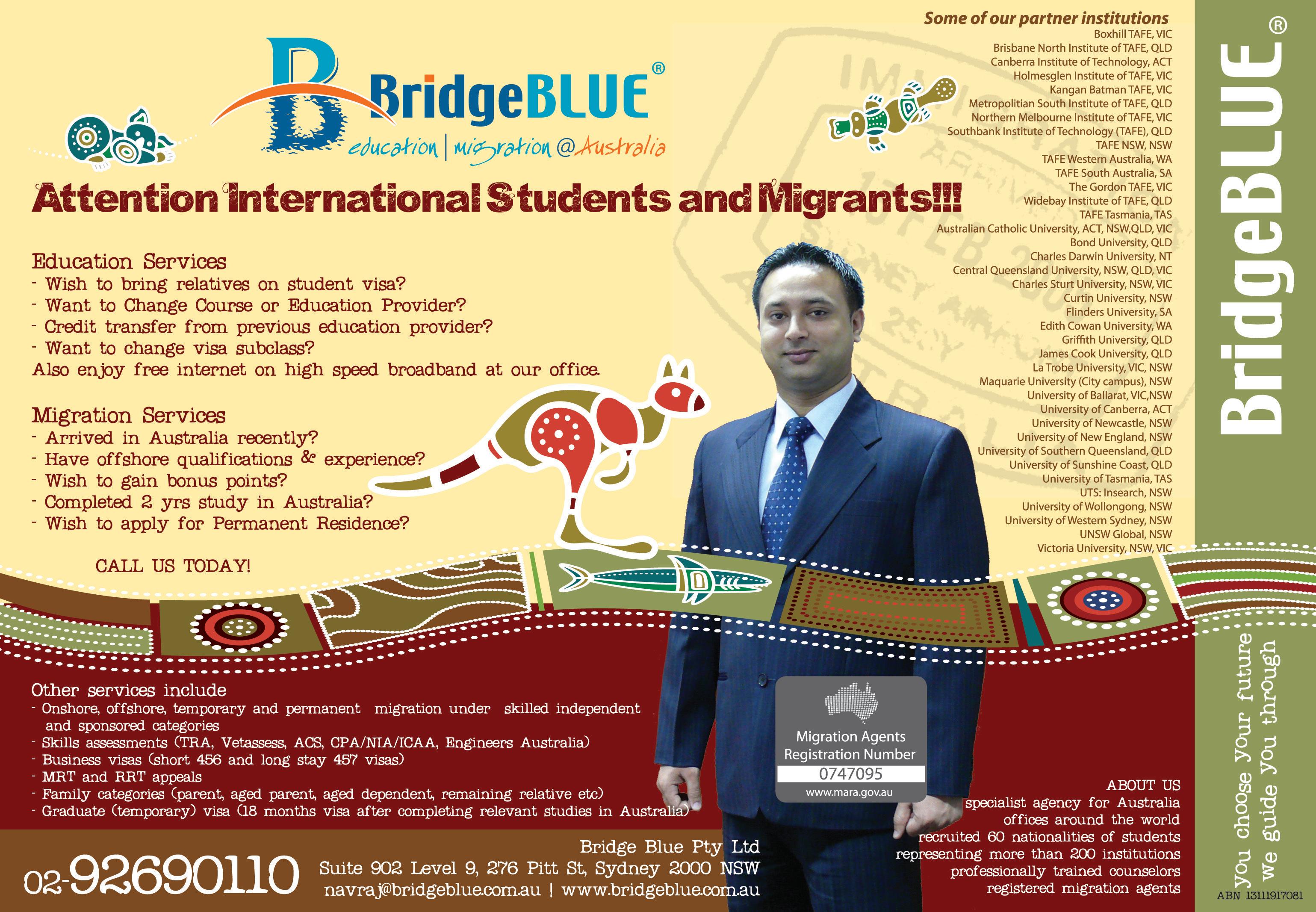


62 <> AUGUST (1) 2011 INDIAN LINK
BY SHERYL DIXIT
My 6 year old overheard a teleconversation I was having with my editor. I’d barely put the phone down when he asked, “What’s Indde-pen-ce Day?”
“Independence,” I said absently, “Stop tearing up that paper.”
“What’s that?” he insisted.
“It’s the day when India got free,” I said impatiently. “Pick up that eraser.”
“Was India a prisoner?”

“Yes, yes, yes, of the British! Now don’t open that sharpener or you’ll drop the shavings….there! See? I told you….”
Naturally, he tuned out at that point. Which made me think, when I was calmer, how do you explain the concept of India’s independence to this generation of Indian-origin kids who live so far from the land of their birthright. He returned to the attack in a while.
“Does Australia celebrate independence?”
“In a way, I guess. That’s why we celebrate Australia Day.”
“So was Australia a prisoner too?”
“Well, they were a part of the Commonwealth,” I said lamely, feeling like I was inexorably digging myself in even further. In a moment I would display an alarming lack of knowledge, dangerous to a child who believes that ‘Mummy knows everything!’
“What’s the Commonwealth?”
“What’s that in the backyard? Is it a kookaburra?”
It worked, and the next hour was spent in him and his brother imitating the sounds of the bird.
When my headache finally settled down, I realised that if we came back to the subject again (and we sure as hell would!) I would have a lot of explaining to do. Yes, we did celebrate Independence Day in school, trying unsuccessfully to stay in step during the March Past, nervously recalling the words of the Pledge, singing the National Anthem off-key, which is probably the only thing I got completely right. My green skirt, white blouse and red tie would be crisply ironed, our canvas shoes would be excitingly white, and even if they were not, we could expect one of our mates to fish out a piece of white chalk just in time to do a bit of damage control. The hair would be braided up into two neat plaits and one was ready for a day of national revelry.
My dad, bless him, absolutely adored Independence Day celebrations, for that matter Republic Day too, and Hindi movies, soap serials, Chayageet – in fact, anything that he could watch on our colour TV, “first in the neighbourhood, sent by my brother in Dubai!”. He would watch the
An aura of Independence
Celebrating I-Day in Australia is a far cry from the patriotic fervour one experiences back home, but it can still be an interesting experience
pre-transmission coloured lines adorn the screen in mute, but once the DD logo began revolving on the screen, the volume was up and at 6am onwards, the entire household was roused through the national anthem, gun salute and sycophantic announcer explaining details of the ceremony at India Gate.


In my teens, I usually chucked a pillow over my head and tried to go back to sleep, but eventually the only other option was to wake up and hope that at least breakfast was an exciting one. Watching scenes unfold on the screen, the march pasts of various battalions, intricate dances performed by adept dancers arrayed in the colours of their State, the graceful, stately parade of gleaming machines of war, the bands resplendent in their uniforms and shining instruments performing solemnly, but with precision, on drums, bagpipes, trumpets and flutes, always captured my attention and filled me with patriotic pride. My brother, always a font of information, relevant or not, would lounge around reeling out facts and figures of the displays, which no-one but my mother actually listened to. After a few years of following the same rote, it was actually possible to sleep through the opening ceremony, particularly if my friends and I had indulged in our own private celebrations the night before, in anticipation of the next day being a holiday.

But when I moved to the Middle East and worked in Dubai, Independence Day suddenly took on a new significance. Perhaps not actually living in India made us feel more patriotic than usual, but with a number of Indians working in our department, the day was always looked forward to, and we would go the extra mile to celebrate the day. For starters, we would deck out in Indian clothes, and suddenly the normally drab office would look resplendent as people walked around in variously hued saris, salwars, churidars and bedecked themselves in amazing traditional jewellery. Mangalsutras, bindis and chunky kadha bangles that hadn’t seen the light of day in ages, beautifully complemented these outfits. Some of the guys enthusiastically decked themselves out in embroidered kurta-pyjamas and kolhapuri chappals, and a few of the more adventurous non-Indians would dress up too. And a few of the more enthusiastic or patriotic bedecked themselves in the colours of the Indian flag. But the best part was yet to come. Around lunchtime, a couple of us would sneak out to an Indian restaurant and buy a whole array of delicious vegetarian food from contributions collected the day before. We would then enjoy a sumptuous lunch of samosas, chaat, khandvi, dhokla, wadas, chutneys, various chaknas, while gulab jamun, cashew burfi and pedas provided a fitting end to the feast. We would then take a group picture to capture the moment, and lounge back to our desks, replete and happy to have celebrated I-day with vigour.
And now we’re in Australia, where our association with Independence Day is through the annual fairs held in mid-August. I have to admit we haven’t been enthusiastic in attending in past years. If we have felt brave enough to tackle the vagaries of weather (it inevitably rains when we decide to go), and the crowds (in which our kids try desperately to get lost), we end up sauntering in around late afternoon, and with our luck the exciting food is usually sold out. This year will be no different, if we finally decide to go. My husband will often wonder aloud why they don’t sell beer at the venue, I will want to visit all the stalls and buy all kinds of exciting overpriced handicrafts and a few clothes that I’ll never wear, the kids will demand ice-cream, fairy floss, face painting, or simply a play area where they can climb, wrestle, jump, roll and shout to their heart’s content.
But we’ll still briefly savour the experience of India, as enthusiastic groups of children perform various routines on stage, and classical dance and Bollywood are sure to figure in the programme. The cheerful noise of background music and announcements, the hustling and bustling crowds who always travel in the direction opposite to us, netas making speeches, aromas from food stalls filling the air….it will certainly be a taste of home. Perhaps it may not work in explaining the concept of India’s Independence Day to my inquisitive kids. But it will give them a glimpse of the tradition, heritage, variety and diversity that makes this great, free country. One that, as they grow older, they could learn to respect and admire, understand and perhaps even experience.
So I guess we’ll be buying our flags, battling traffic and joining the revels in the rain!
AUGUST (1) 2011 <> 63 NATIONAL EDITION
INDEPENDENCEDAYSPECIAL
The course of Indian cuisine
The history of Indian food has improved in richness and variety through the ages, and its resplendence is now shared with the world

Indian Cuisine is more than 7000 years old, and has survived many cultural and geographical changes. It has evolved significantly over the years, gaining its richness from various travellers and invaders, enhancing, rather than losing its identity. Early Indians ate food that was available naturally. Fruit, wild berries, meat and fish were the main food of nomadic people. With the advent of civilisation, people settled and started farm, leading to the discovery of food crops, pulses, etc. Food in ancient India was cultivated in the fertile river valleys. The two factors that played a major role in Indian cuisine reaching its present status have been foreign invasions and the religious beliefs of its people. Let’s travel down the ages to where it all started and where it stands today.
2000 BC and earlier:
Many people believe the history of Indian civilisation is as old as mankind. From as early as 7000 BC, sesame, eggplant and humped cattle were found in some archaeological references. By 3000 BC, spices such as cardamom, turmeric, black pepper and mustard were being harvested in India. In Vedic time a normal Indian diet consisted of fruit, honey, meat, game hunting and dairy products. In ancient India, each town would have a huge storage building for grain such as rice and barley, which could be kept for a long time without perishing through wet or damp.


The formal Indian civilisations began with the Harappan and Mohenjo-Daro civilisations around 2000 BC. They dined on meals that primarily consisted of wheat, lentils, and rice. Sometimes they supped on the meat of chickens, goats, sheep, cows, and pigs. Most people believe that the Ayurvedic tradition or the holistic approach to food began with this civilisation. This approach believes that everything that we eat affects both our mind and body. Therefore, food should be pure, natural, and balanced. The core balance consists of balancing the six tastes - sweet, sour, salty, pungent, bitter and astringent.
From 1000 BC
The roots of Hinduism are believed to be laid around this time, as well as the religious texts, Vedic scriptures and even the Mahabharata. The caste system was also developed during this time which led to the division of food habits, mainly the Brahmins having vegetarian foods
Meat was typically eaten on rare occasions, or not at all. Examples of vegetarian food that early Indians ate included chapatis served with vegetables, lentils and yogurt. Rice, yogurt and vegetables were another popular combination.
1200-1500
AD
This period was marked with Muslim and other invasions into the country. In 1498, Vasco de Gama arrived in India, leading to its colonisation. The main effect of Portuguese cuisine was seen in Goa, but influence from traders such as the Arab and Portuguese diversified sub-continental tastes and meals. As with other cuisines, Indian cuisine absorbed the new-world vegetables such as tomatoes, chillies, and potatoes.
1500-1800 AD
This is the period of the Moghul Empire and the emergence of Mughlai cuisine that people now associate with India. It includes the addition of several seasonings like saffron, nuts and cooking in the “dum” or sealed pot method of cooking. In south India, the Sultan dynasty in Hyderabad led to similar influences in the region. There was a continuation of other European influences in parts of south India such as Kerala, where you see the beginning of Syrian Christian cuisine.
The Mughal rule in India added rich gravies and the taste of kebabs, leading to a revival of non-vegetarian foods. Lavish dishes were prepared during the reigns of Jahangir and Shah Jahan. The Nizams of Hyderabad developed and perfected their own style of cooking with the most notable dish being the biryani, often considered by many connoisseurs to be the finest of the main dishes in India.
1800-1947 AD
This was the period of the British rule in India and the emergence of Anglo-Indian cuisine. The most notable cuisine that developed in this era was curry. The notion of was what the British, during their rule in India, referred to when eating spicy food. In the United Kingdom, this was the word used to describe any type of savory Indian food. Sometimes, the word was primarily used to denote a sauce-based dish flavored with curry powder or a paste made from the powder and oils. The first recorded or published recipe for curry in Britain is by a woman known as Hannah Glasse. In her 1747 book The Art of Cookery which appeared in twenty editions throughout the Eighteenth and Nineteenth centuries, her initial recipe for ‘curry’ included coriander seeds and pepper. Then by the fourth edition of the book, she added ginger and turmeric.



Post-Independence
The post-independence period changed Indian cuisine to sub-continental cuisine as the Indian land mass was divided into several countries. Most notably, Pakistan and Bangladesh inherited this ancient cuisine that has developed into their present day culinary tradition. Also the cuisines were subdivided into different Indian regions and states according to the cultivation of crops, such as the use of maize in north India and more of rice in south India.


But now with modernisation, development of communication, infrastructure, information technology and globalisation, all types of cuisine are available in India. Various kinds of pasta and spaghetti from Italy, the ever-popular chowmein from China, tacos and enchiladas from Mexico, the Continental pizzas and burgers, the French flambé etc., are a popular few. However, I would like to think that the Indian tradition of food can still be described through three famous words in Sanskrit literature: Atithi Devo , which means ‘the guest is truly your God’. This I feel is quite appropriate for Indians where even the poorest in India look forward to guests and are eager to share their meals with them.
And most important is the Indian women’s pride that will not let any guests go hungry or unhappy from her home.

www.indianlink.com.au INDEPENDENCEDAYSPECIAL
BY
“We always make our travel arrangements through Ram World Travel for its excellent service and best price!”
ONE STOP SHOP FOR:

* Competitive international airfares to all parts of the world

*Special airfares to Indian sub-continent
*Package and tailor made tours to India and Nepal
*Holiday packages to all parts of the world
*Round the World Airfares

*Hotel accommodation, car hire and guide services
*Travel Insurance
*DAILY DEPARTURE TOURS OF INDIA FROM: $975 P.P (ask for color brochure)
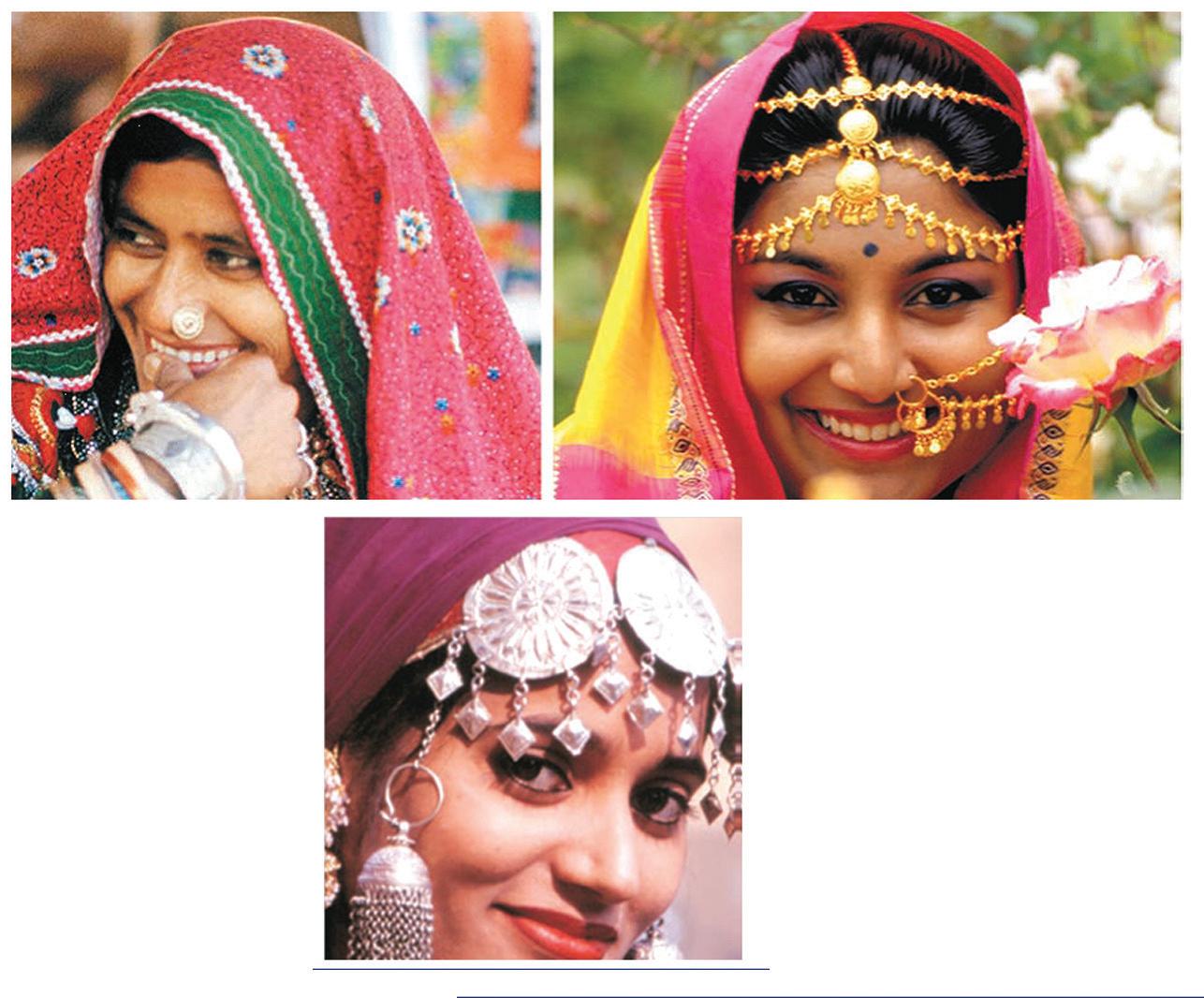


5/32, York Street, Sydney, NSW 2000. Tel: (02) 9262 1661 Fax:(02) 9262 1217

Email: ram@ramworldtravel.com.au Web: www.ramworldtravel.com.au

AUGUST (1) 2011 <> 65 NATIONAL EDITION


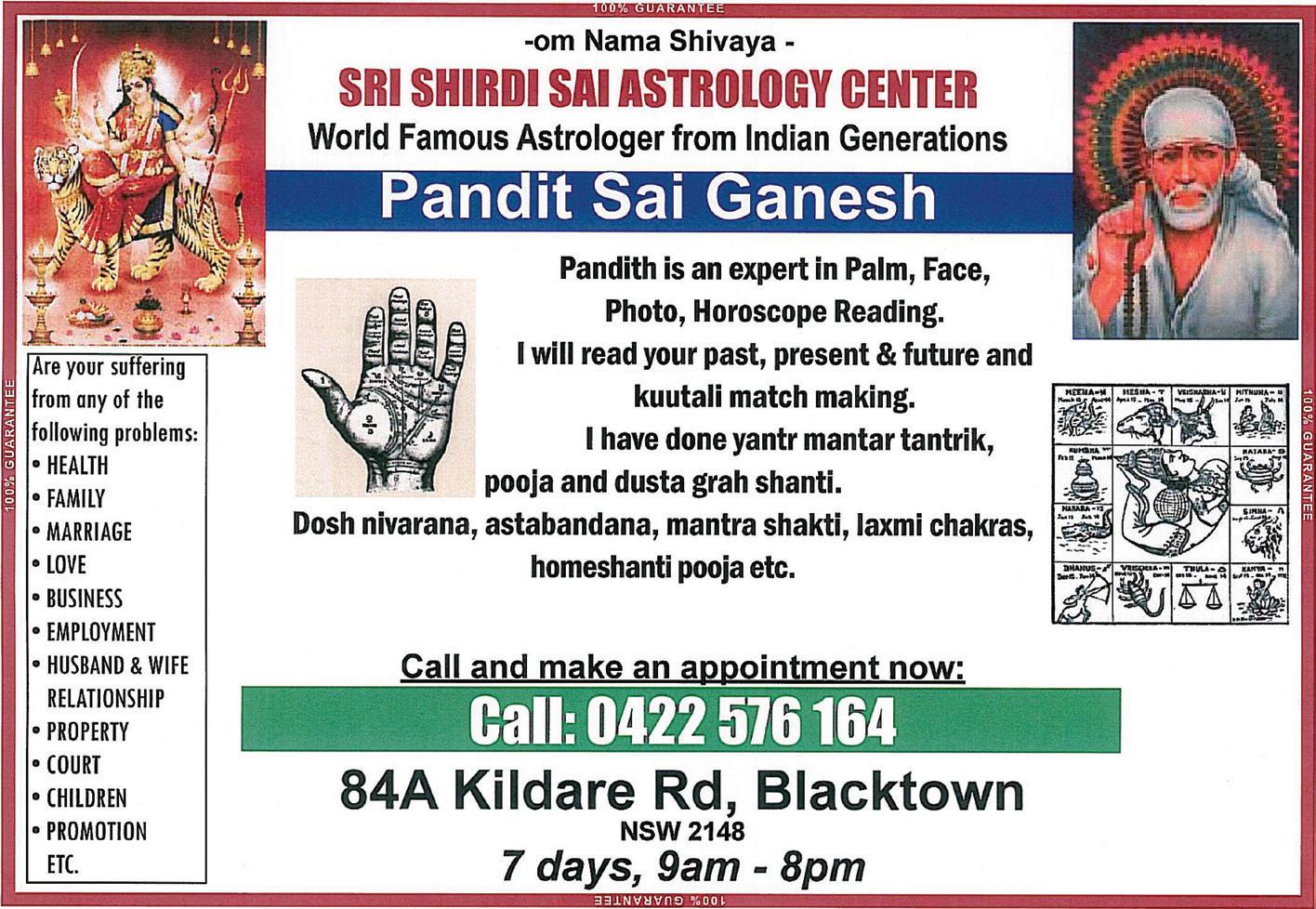
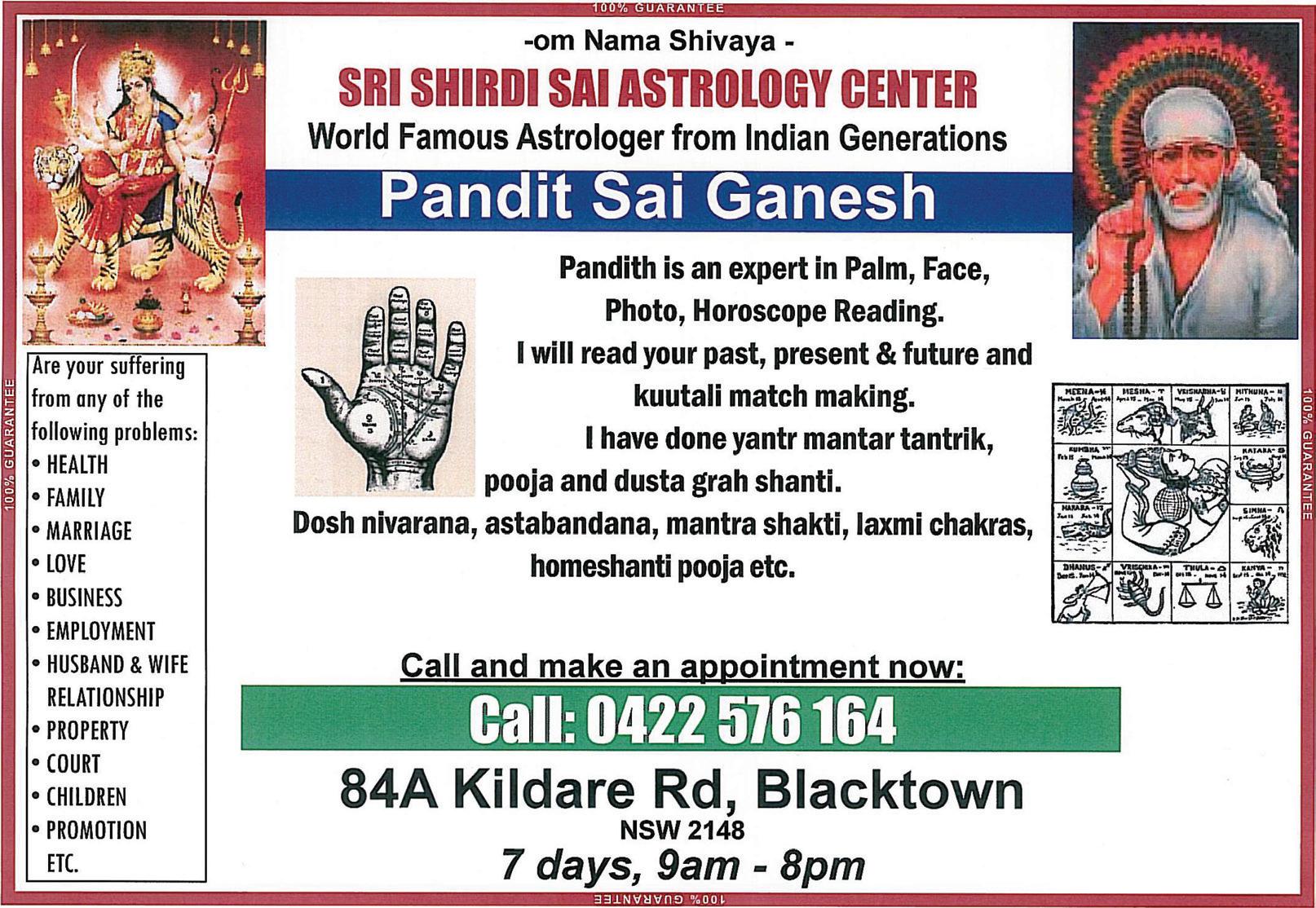

66 <> AUGUST (1) 2011 INDIAN LINK MARRIAGE WORK BUSINESS EMPLOYMENT HUSBAND & WIFE RELATIONSHIP PROPERTY COURT CHILDREN PROMOTION ETC Call and make an appointment now: Call: 02 8604 9320 0422 576 164 0412 350382 Email: adipavankalyan@gmail.com 84A Kildare Rd, Blacktown NSW 2148 7 days, 9am - 8pm
Pretensions to humanity
BY ROY LANGE
Hillary Clinton’s recent visit to India saw her make an appeal for India to be more assertive in world affairs. She wants emerging India to have a foreign policy to match its vastly increased economic clout.
An instinctive reaction to this is to accuse the US of wanting a counter-balance to China. The US State Department is losing sleep over China’s rather intimidating growth, and will warmly welcome any ally to stem the dragon’s charge.
But is it a given that India will take a Chinanegative stance? Despite the two country’s rocky history, could India and China form an informal alliance against western powers that still regard their military and economic dominance as a birthright?
I certainly feel that for India to tow the American line is no done deal; indeed India may loosely join ranks with the Red menace! Disrespecting Clinton’s strong desire for India to go aggressively hard on countries that perpetuate human rights violations.
from China’s musket and blanket diplomacy. India will have to flatly ignore America’s histrionic pleas for her not to trade with badly behaved States. This will be far easier to execute if India and China form a disobedient cooperative of countries that refuse to interfere in other States human rights affairs, and certainly a refusal to be assessed by other States. A sulking and antisocial, non-alliance movement. Could this eventuate? Rather than India indulging the west by pointing a finger at China’s appalling human rights record I think they could, for a time at least, pretend to have a relationship of convenience with China. These countries could enjoy sharing the commonality of furiously wanting to reclaim their destiny, at whatever cost, no matter how dear.
For in the vast scale of history it is really only late yesterday evening that Western powers have become born again greenies and well-dressed social workers. Much like the condemned murderer who, out of sheer terror, on the eve of his execution, finds Jesus.

Australia, lately plagued by bribery cases and animal rights atrocities (my Hindu wife nearly passed out), is a classic example. They are struggling to be competitive in a world that has increasingly powerful players who don’t give a waterboarding about any rights abuse, or environmental agenda, in any form.
India can see that Clinton’s wish is ridiculous. Both the US and India hold no true shining torch aloft for the rights of man. America’s human rights record is now personified by Abu Ghuraib, and India has miraculously escaped any widespread condemnation of it’s erstwhile Papa interrogation centres where many Kashmiri civilians spent their last terrified night.
Sceptics would propose that the American preoccupation with human rights is because this moral high stand is used as a bargaining chip in international trade, rather than any warm Christian spirit. I don’t know if it’s that contrived but certainly walking up to this lofty pulpit is terribly bad for business.
China is Africa’s leading trading partner. They conducted USD 120 billion of trade with the oil rich continent last year. This was achieved in a handful of years without giving a moment’s pause to reflect on the niceties of dealing with militias that machete children and electrify peasant’s genitals. In fact, that has been China’s huge advantage. Supplying Sudanese fighters with anti aircraft guns pays off a million-fold when oil exploration rights are awarded.
Obama said India is not emerging; it has arisen, and in this new paradigm it is energy starved. If an already energy famished India is to have an even vague future semblance of the western consumption of hatchbacks and stainless steel fridges, this famine will become far more acute. India will have to become markedly more aggressive and take a page
Australia’s competitively expensive and embarrassingly incompetent attempt to join New Zealand in some form of emissions trading scheme and it’s precursor the carbon tax, is bewildering for a country that survives almost exclusively by embracing it’s carbon footprint. Expecting Asian countries deprived of a hundred years of industrial progress, to follow the piper is a bedside story. It is as futile as an Australian tourist visiting a Hong Kong gambling den and ill advisedly insisting that all the punters immediately stop smoking because you’d get a fine in St Kilda.
Another great example has recently presented itself. The Securency scandal has thrown several executives into a terminal state for allegedly bribing wonderfully colourful Colonels of shady intelligence agencies in every backwater of the world. India and China would see that as standard operating procedure, hardly worth the effort of a memo.
In Australia it is corporate armageddon and voluminous fill for newspaper spreadsheets. This compels these companies to awkwardly compete in an international business environment that does not play by the Queen’s rules. Fighting bare-knuckled Thai kickboxers with a pair of woollen mittens knitted by Mommy is not a good idea.

India needs to take full advantage of this handicap. She must enter countries that make Bihar look like Sussex. Build oil rigs on fields that no sane man would even spit on. Dam rivers with political prisoner labour, wipe out cute endangered otters and flood areas the size of the Waikato. Much like the western hemisphere has done for hundreds of years. Allowing them to lord it over nations much lower down the food chain.
Clinton had better pray India does not find this inner shark. Ambitious India is not the Ganga Din they know and love.
AUGUST (1) 2011 <> 67 NATIONAL EDITION
The newly pious West will be dismayed if India and China choose to form a formidable alliance, leading to an eastward tilt in the global balance of power
www.indianlink.com.au OPINION
Rather than India indulging the west by pointing a finger at China’s appalling human rights record I think they could, for a time at least, pretend to have a relationship of convenience with China




68 <> AUGUST (1) 2011 INDIAN LINK NSW Ashfield 02 9799 5110 Bankstown 02 9707 2611 Blacktown 02 9676 1799 Castle Hill 02 8850 1911 Eastwood 02 9874 9055 Hornsby 02 9476 6020 Hurstville 02 9570 8728 Liverpool 02 9601 2442 Parramatta 02 9890 7177 Strathfield 02 9746 8548 VIC Box Hill 03 9899 7871 Footscray 03 9687 4888 Glen Waverley 03 9887 8064 Oakleigh 03 9568 1008 Preston 03 9471 9966 Richmond 03 9004 3762 Springvale 03 9574 1588 St.Albans 03 9367 9999 NZ Newmarket +64 9 524 0073 Dannemora +64 9 265 0900 North Shore +64 9 410 0095 “Your
success” (2U &3U Maths) Want to revise your maths to maximize your mark ?? 3 Understand Key Concepts 3 Ability to reason a range of mathematical contexts 3 Develop skills in applying mathematical techniques to problems 3 Clear and Concise worked answers 3 Improve your self study ability
Maths guide to HSC

AUGUST (1) 2011 <> 69 NATIONAL EDITION online www.indianlink.com.au at home / in car Subscribe to Indian Link Radio for $9.95 each month * Conditions apply: Minimum 12 months subscription, $ 50 refundable deposite call us 1800 015 847 Hindi Music 24/7masti Talkback News
Highs Rocky Mountain
BY THOMAS E KING
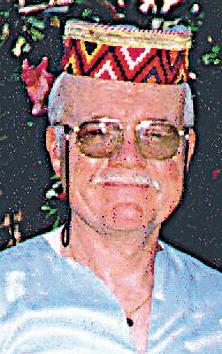
The majestic and mesmerising Canadian Rocky Mountains are the ultimate picture postcard destination. Eternally snow-capped peaks, however, are but one of many lures spread over this pristine part of the planet. Vast alpine forests, ancient glaciers, turquoise lakes, an abundance of wildlife and sophisticated resort communities are also part of the picture. Along the ultra picturesque Icefields Parkway a scenic motorway extends from Jasper, past glacial Peyto Lake, beyond to Lake Louise and onwards to Banff in the south western corner of the Canadian province of Alberta.
By far the most soothing and informative way to reach Jasper is on the Rocky Mountaineer’s Rainforest to Gold Rush two-day rail journey that begins in Whistler, the chic mega popular hiking-in-summer and skiing-in-winter resort north of Vancouver, British Colombia. Whistler made sporting headlines around the globe early last year when the stylish sporting destination was the venue for the 2010 Winter Olympics. During the summer season from May to late September, there are weekly train departures that allow comfort-craving visitors to see the diverse beauty of Canada’s West in true style.
I gazed in wonderment at the 3954 metre behemoth (Mount Robson), the highest peak in the Canadian Rockies, but only had a fleeting glimpse of its icy summit
Cosily cocooned inside the custom designed bi-level GoldLeaf Dome Coach, I relished gourmet meals prepared by an on-board chef and while looking through full length windows, revelled at the everchanging scenery as the alldaylight rail odyssey travelled through the dramatic desert-like Fraser Canyon and the Cariboo Gold Rush region. One of the most breathtaking sights I saw was near the end of one of the most spectacular train trips in the world, the sky-topping Mount Robson. I gazed in wonderment at the 3954 metre behemoth, the highest peak in the Canadian Rockies, but only had a fleeting glimpse of its icy summit. Clouds swirl around the mountain much of the time so even a brief sighting is a bonus, I learned.
Relaxed, refreshed and well-informed about this glorious area, I arrived in the small town of Jasper, the much-heralded ‘Gem of the Rockies’, and was seamlessly transported to the historic Fairmont Jasper Park Lodge. Bing Crosby and Marilyn Monroe were guests at this polished property built predominately of wood. The former frequently teed off on the resort’s stunning 18-hole golf course while the latter, when not exhaling her lines for a 1950s film, gazed at mountain highs. Today, visitors from around the world still do the same.
About half way between Jasper and Lake Louise and just off the 257 km long Icefields Parkway, I had the unusual chance to get up close and personal with a remnant of the last Ice Age, the Colombia Icefield. Ringed by a succession of lofty peaks including 3747-metre high Mt Colombia and spanning some 325 sq. km, it’s the largest block of ice in the Canadian Rockies! The Athabasca Glacier is one of 30 ‘rivers of ice’ emanating from the several trillion ton mass of compacted snow.
Brewster Travel Canada operates numerous hour-long 5 km excursions every day during the visitor season to


the cusp of this 365-metre thick glacier in specially built 6-wheel Ice Explorers. Thick jackets are handed out for those wanting to tip toe across the frozen landscape. I opted for an Athabasca interlude, slipping and sliding for a few minutes on a glacier that has retreated 1.5 km in 125 years. Between 1870 and today, the fact-filled Ice Explorer driver said, the glacier has lost more than two-thirds of its volume and more than half of its surface area.
I could easily see the process of constriction was continuing. It was freezing cold as I gingerly walked beyond the slow moving bus-like vehicle, but small rivulets were winding their way across the icy landscape. Several passengers had brought plastic cups with them and after a sample taste, passed them around for others to drink the ever-so-pure glacial water.
The awesome Athabasca Glacier is much photographed and so is Peyto Lake, one of the world’s most beautiful glacial lakes. I reached a vantage point above the lake after a short walk in the woods. The summertime setting of evergreens and mountain peaks before me was sublime, but the real showstopper was the lake which was the colour of turquoise.
The shade of Peyto Lake is so vivid, so intense that you could be misled into thinking that the idyllic forestencircled body of water was an elaborate creation in Photoshop. That’s exactly what I thought while viewing a lake fed by the melt waters of Peyto Glacier. The real reason for its spirited hue, however, is due to the forces of nature.
Glaciers are actually (ever-so-slowly) moving rivers of ice. As their immense weight passes over rock, surfaces are scraped resulting in an incredibly fine rock powder. During summer, rivulets and streams flowing across melting glaciers carry significant amounts of this rock flour into natural basins like Peyto Lake. The suspended rock particles give these bodies of water their bright and almost unreal turquoise colour.
Peyto Lake is but one scene stealer in Banff National Park. Farther south I came across what many visitors consider is the Rockies’ ultimate picture postcard destination. Cradled in a small glacial valley, the Victoria Glacier looms behind the turquoise waters of Lake Louise, named for Princess Louise Caroline Alberta, the fourth daughter of Queen Victoria and wife of the Governor General of Canada.
“One of the most beautiful lakes in the western hemisphere” also gets its vivid colour from suspended microscopic glacial silt. Its frigid waters – far too cold for swimming – were my constant companion as I walked along a lake-skirting path to the Victoria Glacier. Twice during my walk I heard a thunderous roar as an unseen, but not so distant chuck of ice succumbed to gravity. Lake Louise is a supremely relaxing place where visitors can admire nature’s handiwork while lazing about in luxurious iconic heritage accommodation at the circa 1890 Fairmont Chateau Lake Louise. Some guests stay indoors, virtually only glancing up now and again from their books! Others, in contrast, enjoy the great outdoors in a variety of inventive ways.
Earlier during my mid-summer’s wander through the spectacular wilderness of British Colombia and Alberta I had briefly stepped onto one glacier; the next adventure was to fly over another. Icefield Heli Tours operates a daily timetable filled with flights that circle several glaciers and cruise over aqua green lakes. Expert commentary highlighted the thrilling adventure as I whirled from one jaw-dropping scene to the next. Time flew by and all too soon we were flying back to base, pausing only
70 <> AUGUST (1) 2011 INDIAN LINK
2 TRAVEL 1
This magnificent location is perfect to enjoy the breathtaking beauty of Nature in its humbling splendour and majesty
1. Rocky Mountaineer trains offer unexcelled service in unforgettable wilderness surroundings.

2. The colour of Peyto Lake is caused by suspended rock particles known as glacial rock flour.
3. Lake Louise and the Victoria Glacier form the most iconic image of the Rocky Mountains.

4. During excursions with the Brewster Ice Explorer visitors can actually walk on the Athabasca Glacier.

5. Take the Banff Gondola for an unsurpassed vista over mountains and resort village.


Photos: Thomas E. King
Travel notebook
momentarily to hover above a dazzling waterfall which had a heart-thumping 300 metre drop to the valley floor below.
Back on land and setting off again on the Icefields Parkway, Banff, a resort town for well over a century, is the last of three resort destinations on the popular motorway. Banff was created purely as a tourist destination for affluent Victorian-era travellers who would arrive on the Canadian Pacific Railway. They would come to soak in the rejuvenating hot springs or escape to the mountains.
Today, the charming alpine-style village is still the staging point for explorations of the 6641 sq. km Banff National Park, the third oldest national park in the world and the oldest in Canada. Established in 1885, this reserve together with the adjoining Jasper National Park, two other gazetted wilderness zones and a trio of provincial parks are internationally recognised by UNESCO. The Canadian Rocky Mountain Parks World Heritage Site which encompasses 20,585 sq km is one of the largest protected areas in the world.
During a brief but exhilarating gondola ride up Sulphur Mountain I felt as if I could see it all as the view of snow capped peaks encircling the glacier carved Bow River Valley, placid deep green lakes and tiny Banff become more and more magnificent. The magical embrace of the mighty mountains had truly touched me.
CANADIAN ROCKY MOUNTAINS
FLIGHTS
Air Canada operates the daily CA34 non-stop flight from Sydney to Vancouver - one air gateway to the Rocky Mountains - and frequent onward flights to Calgary, the other gateway. The 14 hour flight to Vancouver is in a Boeing 777200LR equipped with a personal touch screen TV at every seat and in-seat power for laptops. See your travel agent or contact Air Canada Australia-wide on 1300 655 767 for details of flights and fares. See www.aircanada.com. Interstate passengers can easily connect with CA34 as it departs Sydney at 1330.
TRAVEL
Rocky Mountaineer offers over 45 train holiday packages ranging from 2 to 25 days on four distinctive rail routes. Three routes incorporate travel into the Canadian Rockies while there’s a 3½ hour train excursion, Whistler Sea to Sky that operates from Vancouver to the mountain resort of Whistler. Over the past 20 years, Rocky Mountaineer has grown to become the largest privately owned passenger rail service in North America and has welcomed more than one million guests. See www. rockymountaineer.com
ACCOMMODATION
Superb Fairmont hotels located in Jasper, Lake Louise and Banff all offer distinctive heritage accommodation in elegant surroundings. See www.fairmont.com. Reservations can be made through the local representative office on 1800 804 456.
EXCURSION
While Vancouver is the gateway to British Colombia it’s not the provincial capital. That honour goes to Victoria, a charming and stately municipality which remains the most English of Canadian cities. Among numerous activities and attractions I enjoyed during a wonderful three day stay in the 325,000-strong capital was the Royal British Colombia Museum with its comprehensive display of First Nation People, high tea at the iconic Fairmont Empress Hotel and the exquisite floral displays at the world famous Butchart Gardens, one of the province’s top tourist attractions.
INFORMATION
The Canadian Tourism Commission is able to provide useful information for your Rocky Mountains holiday. See www.canada. travel as well as www.travelalberta.com and www.banfflakelouise. com. Other useful websites are Brewster Travel Canada www.brewster.ca and Icefield Heli Tours www.icefieldheli.com
AUGUST (1) 2011 <> 71 NATIONAL EDITION
3 4 www.indianlink.com.au

72 <> AUGUST (1) 2011 INDIAN LINK
We
• Property: Buying, Selling & Property Management



• Loans : Home, Commercial , Refinancing and Self Managed Super Funds Loans


• Financial Planning: Retirement & Investment Planning
• Superannuation: Personal & Self Managed Super Fund
• Insurance: Life/TPD/Income Protection/Trauma
• General Insurance: Home & Contents /Public Liability

AUGUST (1) 2011 <> 73 NATIONAL EDITION
are a ONE STOP SHOP for
your REAL ESTATE & FINANCIAL needs
all
M: 0401687842 E:
Paul Pius Financial Adviser
ppius@anfg.com.au
Consultant M:
E: shaktika@firstnationalblacktown.com.au
PUT YOU FIRST
Blacktown Office: 3/94 Main Street Blacktown, NSW 2148 Head office: Level 5, 4 Columbia Court Norwest Business Park, Baulkham Hills, NSW 2153 Shaktika Singh Property
0405514712
WE


74 <> AUGUST (1) 2011 INDIAN LINK
Can India turn it around?
BY RITAM MITRA
1999 test matches had been played prior to the first Test between India and England at Lord’s earlier this month. In that time, these teams played each other 99 times. But never has so much hinged upon a series between these two sides. Indeed, until now, never have these two sides looked at each other as their greatest threat; India and England are, in many respects, the two best sides in the world (although officially England sit third on the ladder).The immense build-up to the series opener in London was thus truly appropriate to the occasion of the 2000th Test and 100th face-off between the teams – but as the first two matches unfolded, it was only one of the sides who delivered their best.
The biggest news in the lead up to the series was the absence, through injury, of marauding opener Virender Sehwag for at least the first two matches. Although India were victorious in the West Indies without his services, their reliance on him is often understated and it is important to consider just how big a weapon had been disarmed. Sehwag is a unique player – quite simply, there is no other in his mould on this planet. While Gayle, Watson and Dilshan are all brutal on their day, Sehwag is the one opener who can upset a bowler’s line and length on a consistent basis, change the course of a game within a session, and force a result where none looks possible.
However, injuries are part and parcel of the sport, and fitness is often the reason some players are labelled “talented” while others become “greats”. After the first Test was over, Gautam Gambhir joined the injury ranks with a badly bruised elbow, but it was Zaheer Khan’s hamstring injury suffered early in the piece at Lords that really set the alarm bells off. India played out most of the first Test with two seamers already tired from a testing West Indies tour, and an off-spinner who looked mediocre at the best of times. Zaheer’s figures read 13.3-8-18-2, when he sustained the strain. Fast forward to the second Test and the Indian bowlers leaked England’s last 308 runs in just over 60 overs. The first Test was, interestingly enough, one way traffic from the very moment Zaheer was injured. Trott (incidentally, now officially the second-best Test batsman in the world) and Pietersen combined for a big partnership to build a strong foundation for England’s more flamboyant middle and lower order. They delivered, and with a flourish of late hitting to make up for the earlier toil which he described himself as the “hardest [he’d] ever had to work”, Pietersen hit 202 not out in a menacing first innings of 474/8 dec. Praveen Kumar picked up 5 wickets, a just reward for 40 overs of hard work, but it belied a bigger problem – an ineffective Ishant Sharma and an extremely expensive Harbhajan Singh.

India’s much vaunted batting lineup - including what is often referred to as the greatest middle order in not only India’s, but Test cricket’s history - with 30 000 runs and over 100 Test centuries between batsmen 3, 4 and 5 - then failed collectively against a remarkably potent English attack - not
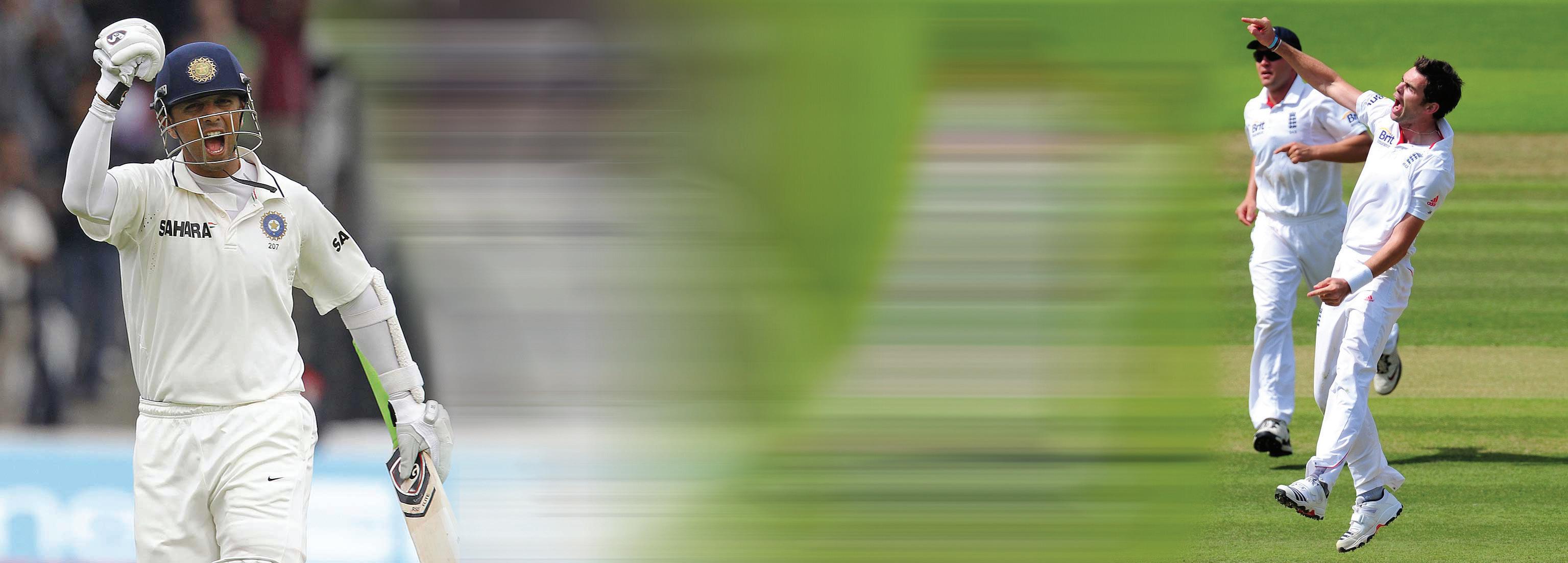
for the first time this series. After their first four innings, India failed to reach 300 even once. Only Rahul Dravid salvaged some pride with a typically gritty 103 not out in a total of 286.
India were set 458 to win following an explosive Matt Prior century; his unbeaten partnership with Stuart Broad (74 not out) helped England recover after an Ishant spell of 3-1 in 3 overs offered India a brief glimmer of hope. With an injured Gambhir and a sick Sachin Tendulkar, India never threatened. Raina was mature in his 78, and VVS Laxman, as usual, serene, but India succumbed by 196 runs. India’s troubles were far from over.
Dravid’s 6 hours of toil and graft in a sublime 117 was undone by a truly memorable spell of swing bowling by Stuart Broad, whose 24.1-8-46-6 will definitely go down as one of the best in England v India contests

In the second Test at Trent Bridge, India went in with only one specialist opener, replacing the injured Gambhir and Zaheer with the inconsistent and seemingly perpetual fringe-Test players in Yuvraj Singh and Sreesanth respectively. Dhoni once again won the toss, and that was almost the only thing that went right for India.
It might not have been the case had India not played two horrendous post-tea sessions of cricket on the first two days; Reducing England to 124/8 at tea on the first day, England resurrected their innings thanks once again to some lacklustre bowling and the increasingly spectacular heroics of Stuard Broad (64) and a 28 run cameo by Graeme Swann, who helped England reach respectability with 221 on the board.
It was still hugely sub-par; although India lost Mukund first ball, Laxman and Dravid yet again combined for a crucial partnership, and with Yuvraj Singh (62) and Dravid in at 4/267 just after tea on the second day, India were looking at gaining a 200-run lead.
Instead, Dravid’s 6 hours of toil and graft in a sublime 117 was undone by a truly memorable spell of swing bowling by Stuart Broad, whose 24.1-8-46-6 will definitely go down as one of the best in England v India contests, not least because it included the first ever Test hat-trick against India (albeit featuring an absurd decision against Harbhajan Singh). India lost their last 5 wickets for 21 runs in their 288.
Even with a handy 67 run lead, India were unable to capitalise. With England at 2-57, India once again provided a false horizon. Between batsmen 3-6 alone, England amassed 374 runs, including a superb 159 to the stylish Ian Bell. Even with an injured Trott, England were ruthless - 90 to Tim Bresnan and another 44 runs to the unstoppable Broad sealed India’s fate as the bowlers leaked runs at an embarrassing 4.52 runs an over.
India’s second innings, meanwhile, was a miserable combination of poor judgment, negative mindset and an underlying sense of despair. That England’s replacement for Tremlett in Bresnan took 5/48 as India rolled over for 158 was clear evidence that England have the best bowling stocks in the world. Add to that the fact that their number 10 batsman in Graeme Swann averages 27 with the bat, and England’s is easily the deepest batting line up since South Africa had the luxury of Shaun Pollock at 9. Meanwhile, India’s tail seems to start with Dhoni at 7, who looks more and more out of place with his tentative unorthodoxy and confused shot selection.
India can make amends for their poor show thus far by doing their homework in the 10-day break before the 3rd Test
A scathing recount though it may be, India are not world beaters for nothing, and they are led by the perfect man for a crisis in Dhoni. India can make amends for their poor show thus far by doing their homework in the 10-day break before the 3rd Test. It will be their biggest challenge, having never lost two Tests back-to-back under Dhoni. It will require the addition of three important, not-negotiable factors: an in-form Sehwag, a fit Zaheer, and above all, an unshakeable killer instinct. England are starting to show that kind of an aura, but India is, for now, the world’s number one Test team on the charts; perhaps it is time they started showing it out on the field too.
AUGUST (1) 2011 <> 75 NATIONAL EDITION
www.indianlink.com.au SPORT
The first two tests against England may have turned out to be a disappointment for India, but one should not forget that the No. 1 team has shown the mettle to bounce back from similar situations in the past
Stuart Broad has been the standout performer for England in this series






76 <> AUGUST (1) 2011 INDIAN LINK

AUGUST (1) 2011 <> 77 NATIONAL EDITION
Finally, freedom!
BY RANI JHALA
Two years had passed since the birth of our children. Born on the same day, they had shared much and were connected in a way that few siblings would be. Their life was united and echoed each other’s; their moments were unified and reflected their twin’s. They were conjoined sisters, connect at their side and stomach.
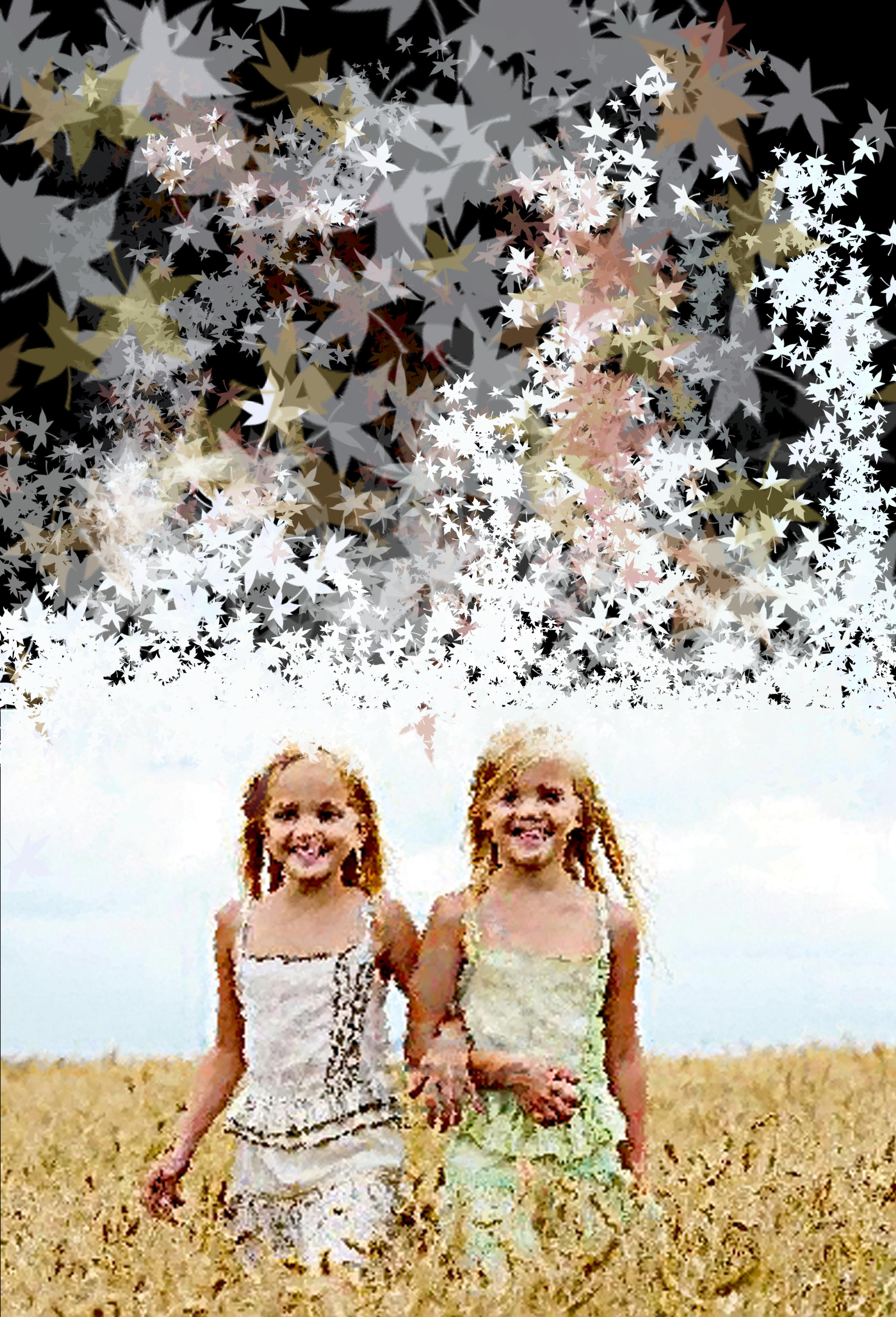
They shared a common history, a common past, but bound together day and night, they often wrestled to be free. Sometimes while one rested, the other wanted to play or when the first cried in
the procedure. The pain that it would cause, the loss of blood that would result and the immense risks as each tried to stand on their own feet, breaking away from the support they had always received from each other.
We were lucky that apart from a few organs, each had the capacity to be separated, yet retain a complete set of organs. Though still early in its development, the doctors felt the surgery was worth attempting for as our children grew, their conflicting needs and wants would make an undivided lifestyle unbearable for both.
Astrologers were consulted and while both were twins, those few seconds between their birth times drew different horoscopes. The auspicious days conflicted and we were left in a quarry. The good time for one, would mean the bad time for another! Our specialist came to the rescue. Midnight! The moment that belong to both days, yet where neither could claim the hour.
The preparation was abound with mixed feelings. It was the best for their future, but as parents could we bear the division or watch the agony they would have to endure? And while the doctors assured us that essentially each could survive without the other, yet they spoke of doing that which had never been done before. History was being made in separating siblings born of the same mother.
hunger, the second wished to enjoy her slumber. The language we spoke to them was the same, but each comprehended it differently. Often they were drawn to different friends, yet due to their physical limitations, one always had to follow her twin’s playmates instead of her own.
Even at that young age when we could lift them together, we had found it hard to show affection for one without the other feeling left out. Who could we hug first, who should we cuddle next? Finally as they grew older, we realised that as much as they were a part of each other, the road before them would be unmanageable unless they were separated. The doctor, who would be credited for shaping their future, took the decision for us.
Our heartache was unimaginable when the medical team spoke of the dangers of
And so at the stroke of the midnight, “while the world slept” two souls were carved out of the one entity.
The operation itself was a success. The surgeons had managed to keep separate most of their organs to make them into
two complete individuals. Their skin was the only organ that was difficult to divide, for it was fused. After the division new skin was grafted onto the bare spots, taken from other parts of their little bodies. These would leave scars, but in time we were told, new skin would grow and the scarring would fade. It would never disappear but it would become almost invisible. While we would have wanted them to have as close to a perfect body as possible, a few scars was a small price to pay for what they were being offered. Freedom!
What followed next made us realise that we were naïve to fear the operation; it was the post-operative period that presented the greatest risks – loss of blood, rejection, pain and heartache. We fluctuated between elation one day at seeing them move, to tearful sobbing the next day at the sight of our helpless children crying in pain.

We kept telling ourselves that the pain was worth what their new life was going to offer them. That is was essential for their future progress. We often questioned if we had done the right thing when we saw each reach for their sibling and fret at not finding their other half. But to heal properly they had to be kept separated. The railings of their cots ensured that even in their sleep they could not go near the other.
My husband and I became spectators to a strange game. Our children were being born again, but this time, the journey was theirs to undertake. I did not have the labour pains, nor was I able to give them sustenance. All the duties that had been ours, the hospital took on as their own. Mistakes were made, for they did not know our children as we
did, but luckily they were not catastrophic. I remember once, them pushing our shy daughter to take the lead while holding back the one that naturally enjoyed being the leader. Once the roles were swapped, our shy baby followed her courageous twin and also began to walk.
I remember those first steps as if it was yesterday. Each rose on their feet, yet reached out for the other, forgetting that they were now separated and needed to find their own strength. I remember the first smile as they realised that for the first time in their lives, one could cuddle her father while the other could hug her mum. I remember the joy as they played with their separate toys and as they frolicked with their own set of friends.
And I have memorised the moment when
I realised that for all the pain and heartache, the moment of separation was worth it. My daughters were two individual beings now, growing up beautifully, and making choices that suited their individual needs. They have different friends, have different interests and sometimes even compete with each other when once they had fought as one.
Tomorrow they will marry and set up their own homes. They will follow different paths in their quest to establish their individuality. They may fight and they will surely argue, but deep within they will always know that they share the same blood. And symbolically they still remain joined at the side.
While the separation was filled with danger, I know now of the merits it has brought. I see two beautiful children growing in confidence and living separate lives and enjoying their independence.
78 <> AUGUST (1) 2011 INDIAN LINK
www.indianlink.com.au FICTION
Learning to live life on their own instead of the security of unity would prove to be a challenge for these children, but it also promises to bring them the joy of independence
I remember the first smile as they realised that for the first time in their lives, one could cuddle her father while the other could hug her mum
Finally as they grew older, we realised that as much as they were a part of each other, the road before them would be unmanageable unless they were separated


AUGUST (1) 2011 <> 79 NATIONAL EDITION
Looks fishy to me…
It is widely considered as brain food and one of the healthier of food choices, and can also lend itself to a variety of tastes and preparations
BY RAJNI ANAND LUTHRA
Three times a week. That’s how often you must have fish in your diet, say experts. Well, if you like variety, here’s a sample of how you can have it seven times a week. And since we are celebrating India this fortnight, how about seven different Indian ways of cooking fish? Read on!
500 gms white-fleshed fish fillets such as snapper, barramundi or ocean perch
3 tbsp vegetable oil
1 tsp brown or black mustard seeds
½ tsp fenugreek seeds
3 dried red chilli peppers
500 gms (about 3 medium) brown onions, halved and thinly sliced
2 tbsp fresh grated ginger
2 tbsp crushed garlic
36 fresh curry leaves
3 tsp ground turmeric
2-4 tbsp chilli powder
2 tomatoes, unpeeled, coarsely chopped
1 ½ cups coconut cream
1 tsp tamarind concentrate
Salt to taste
Juice of half a lemon
Remove skin from fish fillets then cut into 2 cm x 5 cm pieces. Set aside. In a karhai or wok, heat oil over low heat. Add mustard seeds and cook until seeds crackle, about 30 seconds. Add fenugreek seeds and chilli peppers and cook, stirring, until seeds turn golden brown and chilli peppers are deep golden brown, about 30 seconds. Add onions and cook, stirring, until slightly softened, about 1 minute. Add ginger and garlic and cook, stirring for 30 seconds. Add tomatoes and cook until tomatoes are slightly soft, about 3 minutes. Stir in coconut cream and tamarind, and season with salt.
Stir in fish pieces and simmer, covered, until fish is just cooked through, about 5 minutes. Stir in lemon juice. Serve immediately with rice.
Reproduced with permission from Indian Home Cooking by Jan Purser and Ajoy Joshi (2003). Ajoy is founder of Nilgiri’s Restaurant, 81 Christie St, St. Leonards, NSW (Ph 02 9966 0636)



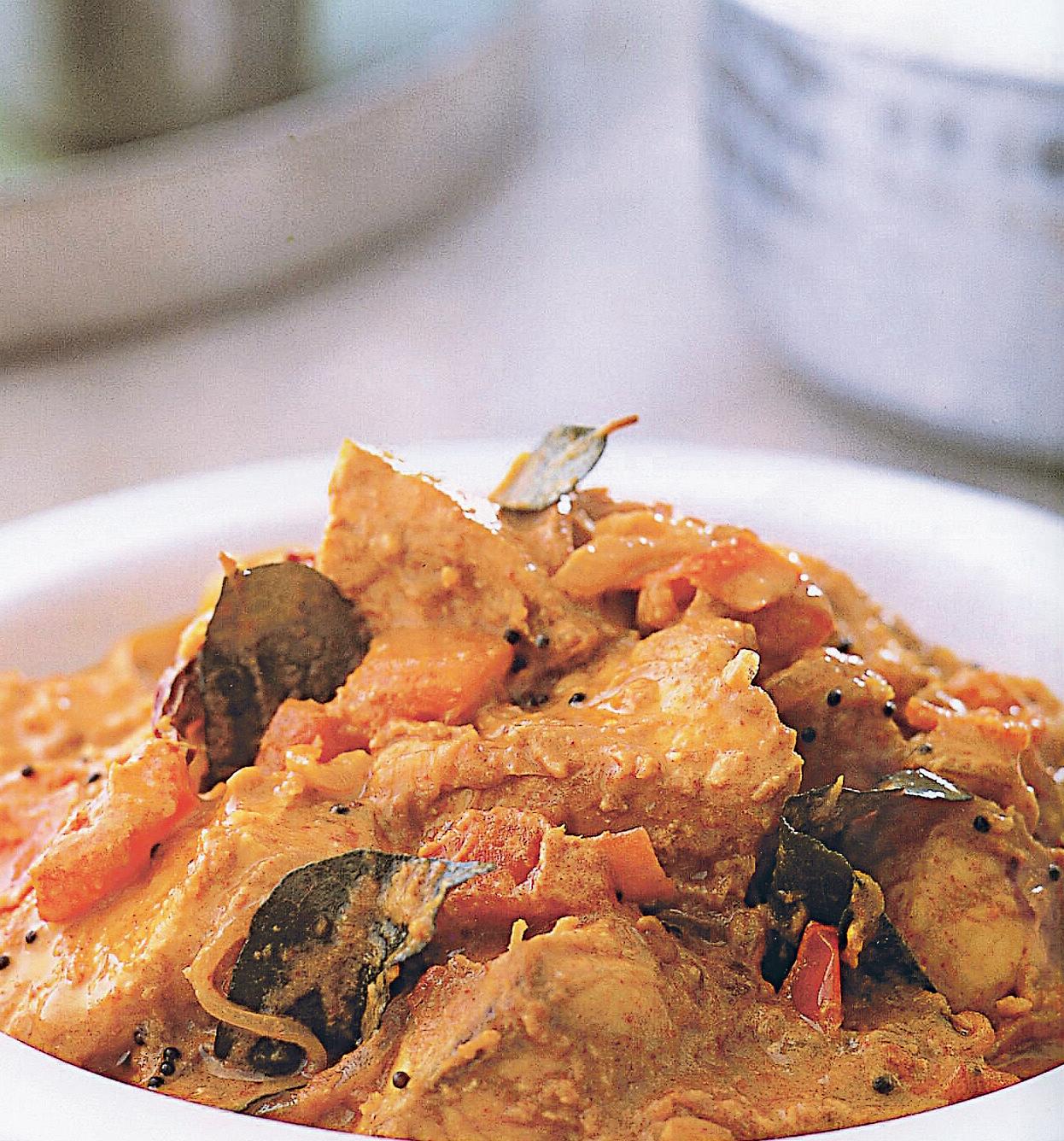
80 <> AUGUST (1) 2011 INDIAN LINK
FOOD
Ajoy Joshi’s Fish in Coconut Sauce (Meen kozhambu)
Anil Ashokan’s Tuna with Fenugreek and Dill (Methi Suva Machchi)
600 gms yellowfin tuna fillets

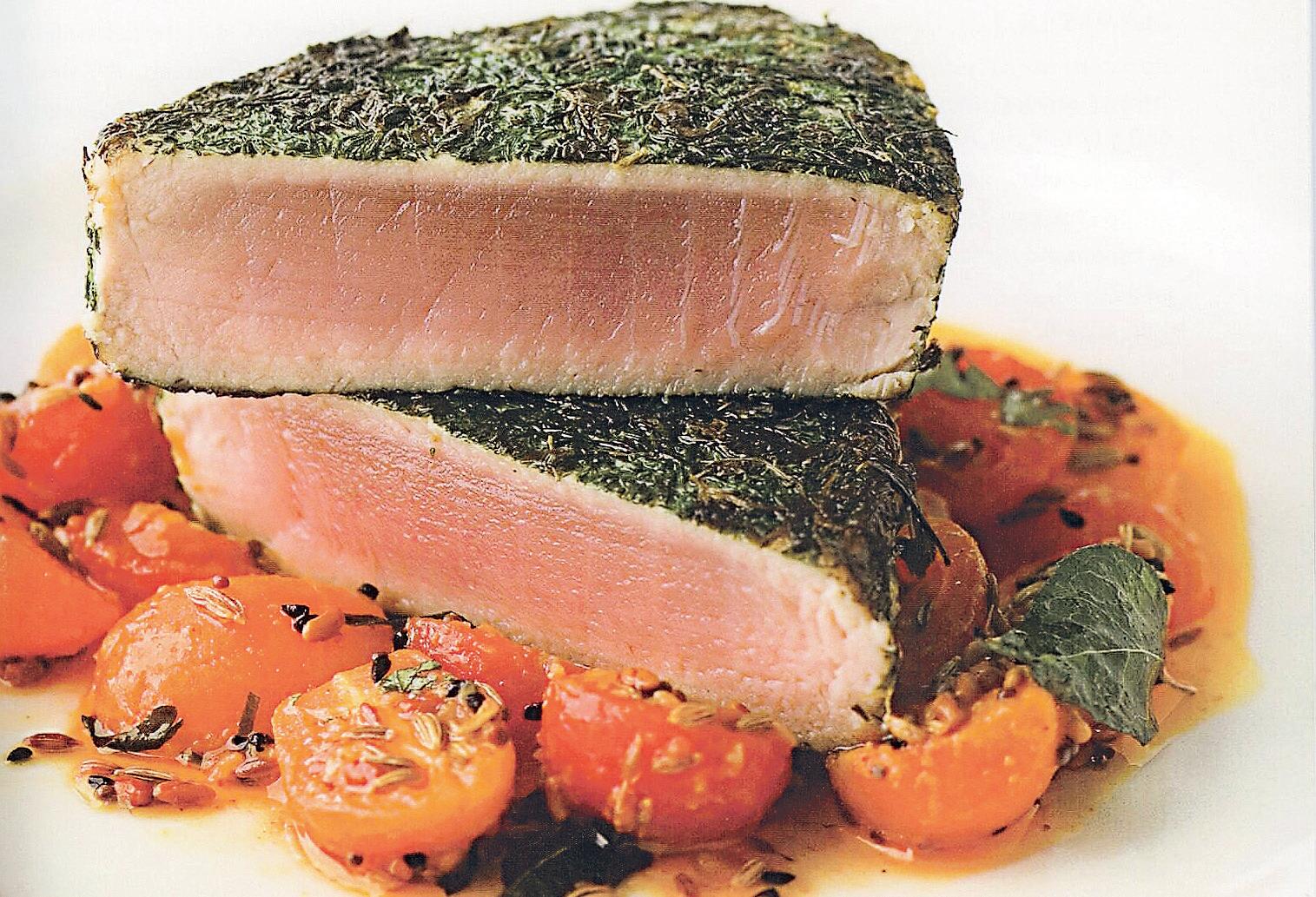
½ bunch fresh fenugreek
¼ bunch fresh dill
¼ bunch fresh spearmint
¼ bunch fresh coriander
2 green chillies
½ tsp fennel seeds
Salt
Oil to pan-fry
Juice of 1 lemon
Trim tuna fillets and cut into thick steaks. Pick and chop all the herb leaves individually. Slit green chillies, remove all the seeds and chop finely. Dry-roast fennel seeds very lightly on gentle heat, then crush with mortar and pestle. In a bowl, mix the chopped herbs, chillies, fennel seeds and some salt. Season the tuna with salt. Heat oil and quickly seal tuna in a very hot pan. Sprinkle with some lemon juice, then roll in the chopped herb mix. Press between the palms of your hands to get all the greens to adhere to the tuna. Place on an oiled baking tray. Cook in a preheated 180 degree oven to the desired degree of doneness, roughly 3 minutes.
(If fresh fenugreek is not available, use dried fenugreek but reduce the quantity because the taste varies drastically. The seeds from the chillies are completely removed from this recipe as the desired result is not too spicy, but you can adjust the chilli to suit your palate).
Reproduced with permission from Qmin: A Fresh New Approach to Indian Cuisine by Anil Ashokan (2008). Anil is founder of Mace Restaurant (formerly Qmin), 207 Pacific Highway, St Leonards NSW (Ph 02 9966 5557)

Curried Leather Jacket
1 leather jacket, medium sized
1 tsp salt
1 tsp turmeric
1 tsp crushed garlic
1 tsp grated ginger
Green chilli to taste, seeded and finely chopped
1 tbsp olive oil
2 sprigs curry leaf
1 tsp mustard seeds
½ cup fresh coriander leaves
Juice of half a lemon.
coriander powder, if you wish. However, it is nice to let the flavour of the curry leaves dominate in this simple preparation. Serve hot with rice.
Bengali Fish Curry
4 small to medium barramundi fillets
2 tbsp mustard seeds
Green chillies to taste
½ tsp five-spice mix (panch phoran)
½ tsp turmeric
Salt to taste
2 tbsp oil
Marinate in salt and lemon juice for about half an hour.
Make a batter of the besan and all other ingredients. Drain fish on a tea-towel or kitchen paper to remove excess moisture, then put into batter. Keep marinated for about an hour. Then deep fry to golden, and serve hot with lemon wedges and onion slices.
seeds and sugar. Add just enough water to blend well. Then taste for salt, and add lemon juice.
Wash fish, cut off fins and trim tail. Use a sharp knife to make cuts on either side. Rub salt and turmeric powder on both sides and set aside for five minutes. Then rub ginger and garlic on both sides and set aside for a further ten minutes.
Heat oil in a heavy-bottomed flat pan. Put in mustard seeds, curry leaves and green chillies. When the seeds begin to splutter, introduce the fish gently. Allow to sizzle for a couple of minutes, then put in half a cup of water (or more, depending on size of the fish). After about five minutes, turn fish over gently. Make sure there is just enough water to prevent the fish sticking to the base. Throw in the fresh coriander, add lemon juice and cover. The fish should be done in a few minutes.
You could add other spices such as
Gently rub salt and ¼ tsp of the turmeric to the fish and set aside for 5-7 minutes. Heat oil in a non-stick pan and fry the fish carefully till golden on both sides. Remove onto kitchen paper and keep aside. Blend together the mustard seeds and green chillies adding enough water to get a paste. Mustard seeds are hard to grind so this may take a while. Add the panch phoran to hot oil and then pour on to mustard paste. Cook for 4-5 minutes and then introduce the fish. Adjust the water if needed, also the salt. Cook till fish is done, about 10 minutes till done.
Garnish with fresh coriander to serve.
Amritsari fish
1 kg white fish fillets (such as snapper, mahi mahi, perch, bream, gemfish or flounder)
Juice of 4 lemons
Salt to taste
¾ cup besan (gram flour)
2 tbsp ginger-garlic paste
2 tsp ajwain
Red chillies to taste
½ tsp pepper
1 ½ tsp chaat masala
Oil for deep frying
Lemon wedges and onion slices to garnish
Cut the fish into 5cm x 3 cm pieces.
A healthier version would be the fish tikka, which is pan-fried rather than deep-fried. You would use the same ingredients as above to marinate the fish, but also add in some yogurt (or a combination of cream and yogurt) to bring in the softness. Flavour is often introduced to the fish tikka by also adding mint and coriander chutney to the marinade.

Fish in Banana Leaves
(Patra Ni Machchi)
4 banana leaves, wiped dry
1 kg white fish fillets
1 tbsp oil
Salt to taste
½ tsp turmeric powder
Red chilli powder to taste
1 ¼ cups fresh grated coconut
Green chillies to taste
3 garlic pods
1 tbsp cumin seeds
1 tbsp sugar
2 ¼ cups coriander leaves, chopped
2 tbsp mint leaves chopped
Juice of 1 lemon
2 tbsp vinegar
Cut banana leaves off the centre vein, into sheets large enough to individually wrap each piece of fish. Grease each leaf with a little oil.
Gently rub fish with salt, turmeric and red chilli powder, and set aside for about 5 minutes.
Grind together coconut, coriander leaves, mint leaves, green chillies, garlic, cumin
Coat each piece of fish with this herb mix, and place on a banana leaf. Roll up the leaf from the sides, tuck in edges and secure with a toothpick or tie up with a piece of string. Cook in a steamer over boiling water for about 10-12 minutes. To check if done, use a fork to see if fish flakes easily.
Goan Style Fish Curry
Nisteachi Coddi
1 kg white fish fillets
Dry red chillies to taste
¾ cup coconut
1 tsp cumin seeds
1 tbsp coriander seeds
¼ cup oil
1 large onion, chopped fine ½ tsp turmeric powder
1 sprig curry leaves
3 medium tomatoes, chopped
1 tbsp tamarind paste
Green chillies to taste
Salt to taste
Grind red chillies, coconut, cumin and coriander seeds to a paste, adding a little water from time to time. Heat oil in a heavy-bottomed pan and add onions. Cook till lightly browned. Introduce the coconut paste, salt and turmeric powder. Cook, stirring, till oil begins to separate. Throw in the curry leaves now, and the tomatoes and a little water. Cook till tomatoes are done and blended with the rest of the ingredients into a sauce. Then add green chillies and tamarind paste and mix well. Taste for salt, and add some water. Bring to a boil, turn heat down and introduce the fish. Cook, stirring gently, till fish is done.
AUGUST (1) 2011 <> 81 NATIONAL EDITION
www.indianlink.com.au
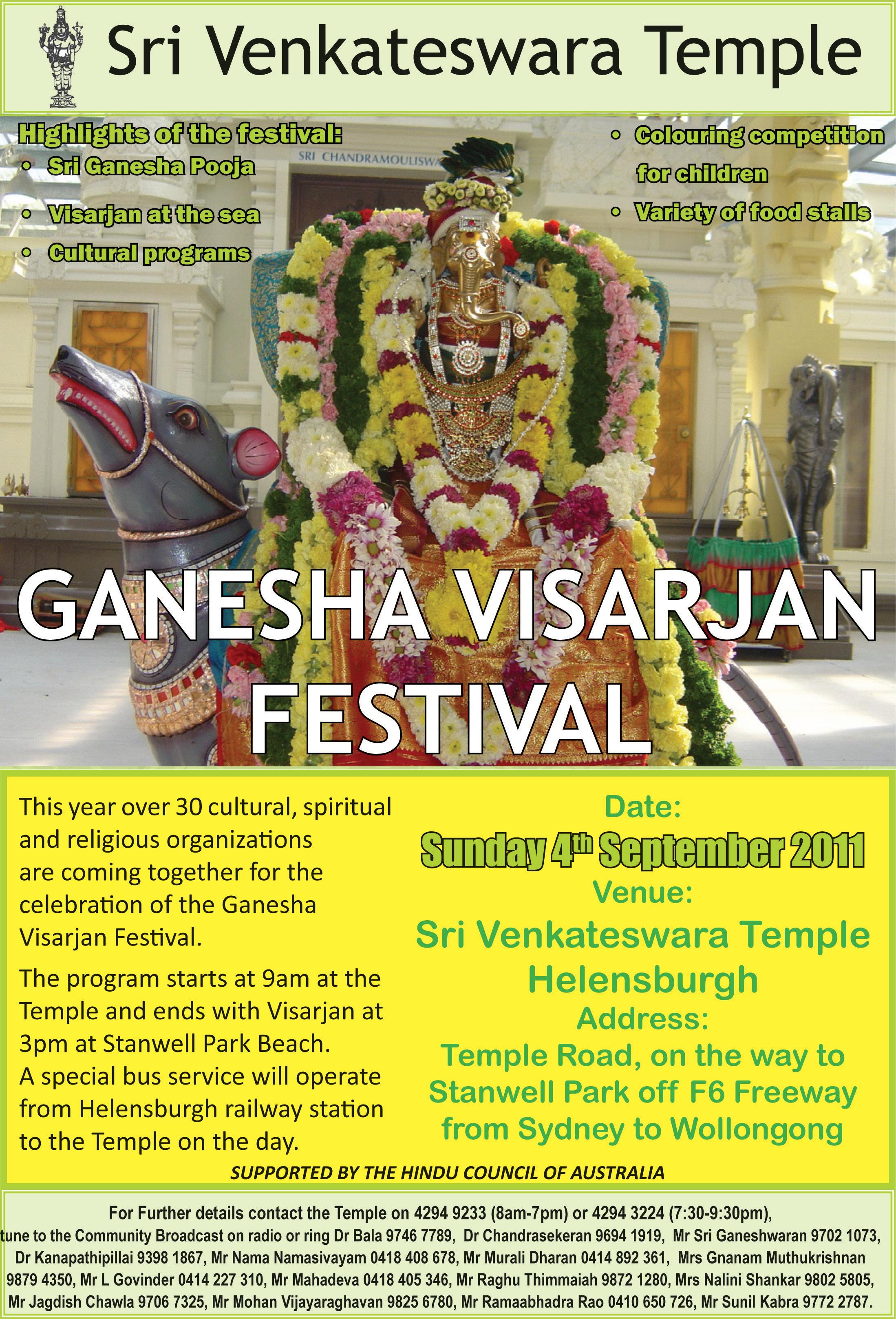
82 <> AUGUST (1) 2011 INDIAN LINK




AUGUST (1) 2011 <> 83 NATIONAL EDITION
TO BE THE VERY FIRST PIONEER
INDIA Experienced, Successful Network Marketer is looking for business partner to launch Indian Market as a Ground Floor Opportunity. This World-class Fast Growing International Company achieved $5 BILLION sales in 6 years and debt free. This company has just opened In Malaysia and Thailand. Only one product, health beverage, no stocking required. WE ARE LOOKING FOR 3 PEOPLE TO WORK WITH PERSONALLY.
be Ambitious, Hard working, Honest & Teachable. We are only looking for people who are genuinely and seriously seeking opportunity and desire to change life.
Sample will be provided, Modern Office in City To arrange a meeting, contact: Zan 0414 767 419 (English)
Established 22 years Multi million dollars service industry Commercial cleaning in Sydney area including Small/Big Offices, Schools, Medical centres, Stores…….. Starting price $15,600
years Contract guarantee Free equipment (Vacuum cleaners, Mob, Buckets……) Free Training (theory and Practical) Contact Sushil Gupta 02 9567 6388 Conditions apply
INCOME OPPORTUNITY
IN
Must
Free
Commercial Cleaning Business’s
2.5
Matrimonials
SEEKING BRIDES
Srilankan Hindu born vegetarian parents are seeking alliance for their son aged 36 years, 5,6” well educated, vegetarian, working for public service in Sydney, looking for a well educated girl aged 29-33years 5.3” from a born vegetarian Hindu family with traditional values. Interested send horoscope, photo to akrishna135@gmail.com

Suitable match wanted for my 29 YO son, fair, 176 cm, B.Com, B.Law. Employed in APS, close to Sydney, Decent Punjabi khatri family preferred Aus citizen, Non-Manglik girl from Hindu background. Call 0412772974.
Gujarati Jain Boy, 28, 5.8, MBA (UK), Applied for Australia PR Visa, Currently at Mumbai, with Swiss MNC as EHS Auditor SEEKING well-educated, smart girl with family values (Caste no bar). Please share biodata+recent photo on brijm9@gmail.com call: +61420253337
Caring, youthful looking, slim, fit Hindu widower (caste no bar), 52, Australian citizen, in professional government job, children living separately, seeks presentable lady (38-47), vegetarian with strong family values. Call 0416 099 177, genuine enquiries please.
Alliance invited for North Indian, Gaur Brahmin boy 32/6ft MBA, having software export business in Chandigarh. Looking for a decent, beautiful, welleducated Indian girl with family values. Please contact Amit on 0401297679 or email amitbatish@yahoo.com.
Single, tall employed man often in Sydney & Melbourne, wishes to meet good character attractive single or widow lady over 40 or from abroad in view of marriage.
Apply Mr. S.K. GPO Box 2336, Adelaide, South Australia, 5001
SEEKING GROOMS
Seeking a suitable match, not necessarily a medical doctor, for a qualified medical doctor Punjabi Manglik girl, 31, 155 cms, slim, fair and good looking, MBBS and DGO, Father and younger brother have their own medical practice at Ludhiana, Punjab, India.
Contact: madangautam1985@yahoo.co.in, or mohinderz@yahoo.com.au, 001191 161 2223532, 0438 203 291


Looking for Hindu khatri PR/TR boy 25-30 yrs in Sydney for homely khatri girl 23 yrs/5-4” studying in Sydney and living with her siblings. Caste no bar.
Please contact 0432168148, 0469601625 or reetutyagi12@yahoo.co.in
Punjabi Brahmin parents seeking suitable professional match for beautiful, never married, 35yrs/ 165 cm, doctor, with moderate values. Brought up in South India. Caste no bar. Email cham1948@gmail.com
Seeking a suitable match for young looking, very fair Hindu lady, 53, 5’2, living in Australia for 25 years, works in govt dept. Groom must be between 47-55, well qualified, non-smoker, occasional drinker and vegetarian. Contact sydaus@hotmail. com.au.
84 <> AUGUST (1) 2011 INDIAN LINK
ARIES March 21 - April 19
Tarot
Tarot predictions for February 2010 Tarot ‘n’ You Tarot ‘n’ You By



Tarot predictions for August 2011


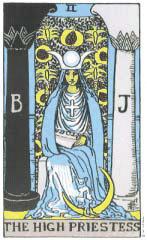



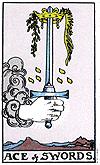



The month of August will be a time of love and passion with the cards indicating a fabulous time for communication and progress with an old flame or indeed a new lover. In your career you will find that things are stressful, and a colleague may put up obstacles in your path. Take care of your health this month and make sure you are eating healthy foods.
TAURUS April 20 - May 20
This month, your love life may go through some testing times. By the end of August you will both be feeling a lot better and love will be back in the air. If looking for love, you will see some good results with a person you have your eye on. Your career will be a little stressful, and take care when signing contracts or speaking to new contacts. You will have money around you, so treat yourself.
GEMINI May 21 - June 20
This August, you will feel like staying out of relationship issues and will take time out. You want to decide exactly what you want from life, so taking a break from it all is advised. Your career will be going well this month and there are indications here of changes and challenges. You are advised to think before you speak, especially around friends and colleagues.
CANCER June 21 - July 22
You will be feeling in a very sexy mood, and love and communication will be well favoured. There may be some turbulent exchanges with your lover, so take care with how you deal with them. Career-wise, you are urged to make choices and move on to better opportunities that are around. A wonderful time as you may find you have extra cash around, and will think of settling some outstanding payments.
LEO July 23 - August 22
You will have a wonderful time this month with everything falling into place in your love life. You will be hard to resist so if you have your eye on someone, this is the month to make your moves. You will be thinking of taking a break as work has been very stressful lately, and you will want to take a holiday. Your finances will be in abundance this month.
VIRGO August 23 - September 22

You will take time out for yourself. You may not want to spend too much time with your lover, as you need to clear your head. Obstacles and upsets have recently left you feeling upset and disillusioned. You will be feeling very creative and you will want to spend time meditating. Spirituality will be high on your agenda. Career will be less interesting right now, but changes are on the way.
NANCY JADE ALTHEA
LIBRA September 23 - October 22
Great times for you and your partner. You have a lot of energy, and will have to watch what you say around loved ones. There is a definite indication here with the cards that you can do anything right now. You will feel unsettled at work and if looking for alternatives, there will be problems finding the right kind of job. There are some unexpected expenditures, and take care while driving too.

SCORPIO October 23 - November 21
This month you will be feeling happy and at peace. You will be surrounded by feelings of sensuality, love and passion, and you will have a magnetism which will attract some great people to you. You may find you are stressed out with work due to meetings and trips. There is also an indication that you may have to study for work or for a promotion. Take care of your back.
SAGITTARIUS November 22 - December 21
There is an indication that an old flame may return to cause you stress and confusion this month. Your love life will need attention, as you will feel confused and restless. There is also a tendency to overcompromise, which will leave you feeling unhappy and dissatisfied. The cards indicate that work will be busy, and you will have opportunities around you. A great time for gains and prosperity.
CAPRICORN December 22 - January 19
Your relationships will be strained as you feel your partner may be a little over-jealous and possessive of you. Sit down and talk about plans for the future, to avoid any kind of permanent separation. You have been under tremendous pressure financially this year, and things seem to finally be coming together. Take a holiday and get rid of all the tension you have been feeling. More raw foods are recommended.
AQUARIUS January 20 - February 18
You will feel free and able to express your feelings and emotions. You will put your partner first and will plan some surprises for them. You are keen to make changes in your love life and will be very excited and happy with the way things are going. Career needs to be handled carefully, as work colleagues may be jealous of your success. Get enough sleep, you are lacking in energy.

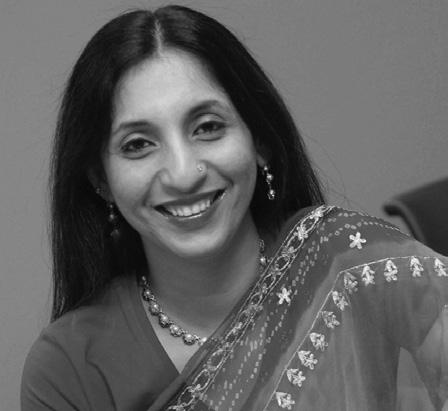
PISCES February 19 - March 20
This month is all about thinking about your needs and taking time out to pamper yourself. You have some important decisions to make about which direction you want to go. There is confusion relating to work and where you want to be. A communication is on its way, which will have good news. You will look at ways to bring in extra cash, and will need to not be too hasty. Travel is also indicated.
AUGUST (1) 2011 <> 85 NATIONAL EDITION
STARSFORETELL
www.indianlink.com.au


86 <> AUGUST (1) 2011 INDIAN LINK

(1) 2011



88 <> AUGUST (1) 2011 INDIAN LINK


AUGUST (1) 2011 <> 89 NATIONAL EDITION
BUZZThe
Bipasha boardwalks for Beti

The gorgeous Bengali babe Bipasha created quite a stir as she sashayed along the ramp with none other than her mother, at the India International Jewellery Week (IIJW). The glam duo was one of around 40 celebrities walking the ramp in aid of Beti, a campaign against female foeticide supported by the United Nations Population Fund (UNFPA). Dressed in a peach, net, embellished sari, Bipasha flaunted a diamond necklace and earrings. Her mother Mamata also wore the similar diamond necklace and earrings in traditional paisley pattern. The actress broke into a jig at the end of her round. “This is the first time that I walked the ramp with my mother. It was a great experience and I loved it,” said the ebullient Bipasha. So did we, Bips, so did we!

AB flaunts KBC
You can rely on the Big B to get his paisa vasool, even if he’s rolling in the stuff. Saif Ali Khan and Deepika Padukone will appear as special guests on the fifth season of the game show Kaun Banega Crorepati, which starts off August 15, and once again, Amitabh will host the show. The Big B blogged that invites had been sent to Saif and Deepika “.. who come to promote their film and mine as well - Aarakshan!” Whatever happened to the game, for the game’s sake?
“In many ways, the philosophy of the film and that of KBC is quite similar. Given opportunity, even the lesser privileged shall prosper. Or at least have the capacity to prosper,” he wrote. Certainly, everyone seems to be prospering on KBC!
Star kid Mimoh stressed
Son of yesteryears actors Mithun Chakraborty and Yogita Bali, newbie Mahakshay alias Mimoh, isn’t all that thrilled about being a star son. “Everything is a curse of being the son of such a big actor. It’s a big burden,” stated Mimoh with surprising vehemence recently.
“I am a newcomer and he (dad Mithun) has been here in the industry for 30 years and he says that he is still learning. I am just two films old. How much would I know,” asked Mimoh, who made his nonstarter acting debut with Jimmy in 2008.
“But people still compare me with him,” lamented Mimoh, who starred in the Vikram Bhatt directed Haunted 3D this year.
Being constantly compared to his National Award winning father is not easy, but now Mimoh has learnt to take it in his stride.
“Now I am used to it. I am proud to be his son. It involves huge responsibility, which is helping me in being more responsible,” said the 26-year-old. And he’s taking a couple of pages out of his dad’s book too, by picking up a few of Mithun’s trendy disco dance era steps. And fortunately, he isn’t stopping there, but getting ready with some of Hrithik Roshan and Shahid Kapoor’s too. Now Mimoh, do remember that these are star sons too, and you don’t hear them cribbing. So snap out of it and make a name for yourself too….just like your dad did, before you!
Smug Salman for dancing king!
Salman Khan can’t stop himself. He’s on a high after being confirmed as the box office champ among the Khans in Bollywood, and now he’s looking at making his life more challenging. Sallu’s now working on proving himself as the best dancer among all the Khans.
That’s what he said to his current favourite choreographer Mudassar Khan, when they started shooting the track Desi beat for his upcoming film Bodyguard Sources say that Salman was taken out of his comfort zone, but he still followed the choreographer’s minutest instructions, another first for Sallu. He shot the song like crazy, and even got a song director on board to shoot the number. Now the concept of a song director joining the choreographer for a star is still novel in Bollywood, but Salman’s now looking at patenting this collaborative style of shooting a song. “Salman will work simultaneously with a choreographer of his choice and a dance director in all his major song and dance numbers,” says the source. So in the Bodyguard number, Mudassar choreographed and Sumit Dutt was the song director. Well, there you go, another first! The buzz is that the song rocks! Let’s wait and see, shall we?
ABHILASHA SENGUPTA brings
in Bollywood
Katrina’s now a rockstar!
Super-sexy Katrina Kaif’s ready for the next phase following the superhit Sheila ki jawaani. She’s now set to don the avatar of a 1970s rockstar, itty-bitty shorts and all, in the song Dhunki for Mere Brother Ki Dulhan Katrina, dressed casually in a pair of shorts, a white t-shirt and a bright orange inner, holds a guitar in the song, and looks like a complete rockstar.
The 27-year-old shot for the song at Agra fort, and a crowd of over 1,000 gathered in no time, which certainly made for authentic shots of the audience. But getting Katrina out of their adulating numbers proved to be quite a challenge. A team of policemen was called to escort the actress out, and she was taken away in a police van. Mere Brother Ki Dulhan also features Imran Khan and Ali Zafar. Kat as a rockstar, now that’s a must-see!
Sanjay nervous about TV debut
He may be a lovable goon on the big screen, but Sanjay Dutt is a bit of a woos when it comes to his TV debut. The actor will soon be seen in reality show Bigg Boss 5, and the prospect is making him nervous!
“I’m pretty nervous doing it. I’ve never done it, I don’t know what it will be but I know one thing that it will be very different,” said the 52 year old actor. Sanjay, who is said to be teaming up with Salman Khan for the controversial show, reveals Salman won’t be with him throughout the season. Nevertheless, he promises to try to make it fun.
“Salman will introduce me in the show and will do two episodes with me and then I’ll be on my own. Salman asked me to do it and I thought I should do it. It’s something new for me. It’s a good platform. I’m going to have fun. That is the way I am. I will not make it serious,” he added.
Bigg Boss is a reality show where celebrity contestants stay in a single house for about three months, with no connection to the outside world. They are overseen by a mysterious person known as Bigg Boss, whose only presence in the house is through his voice. One thing’s for sure, the show’s viewings will certainly be high, as the nation gawks at Sanjay on the small screen.
GUESS WHO
This Kashmir-born starlet was most recently seen in the comic caper BhejaFry2
90 <> AUGUST (1) 2011 INDIAN LINK
us up-to-date on what’s hot and happening
ENTERTAINMENT
BIPASHA
?
(Find the answer under Caption Contest)
Singh will be Kinng again
Akshay Kumar is excited about making a sequel to his 2008 hit Singh Is Kinng, but he’s still waiting for the right script. “I am keen to (make the sequel), but not getting the right subject to make it. Once I get it, I would love to make the sequel,” Akshay said recently. The versatile actor has been successful in his production ventures too, having made films like Khatta Meetha and the immensely popular Tees Maar Khan Akshay, who is now producing IndoCanadian venture Breakaway said, “It feels great that I could do something which I had never imagined. It’s a very big thing for me.”

Directed by Canadian Robert Lieberman, Breakaway is the tale of a young Indian ice hockey player who wants to get into the big league. The Indian version of the film has been named Speedy Singhs
Releasing at the end of September, Breakaway stars Vinay Virmani, Rob Lowe, Russell Peters, Camilla Belle, Noureen DeWulf and Anupam Kher. Akshay plays a cameo in the film. After this ventue, let’s hope Akshay finds the right script that will make Singh the Kinng again!
Rafi remembered
Singing legend Lata Mangeshkar remembered late singer
Mohammed Rafi on his 31st death anniversary, and said that there can never be a singer like him again. Both of them sang 414 duets together.
“July 31 is the 31st death anniversary of Rafi sahab. He was an honest and a lovely human being. My family and Rafi sahab shared a great relationship together. It’s my honour that I got an opportunity to sing maximum number of songs with him,” posted Lata on her Twitter page.
“We have worked in almost 315 films and have sung 414 duets together. We can never have such a great singer again,” she added. Some of the songs they sang together are still evergreen, like Bekhudi mein sanam, Haye re haye, Chhup gaye saare nazare, among others.
At a tribute held in New Delhi for the legendary singer, T.S. Jyothiraman, an executive with Lemon mobiles, mesmerised the audience with his impeccable performance. The 58-year-old Jyothiraman who sings as a hobby and is an ardent Rafi fan, even overshadowed established singers like Anand and Roop Kumar at the show organised by the Mohammed Rafi Academy. “He (Mohd Rafi) may not be between us but he is still alive through his musical legacy,” said Anand.
Rafi’s son Shahid Rafi also took the stage and entertained the audience with songs like Pukarta chala hun main, Badan pe sitaare and Bar bar dekho, a performance which had them dancing in their seats.
Rafi lent his voice for almost all the leading actors such as Dilip Kumar, Dev Anand, Rajendra Kumar, Manoj Kumar, Shammi Kapoor and Rajesh Khanna. The singer died of a heart attack in Mumbai on July 31, 1981, at the age of 56. RIP, Mohammed Rafi, your legacy lives on.
Old is gold, for Kangana
Bollywood actress Kangana Ranaut made a pretty picture strutting down the ramp in a red and black long anarkali kurta designed by Masaba Gupta, wearing uncut diamonds set in traditional Rajasthani ornaments by Amrapali at the IIJW show.
The actress, who looked dazzling in the
jewellery pieces that included neckpieces, earrings, maang tikka, bangles, rings and even an armlet, said she was very fond of jewellery but preferred the ones that had some character.
“Amrapali is my favourite brand of fine jewellery and I’m glad that I got this opportunity to showcase their pieces which embodies our rich heritage, our culture and that’s why it has so much character and history in it,” said Kangana.
“I would love to wear this jewellery on my wedding day, whenever that happens. I would love to be dressed like a traditional bride. So the maang tikka I wore at the show would definitely feature on that day. It’s very authentic and has character,” she added.
The 25-year-old actress also revealed that when it came to jewellery, she was very sentimental about a pendant that her grandmother gave her.
“I’m very sentimental about a little pendant my grandmother gifted me because it is very, very old. I’m very touchy about old pieces. Jewellery that has character to it really stands out and that’s what attracts me,” she
Now jewellery may be Kangana’s thing, but item numbers are still not her baby. She may have grooved to beats and shaken a leg on screen, but the actress feels she is still not capable of doing an item number in a film. At a time when most actresses, including Katrina Kaif, and even actors like Ranbir Kapoor and Aamir Khan have gone the item number way, Kangana, who has got many such offers, is still chary of accepting them.

“I was offered an item number in ‘Housefull’ and then its sequel. There have been other offers too, but I don’t think I can do justice to an item number. I think people will not like me doing that, so I’m not keen on doing them,” said the 25-year-old actress. So do you think Kangana should give item numbers a go? We certainly think so!
Bollywood backs Beti
It was a jewellery show for a cause as the India International Jewellery Week (IIJW) kicked off with glamour, glitz and gems to gladden any heart. The opening ceremony of IIJW saw about 40 celebrities from film, television, business, fashion and music walking the ramp in aid of Beti, a campaign against female foeticide supported by the United Nations Population Fund (UNFPA). Soha Ali Khan, Riya Sen, Mahie Gill and TV stars Smita Bansal, Avika Gor, Deepshika and Poonam Soni, sashayed down the ramp sporting a collection of diamond and kundan ornaments, and lending their support to the cause of female foeticide.
To add an edge to the show, Raageshwari Loomba and Kavita Seth were roped in to perfrom. They enthralled the audiences with Sufi numbers Laal meri and Kinna sona tenu rab nay banaya respectively. And that was just the opening ceremony! Its heartening to see Bollywood back a good cause, good on the glam girls!
CAPTION CONTEST
What’s the chitchat between Priyanka Chopra and Shahid Kapoor here?
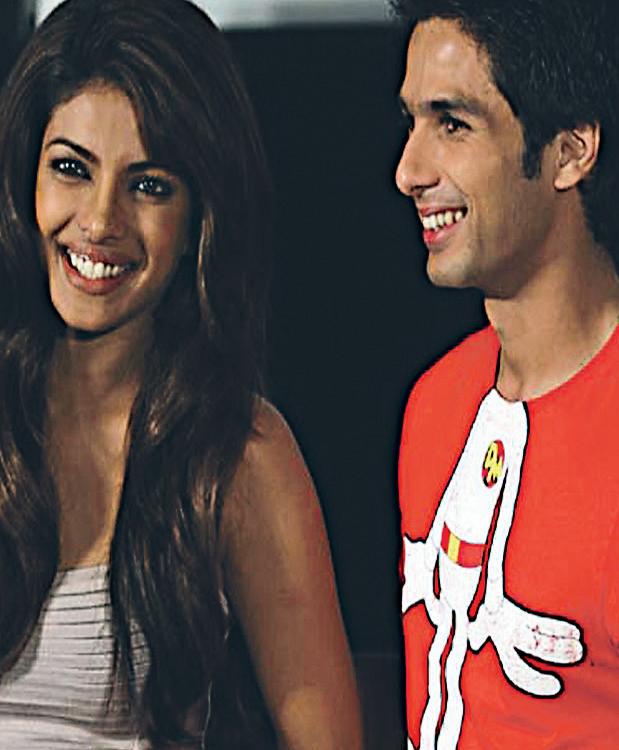
Send in your responses to info@indianlink.com.au and win a surprise prize
Last issue Caption Contest winning entry
What did Salman say to make Lara break into a smile?
Lara: Enjoying the view, are you?
Salman: Who me? I was only admiring your lovely choli!

Giri A Dulwich Hill NSW
Giri wins a CD of new Hindi film Singham
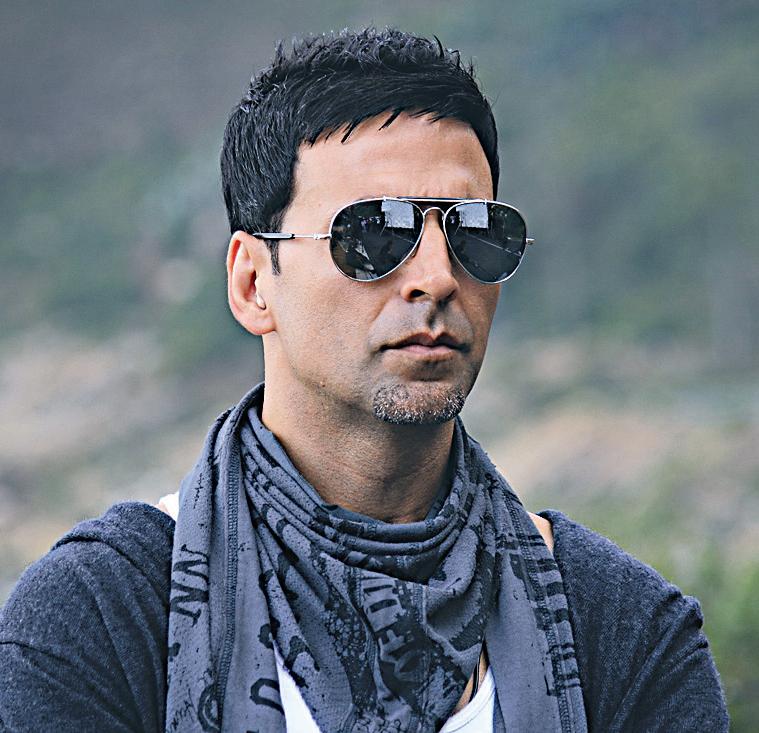
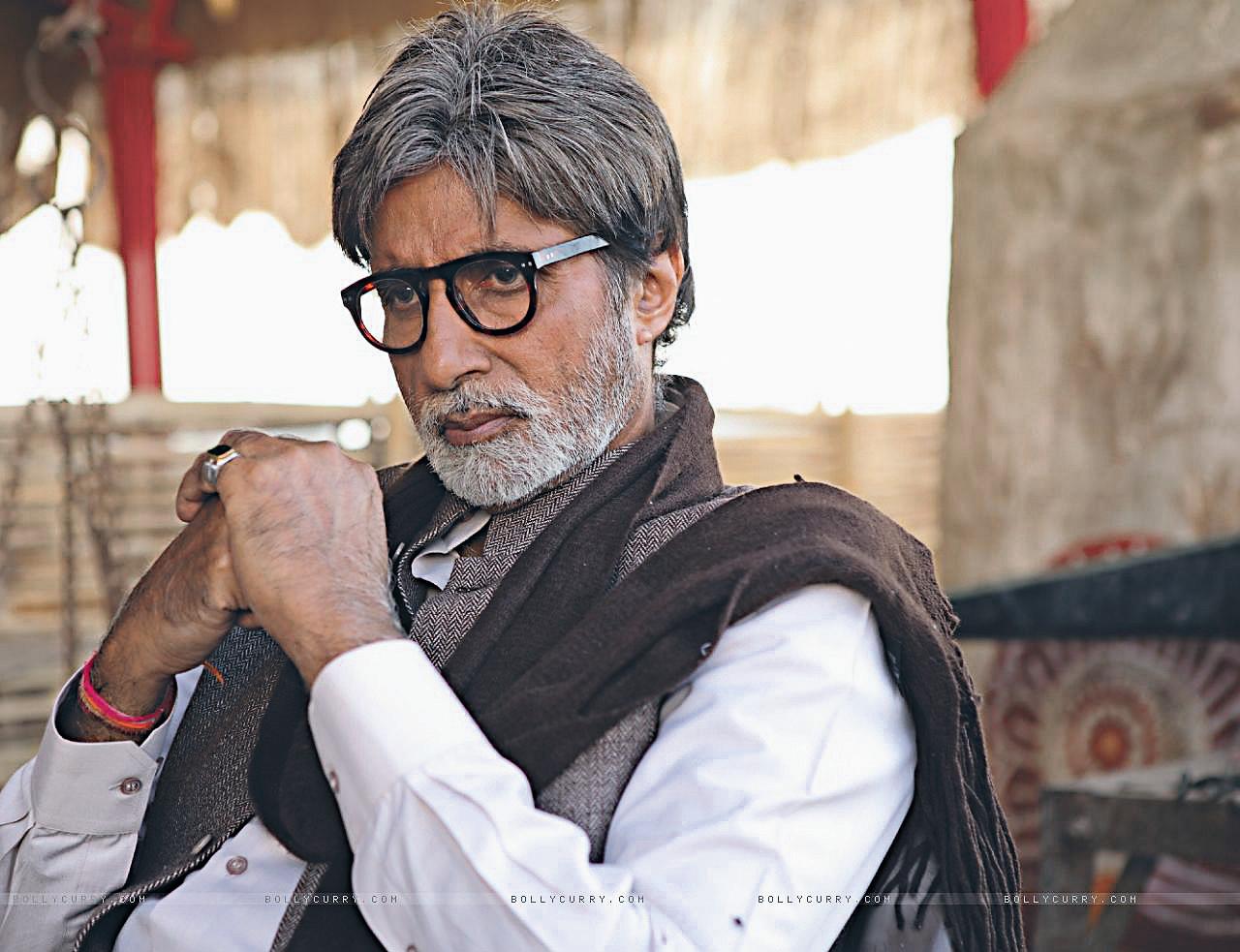
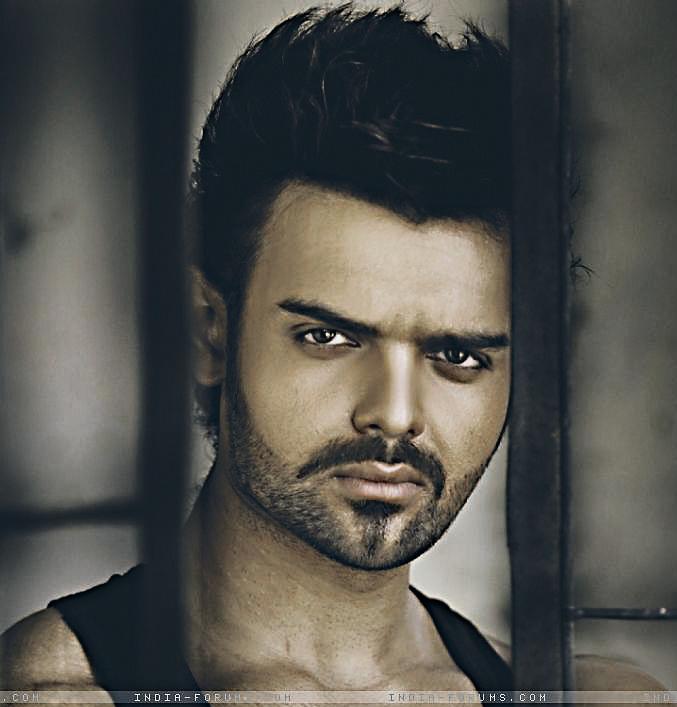
AUGUST (1) 2011 <> 91 NATIONAL EDITION
www.indianlink.com.au
GUESS WHO :ANSWER Minissha
Lamba
MIMOH
AKSHAY
KATRINA
SALMAN
Cine Talk
A good attempt, but not engaging
Film:Khap
Cast:Om Puri, Govind Namdeo,ManojPahwa, Mohnish Behl, Anuradha Patel,UvikaChowdharyand Sarrtaj; Director:AjaiSinha

Issue-based films tend to get themselves into trouble. And we don’t mean just the trouble caused by disgruntled parties, political or otherwise. The balance that needs to be struck between headlines and their cinematic interpretation often tends to get lost thereby defeating the noblest of purposes and the best intentions of conscientious filmmakers who look at the cinematic medium as more than just entertainment.
Ajai Sinha, who has his roots in meaningful television entertainment (serials like Astitva-Ek Prem Kahani and Hasratein), boldly takes on the theme of khap (community) justice in rural Haryana whereby any marriage between two individuals of the same gotra (clan) is punished by local village panchayats. It’s a powerful subject that needed a single-mindedly uncompromised treatment.
Sadly, Sinha dilutes the theme with
dollops of formula-baazi. There’s a teenybopper love-angle featuring two relative newcomers who need a crash-course in basic acting and grooming. The young lovebirds chat online with what they feel are sweet, cute and funny lines.
If only they knew! The entire treatment and development of their romance is redolent of amateurishness. Precious time is frittered away in gawkily composed and choreographed song and dances where the love-birds coo sweetnothings into one another’s ears.
You feel like pushing these two campus wannabes out of the way to watch the impending drama in a village of Haryana where the panchayat is a law unto itself.
The interweavement of characters into a dramatic circle embodying outdated customs and their clash with contemporary mores, could have acquired a greater validity if the narrative had focused more on hardhitting rural prejudices rather than jejune urban affectations.
Om Puri as the village sarpanch is the pick of the plot. He gets the meatiest part with the best emotional graph. He doesn’t need to make much of an effort to make the part his own, and he doesn’t even try. Nowadays a kind of laziness has crept into
distinguished actor’s repertoire.
It’s wonderful to see the talented Manoj Pahwa grab a pivotal role. Pahwa was hilarious as Ayesha Takiya’s delusional suitor in Wanted. Here he sinks into the role of a village elder who once watched his daughter being slaughtered for the village honour.
Ajai Sinha’s antecedents from television make themselves evident in the way the drama unfolds in episodic overtures covering huge time-frames with soft punctuation marks.
The film would have worked better with a more confident cast of younger players. The elders can only take the drama so far. Khap is
finally betrayed by the wimpish and awkward portrayal of the urban young and by too many attempts to draw out a soap-opera-styled drama from situations that seem to plead for more finesse in presentation.
Nonetheless Khap should be commended for attempting a sociallyrelevant theme with some amount of detachment and equanimity.
Should love between cousins or people from within one family be sternly discouraged just because the village panchayat feels it is damaging to the social framework?
You decide.
Ajay Devgan plays a one-man army
Film:Singham

Cast:AjayDevgan,Prakash Raj,KajalAggarwal Director:RohitShetty
This cop is a killer. He implements the laws applicable to the khaki-vardi with a passion that makes corruption seem like a mosquito that a human repellant can exterminate. His ways are unconventional. And he seethes and fumes when faced with diabolic corruption.
Last we saw, it was Rajeev Khandelwal playing the antiestablishment cop’s role in the brilliant Shaitaan. This time it’s a huge star getting into khakee. Meet Ajay Devgn as Bajirao Singham an honestto-goodness cop who believes he has been given the law-enforcer’s job and he better take it seriously.
Hurling through a cavalcade of regionally-flush references Singham is the kind of rustic boorish kinetic action thriller where a cleaner social order is seen to be brought about by the power of the fist. Give or take a gun. Or a Devgan. Devgan playing the one-man army invests the cliched role with a kind of cultural specificity
which allows him the leeway to get verbally regional without losing a pan-India flavour. That’s the magic of mass entertainment cinema that this film celebrates with panoramic verve. We don’t need to comprehend Marathi to get the powerful subtexts of Devgan’s virulent attack on corruption. Fortunately Devgn isn’t the kind of actor who needs to scream to make himself heard. He effectually offsets Prakash Raj’s theatrical villainy bordering on bigtime hamming.
It is significant that the entire cast comprises Marathi actors, giving to the frenetic rustic proceedings a sense of arrogant chauvinism. Only the villain played by Prakash Raj is a South Indian actor of tremendous histrionic range. Give him anything to do. And he does with impassioned concentration.
A lot of the lines that the politicianvillain is compelled to utter bordered on self-parody. Chunks of the action and drama are cannibalized from the Amitabh Bachchan’s ‘angry’ series, without the bridled indignation of the central character.
Yes, Singham is frustrated and embittered by the corruption that’s crept into the socio-political system. But he lacks the vitality to transmute
the cop’s impotent rage into a potent cinematic language. We don’t feel for his concern for a clean social order. We just wonder whom he will thrash next, and how. Partly, it is to do with the kind of shallowness that Singham’s love interest portrays. Jaya Bhaduri in Zanjeer and Smita Patil in Ardh Satya made a brief but telling impact on the way the enraged hero looked at the seedy world. Newcomer Kajal Aggarwal is a bundle of shallow takeaway expressions, the cinematic equivalent of a home-delivered pizza, without the spicy toppings. What sustains the narrative’s velocity is Devgn’s uncalculated moves as an action hero. He brings a kind of reckless inevitability into every blow that he delivers on the goons. There are some entertaining supporting performances, Sachin Khedeker as the heroin’e cellphonefixated father is a hoot.
In all fairness the action sequences (Jai Singh Nijjar) are entertaining and humorous. The fights don’t take
themselves seriously. However, the homilies on a need for integrity in the civil services seem like unwanted concessions to self-importance in a film that seems to revel in a kind of free-floating message on how to stay clean in a cesspool of corruption. Yup, Rohit Shetty packs in a punch. You can’t but smile at the infinite pleasure which the director partakes from the age-old language of commercial Hindi cinema in all its flamboyant glory.
Subhash Jha
92 <> AUGUST (1) 2011 INDIAN LINK
www.indianlink.com.au
Subhash Jha
ENTERTAINMENT
Before you lodge your application, be sure to check the track record of your migration agent. At AVMCS, we have been successfully helping people like you for over 18 years, involving thousands of successful applications. We know the rules and guide you professionally all the way. No wonder, AVMCS is the first choice of people who want the best value for their money and efforts. Remember, there is no substitute for experience.

INDIAN GROCERY SHOP FOR SALE
LOCATED WESTERN SYDNEY: Located in the fast growing suburb of Western Sydney in the heart of Indian/Sri Lankan/ Fiji community.

Long term lease and cheap rent (Less than 350 per week & 80 sqm)
2 minutes walk from station with 6 parking space
Price: 35,000 - 45,000 negotiable
Please contact: 0488038639
Email: slcstores@gmail.com
AUGUST (1) 2011 <> 93 NATIONAL EDITION
FOR EXPERIENCE. 95 Wigram Street, Harris Park, NSW 2150 Tel: 02 98939606 Fax: 02 98912872 email: info@avmcs.com.au web: www.avmcs.com.au Contact Sanjay Deshwal on 02 98939606 or 0412 462 344 RMA 96 83 692 AUSTRALIAN VISA & MIGRATION CONSULTANCY SERVICES
IMMIGRATION. THERE’S NO SUBSTITUTE

94 <> AUGUST (1) 2011 INDIAN LINK
Caught with pants down in Hyde Park
BY BIMAL BOSE
Our digs in London were walking distance from South Kensington tube station. The ride from there to Piccadilly Circus cost a tanner. The walk to Hyde Park corner from there took half an hour. We were students at the time and to save money stooped to all manner of tactics. The oddest of these was to keep the loo swing door open and let your mate in before closing and thereby save a penny. The popular English idiom of penny having dropped derives from this. Walking the distance was an honourable option as chances of cheating the transport system were nil. Our digs housed six boarders from as many countries. It was an
The mere presence of this uniformed person, popularly called “the bobby,” technically representing the Crown, was enough to ensure peace
amalgam of 4-5 languages and since our ability to speak the native tongue was at par with each other, there were no hassles in the communication department expect on occasions when someone wanted to prove a point in the cockney dialect. This was forbidden as Mrs. Kelley, our very English land lady who had a Scottish husband, would have nothing of it. She took it upon herself to groom the foreigners in the best of English traditions, with language being her primary concern! Frankly, initially Mrs. Kelley’s clipped accent sounded a bit odd in our ears drowned in a sea of Cockney – a lingo born in London after all.
There was no definitive bonding amongst the boarders but we were all young, inquisitive and new in England. Luckily, I had struck a friendship with Asgar Ali from Nairobi whose mother was the daughter of a tribal chief and father an immigrant
Punjabi farmer from Pakistan. At that point of time in history, Jomo Keneyatta, a powerful Kikyu tribal chief had unleashed a rebellion against the rich British farmers. Consequently, the local press, who were after Jomo’s blood, conveniently branded him a terrorist!

Asgar was aware of this and so was I but it did not come as a damper in our relationship, as in India too we had gone through comparable situations. Instead, it was our wont to meticulously plan our weekend jaunts thus cementing our friendship further.
On a bright Sunday afternoon, after the standard fare doled out by Mrs Kelley of roast beef with Yorkshire pudding and smelly Brussels sprout, the boarders normally trooped out. That afternoon Asgar and I headed out for the famous Hyde Park corner near Marble Arch to listen to the “soap box” orators. The orators were thus named because they would stand on old pine wood boxes used for transporting fruits and soap bars, and barely able to support the weight of a person.
This free-for-all speech corner was, and still is, a popular London attraction.
Hyde Park combined rugged dignity with amusement value. It occupied a unique place in the hearts of freedom loving people. Nowhere an individual had the freedom to speak his mind so openly and at times, with subtle vengeance, so freely.
The British Parliament was the acknowledged mother of Parliamentary democracy, with freedom of speech being one of its robust pillars. In this context, symbolically, the Hyde Park gatherings where the speakers were free to air their views (in gay abandon), amply demonstrated a vital aspect of democracy in action. For a moment, ignore the brutal force coupled with crooked diplomacy the British crown employed to dominate three fourth of the globe!
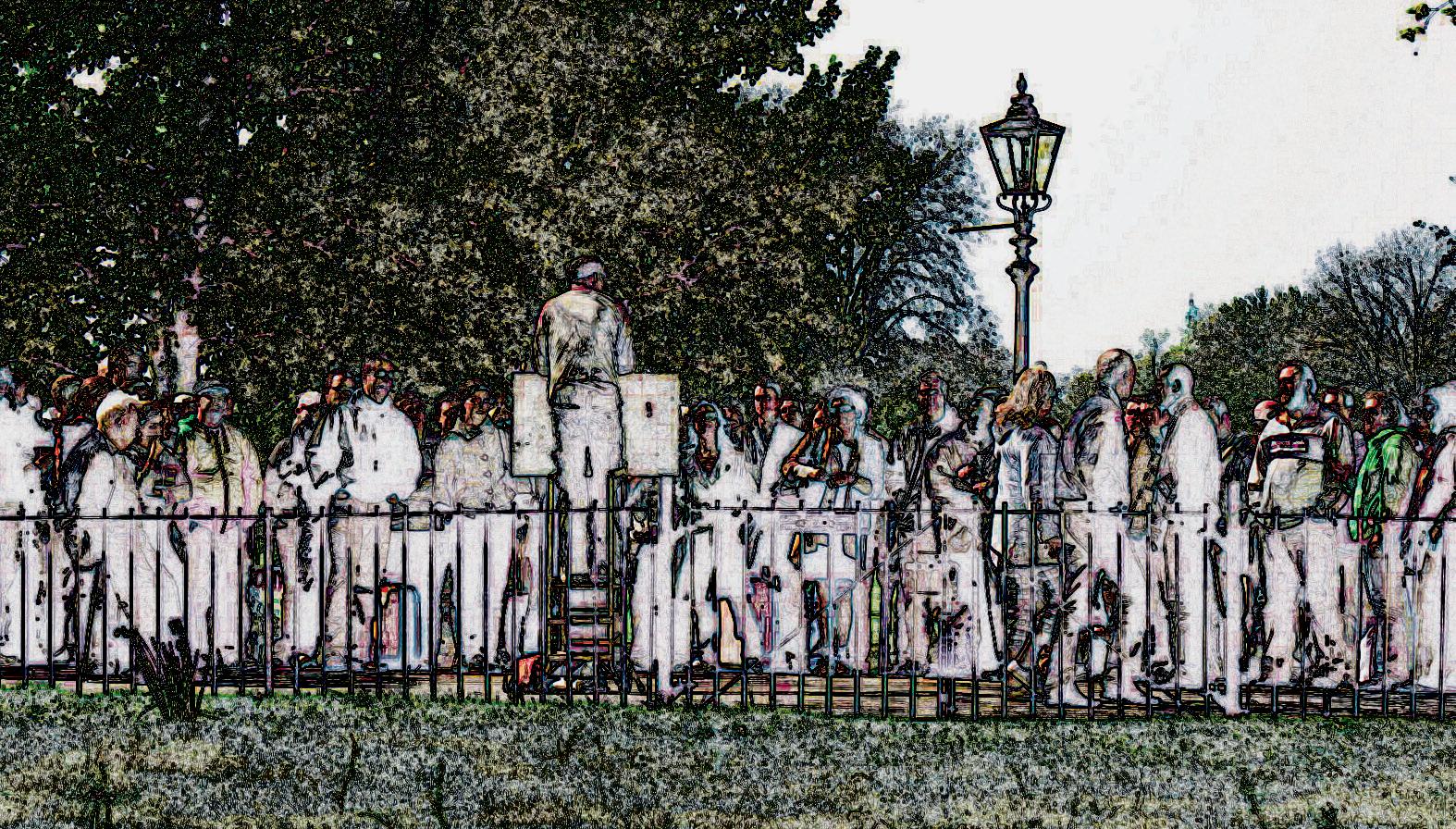
Little wonder, then, that quite a few future parliamentarians of all hues from the emerging democracies honed their debating skills in this vibrant corner. As was expected, the black, brown and in between coloured faces in the gathering outnumbered white faces by two to one. The latter group were mostly IRA, Save Jesus and Salvation Army groups with some fellow travellers from the lunatic fringe thrown in.
The Kikiyu uprising was a hot topic and there were quite a few speakers, including a sprinkling of white speakers patronisingly taking the cudgel for the downtrodden blacks of Africa. One of them turned out to be a communist of the Russian variety .He had recently paid a visit to Karl Marx grave and was uncontrollably charged!
There was a flurry of clappings and colourful invectives as one can associate with a heterogeneous public gathering of this kind. The guardian of the English law was a solitary unarmed policeman attired in his usual black uniform and typical elongated helmet displaying a nickel coated badge proclaiming his rank and a black leather strap latched to his chin. The mere presence of this uniformed person, popularly called “the bobby,” technically representing the Crown, was enough to ensure peace. No room for any uncivil behaviour as the law in this regard was forthright. Once the Rubicon was crossed, the law took its course and the offender booked, taken prisoner and produced before a magistrate the following day.
Londoners congregated to this corner of their city for innocuous fun and the people were generally in a holiday mood.
That day, after the crowd had started melting away in ones and twos, Asgar and I too joined the slow but steady stream. Although it was nearly ten in the evening, it being summer there was ample daylight still left.
We casually drifted away to the nearest oak trees to ease ourselves in Indian style. A couple of yards separated us, but as soon as I heard Asgar speaking agitatedly I sensed that all was not well. In a flash I zipped up and ran towards him and realised he had been speaking to a tall bobby. The “law” in the mean time having parked his push bike against a nearby tree trunk was busy taking out his blue coloured note book. He had made his intensions very clear – to slap a fine of five pounds, a fortune for us in those days, for public nuisance, coupled with the defacing of Her Majesty’s property.
Asgar was not very articulate and the Bobby had found that out and did not object to someone more articulate acting as a good Samaritan to do the explaining for him. I pleaded with the policeman saying, “look here officer, my friend from Kenya is new to England like me and totally
unaware of the codes of conduct here (we jolly well were briefed about this at the High Commission!) and being his first time offence (a typical desi style of pleading), could he be let off with a verbal warning. My friend will provide his dig’s address besides bringing his passport as well as university identity card for you to examine.”
Surprisingly, the officer liked what I said and began putting his dreadful notebook back into his pocket. The next few moments he surprised me by asking if I was from India and if so from which part. This welcome change in the bobby’s mood encouraged me to reply in the affirmative adding that I was from Calcutta. No sooner did I finished saying so he gleefully told me that until about a year ago he had migrated from Calcutta where he worked as a traffic sergeant. The Railways and Police Force
We were students at the time and to save money stooped to all manner of tactics. The oddest of these was to keep the loo swing door open and let your mate in before closing and thereby save a penny
in those days were the largest employers of Anglo Indians. The bobby’s next move took me by total surprise. Asking Asgar to wait, he took me aside and in all seriousness advised me in colloquial Bengali to keep away from Asgar as he may well be a Kikui. That was a dirty word those days. Soon after, the bobby mounted his bike and headed towards the general direction of Marble Arch.
I had been instrumental in bailing out Asgar on another occasion previously when to my horror he was merrily using the bath tub as a bucket sub-continental style and pouring tumbler full of water over head much to the chagrin of Mrs. Kelley. But that’s another story, to be narrated some other time.
AUGUST (1) 2011 <> 95 NATIONAL EDITION
www.indianlink.com.au BACKCHAT
Many years down the road, a brush with a London “bobby” remains a happy tailnote in the memories of this writer


96 <> AUGUST (1) 2011 INDIAN LINK TREVISANI Italian Restaurant 352 Mann Street North Gosford NSW Contact us on 0400800428 0421992354 Cook
Eligible candidate should be experienced and well qualified. Desired qualification is Certificate III. 1 hour drive from Hornsby, located in regional Australia. Preference for own transport. Owner is willing to sponsor eligible candidate under RSMS scheme.
Required

AUGUST (1) 2011 <> 97 NATIONAL EDITION


98 <> AUGUST (1) 2011 INDIAN LINK
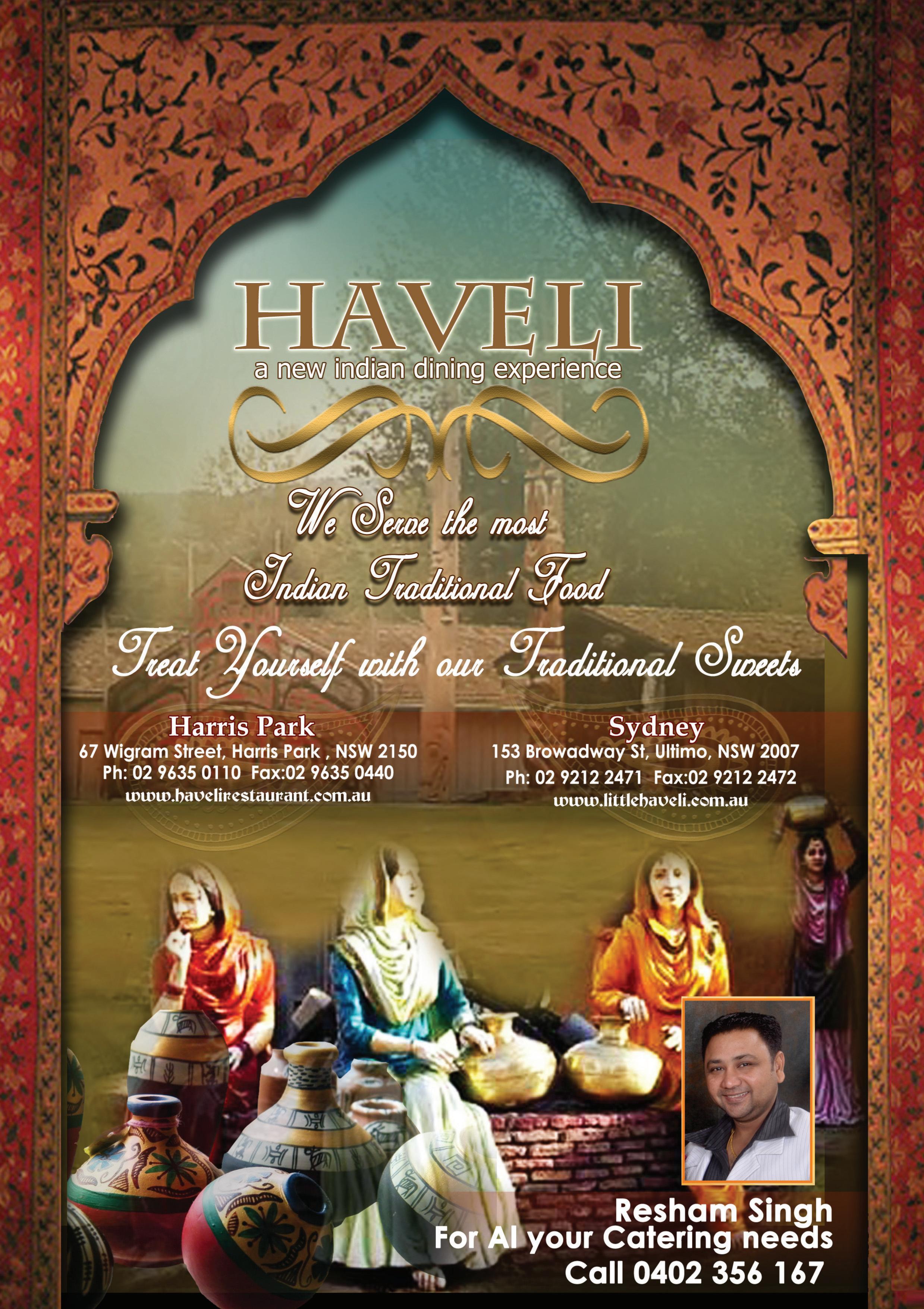
AUGUST (1) 2011 <> 99 NATIONAL EDITION







































































 Vidya Muthanna
Vidya Muthanna












































































 Rajni Luthra
Rajni Luthra
















































































































































